F ish F armer




LAND BASED
New RAS projects around the world
Will the industry expand offshore?




Sea lice





Why fish farms may not be to blame




Lumpfish Conference
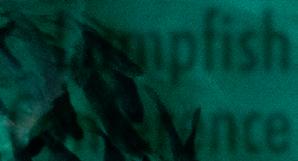
PINK INVASION
How Pacific salmon threaten native species
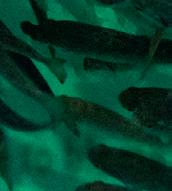
FEBRUARY 2023
► Powerful waterbased antifouling that offers excellent protection against fouling








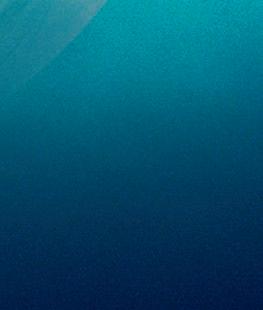
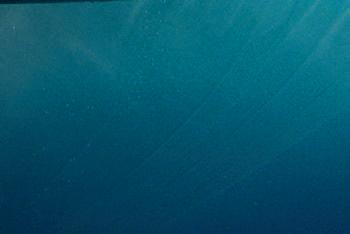

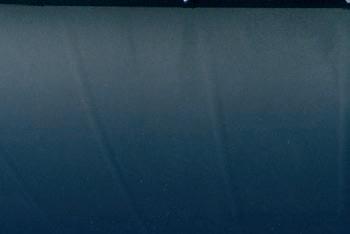


► Safe for the fish and for the environment
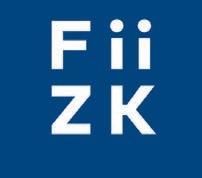


► Protects against UV radiation
► Controlled leaking of the active ingredient
► Contains no microplastics
► Based on 35 years of experience


Scan to read more FiiZK’s Freshwater Depot provides storage and instant access to water all year round. Supplying farmers with a reliable way to store water to avoid treatment delays. From 3.000-11.000 m3 storage capacity. Products from FiiZK are designed for farmers! uk.sales@fiizk.comwww.fiizk.com • Freshwater Depot 07.10.2022
E4 Greenline Slalåmveien 1, NO-1410 Kolbotn, Norway Ph.: +47 66 80 82 15 - post@netkem.no Probably the most sustainable antifouling product for pen nets
Netwax


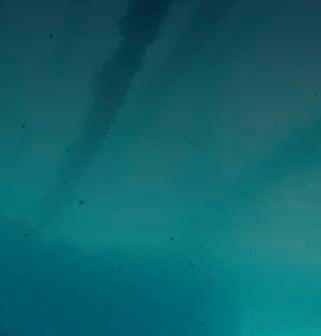
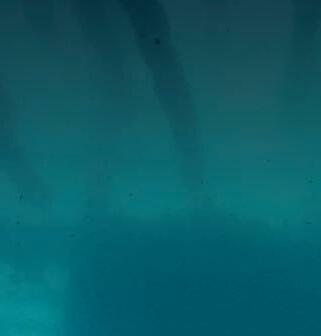
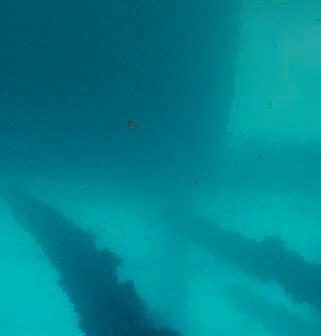


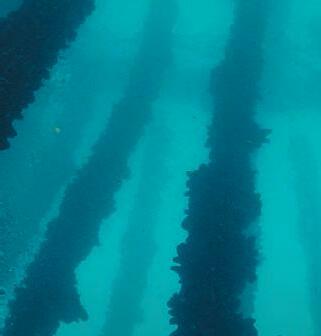







News What’s happening in the UK and around the world 6-21 Processing News Update from the processing sector 22-23 Comment Martin Jaffa 24-25 Salmon Scotland Tavish Scott 26-27 Shellfish Nicki Holmyard 28-29 Salvaging a Feed Barge Sandy Neil 30-31 Lumpfish Conference Report from SAIC’s cleaner fish event 32-33 Offshore Vince McDonagh 34-35 Wild Salmon Sandy Neil 36-37 Opinion John Aitchison, Coastal Communities Network 38-39 Sea Lice What the latest science tells us 40-47 Book Review Sea Lice Biology and Control 48 Anti-Fouling & Net Cleaning 49 US & Japan Vince McDonagh 50-51 Land-Based Farming & Hatcheries Robert Outram 52-56 RAS Design Berlin academics take the DIY route 58-59 Management Monitoring & Analysis Latest developments and products 60-61 What’s New Monthly update on industry innovations and solutions 62 Industry Diary All the latest aquaculture events, conferences and courses 63 Aqua Source Directory Find all you need for the industry 64-65 Opinion Nick Joy 66 In the February issue... F ish F armer www.fishfarmermagazine.com CONTENTS 4


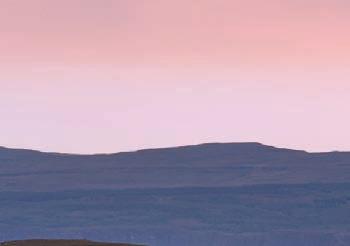



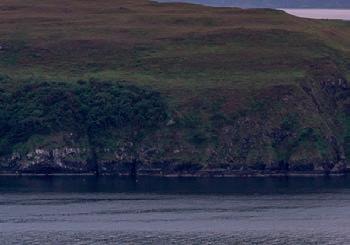




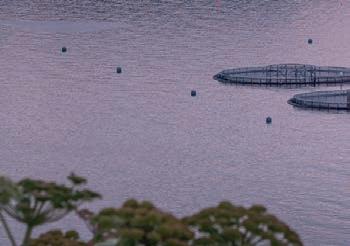

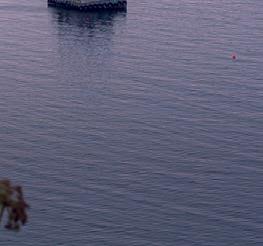


www.fishfarmermagazine.com 5
United Kingdom News
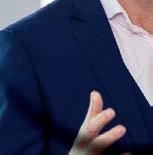

Storm over Scottish salmon mortality rates
SCOTLAND’S salmon industry has been defending itself against criticism after government figures showed that the number of salmon deaths on fish farms nearly doubled in 2022.
Figures from the Fish Health Inspectorate show that for the 11 months between January and November 2022, around 14.9 million salmon mortalities were recorded, compared with 8.58 million recorded for the whole of 2021 and just 5.81 million for the year before that.
The high mortality levels for 2022 are blamed by the industry on a spike around September linked with a high number of jellyfish blooms in the early autumn.
Observers around the Scottish coast noted a higher than usual number of jellyfish last year, but it is the hydrozoans or “micro-jellyfish” that present the biggest threat to fish health. Hydrozoans are not a parasite for salmonids, but can seriously damage their gills, sometimes fatally.

September 2022 saw a peak in monthly mortality of 4.65%, which was virtually matched in November (4.64%). The latest figures show that mortality in December fell to 3.28%.
Leading producers have already reported worse than normal biological issues in Scottish waters during 2022.
Mowi Scotland, for example, in its report for Q3, referred to a “troublesome year”, while in November Bakkafrost highlighted “significant biological challenges” around Loch Fyne on Scotland’s west coast, and East Lewis and Harris in the Hebrides.



Anti-fish farming campaigners attributed the scale of mortalities to overcrowding and poor care, but industry
body Salmon Scotland pointed out that the natural mortality rate for salmon in the wild is much higher.
Tavish Scott, Chief Executive of Salmon Scotland, said: “Wild Atlantic salmon has a survival rate of only around 1–2% compared with around 85% for a farm-raised salmon. “Throughout the year there will be different environmental pressures that affect survival rates. Farm-raised Scottish salmon typically face the biggest challenges in the autumn when seawater temperatures peak.

“Data we voluntarily publish shows survival of farm-raised salmon was consistently high during 2022 until September, when jellyfish blooms reduced survival to 95.3% that month; 2.4 points down on the past four-year average of 97.7%.”
He added: “Salmon farmers look after their fish daily, and do everything they can to provide world-leading animal health and welfare standards, so it’s devastating when the fish in their care fall to naturally occurring challenges.
“We are working with industry and academia to develop an early-warning system that helps to safeguard fish from jellyfish blooms in the future.”
Scottish fish farmers are also investing in post-smolt facilities so that fish can get the opportunity to develop further before being exposed to the ocean environment.
Top: Hydrozoans or "micro-jellyfish"
Above: Tavish Scott


www.fishfarmermagazine.com 6 UNITED KINGDOM NEWS
Aquaculture trainees shortlisted for ALBAS awards
TWO aquaculture trainees, from Bakkafrost and Scottish Sea Farms, have been shortlisted for Lantra Scotland’s Awards for Landbased and Aquaculture Skills (the ALBAS).

The awards, which take place on Thursday 9 March in Dunblane, recognise training and education excellence in land- and marine-based farming.
Craig Johnstone, from Tarbert in Argyll and Bute, has been doing a Technical Apprenticeship in Aquaculture through UHI Shetland,while working as a Site Manager for Bakkafrost Scotland.

He said: “Coming from Tarbert and having family involved in aquaculture, it was natural for me to follow in their footsteps. I love the community culture of the industry and there is so much to learn. My apprenticeship has taught me to reach for my goals and helped me overcome all the challenges that have come my way.”
Lori Smith, from Bixter in Shetland, has been doing a Modern Apprenticeship
in Aquaculture through UHI Shetland while working as a Fish Technician for Scottish Sea Farms. She said: “I was born and brought up in the Shetland Islands, where aquaculture is one of our core industries, so naturally I developed an interest in the sector. I love how varied my role is and how each day is different. Every day you are aiming to provide the best care for the fish, which is very rewarding.”
Lantra Scotland is a charity that
works to increase the number and diversity of employees in the landbased, aquaculture and environmental conservation sector, and drive their skills development.
Industry categories at this year’s ALBAS include agriculture, aquaculture, equine, game and wildlife, horticulture, land-based engineering, and trees and timber.
As well as prizes for O verall W inner, Runner-up and Modern Apprentice of the Year, there are also prizes for Higher Education, School Pupil and Secondary Schools, CARAS (Council for Awards of Agricultural Societies), a Mentor award for inspirational tutor, the Tam Tod Trophy and the Anna Murray Award for Partnership Working.
Finalists for ALBAS 2023 were selected by an independent judging panel made up of influential figures from across the land-based and aquaculture sector chaired by Keith Paterson of Forestry and Land Scotland.
Brazilian chefs get a taste of Scotland
FOUR top Brazilian sushi chefs have taken part in a trade mission around Scotland designed to promote UK seafood and boost exports to South America.

Regis Sasaki, Marcelo Shiraishi, Luiz Hirata and Cris Mori, all renowned sushi chefs in Brazil, took part in a five-day trade visit to learn about various UK seafood species across Scotland.
Brazil is home to the largest Japanese community outside of Japan and sushi is extremely popular in Brazil, with São Paolo home to 500 Japanese restaurants, five of which have Michelin stars.
The trade mission was organised by the Department for International Trade, in partnership with DEFRA, to promote UK seafood and encourage the chefs to consider importing fish from the UK.
It was delivered through the UK government’s £1m Seafood Export Package, part of the £100m UK Seafood Fund.
The chefs’ trip, supported by Seafood Scotland, saw them cook with locally produced whisky and gin at Arbikie Distillery, before visiting Peterhead Fish Market.
While there they also had a tour of the nearby Denholm Seafoods Processing Factory, before travelling to the West Coast where they met with the owner of Caledonian Oysters and had a tour of Bakkafrost Scotland’s salmon farm in Loch Fyne.
In Edinburgh, the delegation enjoyed a tour around Welch’s Fish Market and Fishmongers at the historic Newhaven Harbour, before finishing the trip at Harajaku Kitchen, where they carried out a cooking demonstration with the chefs there.
Shiraishi is the President of the Brazilian Association of Japanese Gastronomy and Administrative Manager of Restaurante Aizomê in São Paulo, which has won several awards for its quality and tradition in oriental cuisine. Speaking after the visit, he said: “If I were to define
the Scottish market in one word, that word would be quality. That’s because we could see, in Peterhead’s Fish Market, the high level of requirement regarding the tracking of the ingredients.
“This means that people know exactly where the fish that are consumed came from, how they were fished and in which region. This are all very relevant information for the final consumer.
“Another thing that caught our attention was the salmon farming –avoiding the use of antibiotics, the cleaning and the care while dealing with the species. These factors are extremely positive.”
www.fishfarmermagazine.com 7
Above: Chefs on the Scottish Salmon Mission (from left): Regis Sasaki, Chris Mori, Marcelo Shiraishi and Luiz Hirata
Above L-R: Craig Johnstone; Lori Smith
NEWS IN BRIEF
Donna Fordyce joins Export Council
THE Chief Executive of trade body Seafood Scotland, Donna Fordyce, has joined a top-level council that aims to boost food and drink exports across the four UK nations.
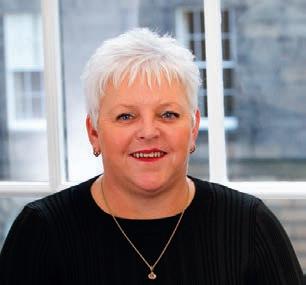
She will be the only seafood expert on the newly created
Scottish youngsters to learn more about jobs in salmon sector
Food and Drink Export Council, which was established following a recommendation from the Trade and Agricultural Commission, bringing together the UK government, the devolved administrations and industry. Fordyce said: “Premium Scottish seafood is highly prized in many key markets around the world, so I am honoured to be able to contribute to this new Council, which is very much focused on actions. By collaborating and sharing expertise, we can support food and drink producers across the UK to not only increase exports to existing markets, but to identify new opportunities too.”
Belfast veterinary expert takes on international role
LEADING veterinary expert Dr Simon Doherty has been named Director at Large for Europe within the Executive Board of the World Aquatic Veterinary Medical Association (WAVMA).
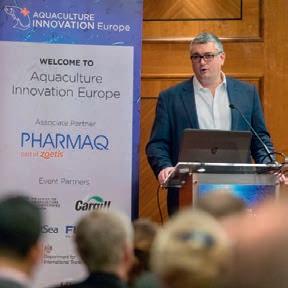
Dr Doherty is an academic at the Institute for Global Food Security (IGFS) and School of Biological Sciences at Queen's University Belfast. He is a Past President of the British Veterinary Association (BVA) and currently chairs the BVA Sustainable Aquaculture Working Group.
Right: Dr Simon Doherty
Mowi serves up ITV sponsorship deal
SALMON producer Mowi is the sponsor for a new TV game show featuring top chef Gordon Ramsay and a group of contestants determined to show that they have the skills to make their own name in the restaurant business. Next Level Chef is running on ITV1, STV and ITVX. Ramsay will be accompanied as host by chefs Paul Ainsworth and Nyesha Arrington.

James Cowan, Head of Sales for Mowi Consumer Products, said: “Partnering with Next Level Chef places Mowi Scottish Salmon in consideration for a special meal at home. Mowi is perfect to create restaurant-worthy meals, being the best of the best of Scottish salmon, prepared for beautiful presentation and ease of cooking.We wish all the contestants the best of luck.”
• See Comment, page 24
INDUSTRY body Salmon Scotland is rolling out a programme to spread the word to young people about career opportunities in aquaculture.
Salmon Scotland member companies will be visiting career fairs and staging several bespoke Scottish salmon-specific events for school pupils in farming areas between now and summer.
The sector will also be represented at events designed to help college leavers find full-time, well-paid employment following their studies.
Salmon Scotland estimates that salmon farming directly employs more than 2,500 people in fragile coastal communities in rural Scotland, with a further 10,000 Scottish jobs dependent on the sector.
The initiative got under way at the end of January when Dunoon Grammar School pupils at a careers fair were offered the opportunity to meet those working in aquaculture and discover the career options open to them.

The event included an introduction to farm-raised Scottish salmon and the chance to wear some of the equipment used by local salmon farmers.
Other interactive activities included a microscope with a plankton sample and a laptop with live footage of salmon farms.
Local employers Bakkafrost Scotland, Hendrix Genetics,and Otter Ferry Seafood joined other companies at the career fair, which has been organised by Developing the Young Workforce Argyll and Bute.
Tavish Scott, Chief Executive of Salmon Scotland, said: “The farm-raised Scottish salmon sector is responsible for creating thousands of high-paid, skilled and rewarding jobs right across the country.
“We want to help the next generation of young people with their futures and talk to them about careers in salmon farming.
“There are a huge number of different roles in aquaculture and we need young people, especially women, to join us in looking after our world-leading salmon as we feed not only Scotland, but the wider world.”
www.fishfarmermagazine.com 8 UNITED KINGDOM NEWS
Above: Apprentice at a fish farm
Above: Donna Fordyce
Aquaculture industry leaders join SAIC board




THREE senior figures in Scottish aquaculture have joined the board of the Sustainable Aquaculture Innovation Centre (SAIC). Joining the SAIC board are Anne Anderson, Head of Sustainability and Development at Scottish Sea Farms; Su Cox, Communications and Business Development director at Bakkafrost Scotland; and Hervé Migaud, Director of Health, Welfare and Biology at Mowi Scotland. Together they bring more than 30 years of aquaculture leadership experience, as well as academic and regulatory expertise.
Before joining Scottish Sea Farms in 2021, Anderson spent 22 years with the Scottish Environment Protection Agency (SEPA), latterly as Chief Officer of Compliance and Beyond. She then left the public sector for the private to take up the role of Sustainability Director with Salmon Scotland (then known as the Scottish Salmon Producers Organisation), where she led a range of strategic projects including the Scottish Salmon Sustainability Charter. She said: “SAIC is a key force in the drive to find practical, effective solutions to sector challenges – from bringing together the right minds for the task, to championing the need for innovative projects in which emerging concepts can be trialled and tested –and I look forward to the opportunity to help
shape this vital work over coming years.”

Cox has more than 35 years of experience in the Scottish aquaculture sector working for different salmon producers. She is currently responsible for public affairs and stakeholder engagement at Bakkafrost Scotland, formerly the Scottish Salmon Company, and is also Chair of Scottish Quality Salmon.
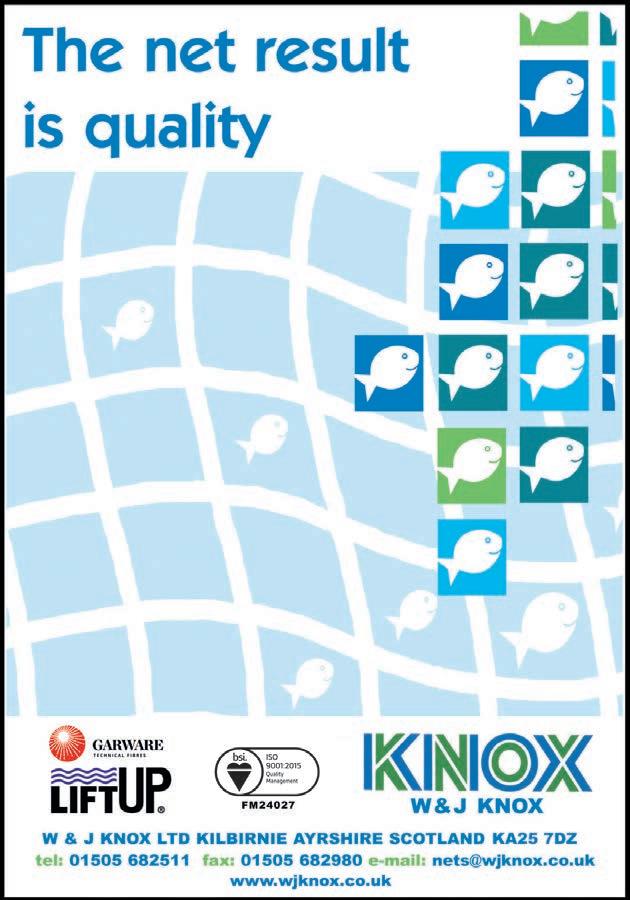

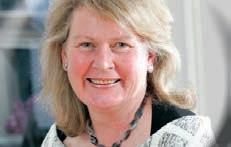


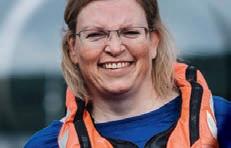

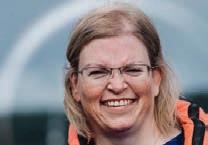
On joining SAIC, she said: “It's an honour to join the SAIC board and represent Bakkafrost Scotland. Sustainability is at the heart of our business, so our values are aligned to reduce the impact we have on the planet and increase the economic impact we have as an industry. Innovation and collaboration are key to future success.”
Following more than two decades in academia, Migaud joined Mowi’s Scottish operations in April last year to oversee fish health and welfare. He remains an honorary professor at the University of Stirling’s Institute of Aquaculture and was Head of the Production Research group until 2022. Migaud was also previously President of the European Aquaculture Society.
He commented: “Innovation has always been central throughout my career as a scientist and now as an industry director to improve the sustainability and resilience of the sector. SAIC plays an important role towards meeting this goal by bringing together academia and industry leaders.”
• Fish Cage Nets
– Nylon & HDPE





• Predator Solutions
• Net Service Plant
• Treatment Tarpaulins

• Lice Skirts


• Supplier of LiFT-UP

• Wrasse Hides

www.fishfarmermagazine.com 9
From the top: Anne Anderson; Su Cox; Hervé Migaud
The Blue Food Innovation Summit is back!
IN May this year, the Blue Food Innovation Summit returns to London for another look at the future of aquaculture and ocean health.
Taking place on 23–24 May, the summit brings together groundbreaking companies from around the globe to discuss forwardthinking approaches to aquatic food production, including sustainable aquafeed, seaweed, fish health and welfare, and digital platforms for smallholder farmers. Speakers include, to highlight just a few: Amy Novogratz, Managing Partner, AquaSpark; Jennifer Bushman, CMO, Kvarøy Arctic; Ohad Maiman, founder and former CEO,The Kingfish Company; Melanie Siggs, Director of Strategic Engagements,
Global Seafood Alliance; and Thor Talseth, Group CEO, Avramar.
Topics to be covered at the summit include:
• ocean data – scaling solutions in restorative and sustainable aquaculture;
• empowering small scale farmers;
• aquatic health and welfare;




• expanding the horizon for recirculating aquaculture systems (RAS);



• blue investment;


• Sustainable aquafeed;




• accelerating the seafood revolution; and
• unlocking blue carbon.
From producers, feed suppliers and health providers to retailers, investors and innovators, the summit provides stakeholders from across the value chain with a vital platform for knowledge exchange and networking through interactive panels, breakout discussions, and quality one-toone meetings.
Blue Food Innovation Summit, London, 23–24 May.To book or for more details, go online to www.bluefoodinnovation.com
Seed funding announced for aquaculture projects
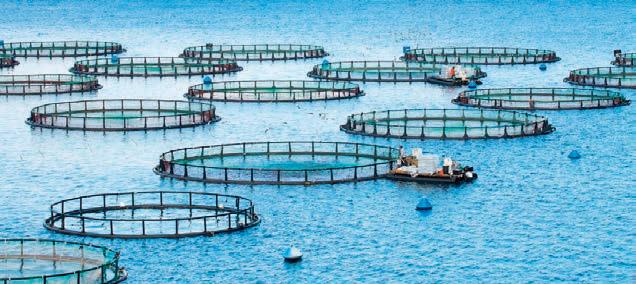
SEAWEED cultivation, cleaner fish life cycle assessment and the carbon footprint of Pangasius (basa) roduction are among the topics covered by four seed funding projects announced by the Centre for Innovation Excellence in Livestock (CIEL). They are the first aquaculture projects to be funded by CIEL, which was set up by the UK government as one of four AgriTech centres.
CIEL added aquaculture to its remit last year. The themes for the latest seed funding round are:
• seaweed mariculture and, specifically, the application of seaweed as a feed for livestock; and

• life cycle assessment (LCA) of aquaculture species.
Martin Sutcliffe, CIEL’s Aquaculture Specialist, said: “CIEL works collaboratively across the agrifood sector, encouraging knowledge exchange while utilising the academic expertise that underpins the Centre’s network. Bringing agrifood and aquaculture together is one of the main goals of this work.
“These are ‘seed’ projects designed to be developed further in the future, helping to drive the industry forward.”
The selected seaweed project involves startup company, Seaweed Generation Ltd, which will be looking at growing protein as feed for egg-laying hens. Nutrient analysis of the content of the seaweeds will be undertaken by
the University of Stirling.
Another project, led by Hilton Foods, will evaluate greenhouse gases (GHGs) from farms in Vietnam producing basa destined for consumption in the UK. The project will also allow Hilton to ensure its GHG reporting is accurate and to target carbon reduction improvements at farm level.
A third project involves assessing LCA for warm-water prawns in the UK. The project, led by Land Ocean Farm, which aims to produce prawns in the UK for the home market, aims to estimate what its carbon footprint could be.
The fourth project is focused on enhancing the LCA of cleaner fish. Led by feed specialist Anpario, this project will focus on the effect of functional feed ingredients on the performance, immune system and microbiome of juvenile ballan wrasse.
Mowi Scotland set to invest in new broodstock facility
MOWI is planning to invest in a new bespoke broodstock and egg facility in the north-west of Scotland

The development will be located at Ardessie, on the shores of Little Loch Broom.When complete, the company said, it will offer eight to 10 direct new jobs and supply-chain opportunities to the local region.
The production of broodstock – a vital link in the company’s value chain – is intended to secure egg supply for Mowi Scotland. The company also hopes to supply other producers, improving the position for the salmon farming sector in Scotland as a whole. Currently reliant on external supply, Mowi wishes to secure its national breeding goals and egg supply in Scotland, thus enabling the company to select parent fish whose offspring will be most robust to the specific challenges faced locally, and providing significant advances in survival and performance.
The development will replace an old hatchery building currently on the site. The new facility will boast state-of-the-art technology, including self-contained recirculating aquaculture
systems (RAS) and temperature control.
The building design – by Convery Prenty Shields (CPS) Architects – was developed to take account of its surrounding environment, allowing the building to nestle quietly into the rural landscape.
Mowi said a community engagement process would be conducted as the project develops.
www.fishfarmermagazine.com 10 UNITED KINGDOM NEWS
Above: Martin Sutcliffe
Community internet firm nets salmon farmers’ support
SALMON farmers Mowi and Scottish Sea Farms are supporting a community enterprise that aims to bring high-speed broadband to some of Scotland’s most isolated communities.
The farmers are helping to fund community interest company HebNet, which provides broadband coverage to parts of the Highlands and Islands that large providers do not cover.
HebNet operates in Elgol on the Isle of Skye, the Small Isles (Eigg, Rum, Muck and Canna) and the Knoydart Peninsula, a remote part of the Scottish mainland.
HebNet decided to invest in a boat in 2021, cutting journey times on the road and reducing reliance on public ferries.
The 5.5m rigid inflatable boat (RIB) has proved a valuable asset, but now needs repairs to maintain reliability, so HebNet applied to Mowi and Scottish Sea Farms for help with meeting the costs.
The internet access provided by HebNet has been invaluable to the aquaculture operators, ensuring that remote feeding and monitoring systems have high-speed, high-capacity connection to their shore bases, while also improving employee safety.
Local residents have also been able to access popular streaming services such as Netflix and Amazon, as well as work from home, with fast broadband that is on a par with central Scotland’s.
“The areas we operate in are very challenging,” said HebNet Director Ian Bolas, who is based on Rum in the Small Isles. “At the moment, we’re putting fibre optic in new locations, including Elgol on Skye and Canna. However, one of the biggest challenges we’ve had is getting to these places, often at short notice.”
The RIB has already made a difference, he added, but in order to “future-proof” the vessel, HebNet has received a total of £8,500 from Mowi and Scottish Sea Farms.
Scottish Sea Farms, which worked with HebNet previously to install superfast broadband in Knoydart and Loch Nevis, would not be able to operate the high-tech equipment on its feed barges without the internet connectivity, according to IT Operations and Infrastructure Leader Colin Kupris.
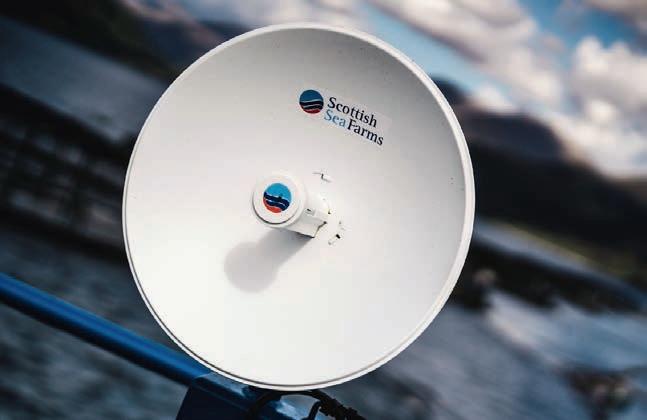
He said: “If it wasn’t for HebNet, we would have great difficulty providing connectivity to the farms in Loch Nevis because it’s a very challenging area – 15 to 30 minutes’ commute by sea – with no other internet or mobile phone coverage.
“As well as facilitating daily data updates and generally keeping in touch with the outside world, the service enables remote feeding and monitoring, which ensures fish are fed as and when needed, whatever the weather conditions.”
Scottish government publishes wild salmon conservation plan
• understanding pressures in marine and coastal environment;
• international collaborations;
• modernising legislation; and
• improving the condition of rivers
The plan brings together a range of actions being undertaken across government that will benefit wild salmon recovery. Examples include improving salmon habitat through peatland restoration to improve water quality, improving wastewater treatment works and removing more than 90 barriers to migration, such as weirs associated with historic industry.
Salmon are sensitive to rising water temperatures, and riverside tree planting projects, which help keep river waters cool, will increase, while the approach to water scarcity will be reviewed.
salmon fishing season on the River Tweed, Rural Affairs Secretary Mairi Gougeon said: “It is vital that we act together at home and overseas, using our collective resource, knowledge and expertise, to ensure a bright future for this iconic species. The plan, working with a range of partners, addresses the issue with a wide variety of actions.
“Crucially, it is dynamic and adaptable, so the work to support salmon restoration can be adjusted as we gain greater insight into the challenges and success of mitigating actions.”
The plan also refers to the Scottish government’s response, published in October 2021, to the recommendations made by the Salmon Interactions Working Group (SIWG).
THE Scottish government has published a comprehensive plan aimed at ensuring the recovery of the country's wild Atlantic salmon populations.
Developed in partnership with stakeholders, the Wild Salmon Strategy Implementation Plan covers five priority themes:
• managing recreational angling;
A delivery group involving a range of stakeholders will oversee progress of the plan and publish an annual report, while a Scientific Advisory Board will be established to coordinate research and monitoring activities.
The government is also committed to carrying out an analysis of the environmental and socioeconomic benefits arising from a healthy wild salmon population.

Launching the plan at the opening of the
These include an ongoing consultation by the Scottish Environment Protection Agency (SEPA) on proposals for an “adaptive spatially based risk assessment framework” for fish farms to help minimise the impact of sea lice on wild salmonids, which will be applied through the Water Environment (Controlled Activities) (Scotland) Regulations 2011.
The Scottish government has also pledged to make fish farm containment measures and regulation more robust, including the introduction of penalties for fish farm escapes.
www.fishfarmermagazine.com 11
Above: Mairi Gougeon performing the traditional blessing of the river by pouring a measure of whisky (12-year-old Glenkinchie) into the Tweed
Norcod may be forced to harvest early
NORCOD has been told by Norway’s Directorate of Fisheries that it could be forced into an early harvest because its fish are reaching sexual maturation too early.

The Directorate has found that a sampling from one of the company’s cod farms will mature for spawning ahead of its planned harvest.
In a Stock Exchange announcement this week, Norcod reported that the Directorate is considering imposing measures that will imply an accelerated harvesting process compared with the originally approved plans.
Norcod also conceded that maturation and accelerated harvesting would have an impact on the company’s previous estimated biomass, size of fish and the aggregate volume ready for harvesting.
It said the D irectorate had asked the company to provide complementary information along with its views as to how the findings may best be dealt with within an environmentally sound framework.
The statement added: “Norcod will respond to the Directorate’s request through making further investigations and analyses, which will then be sent to it to provide the best
possible basis to consider the extent of this matter and which measures may reasonably be implemented, including any need for an accelerated harvesting of the fish.
In November, Norcod delivered an optimistic third-quarter assessment of its future operations.
The Norwegian business announced considerably reduced losses from NOK 16.5m (£1.4m) for the same period in 2021 to NOK 3m (£254,000) in Q3 2022.
It also reported that, with countries reducing fishing quotas, farmed cod was well placed to take on a more important role in the market.
Confused picture on Norway’s salmon tax
SHARE prices for Norway’s leading salmon companies have been on a rollercoaster ride following mixed signals from the country’s coalition government over its proposed salmon tax.
The salmon tax or “ground rent tax” is intended to charge fish farmers for the natural resources they are using, but the industry has complained that the tax as proposed, which would effectively levy 40% of the producers’ revenue, is being set at too high a level.
In late January, Geir Pollestad, a Centre Party politician and a member of the Parliamentary Standing Committee on Finance and Economic Affairs, said in an interview with the newspaper Dagbladet, that the government would approach the issue with an open mind, saying the 40% figure was off the table.

Salmon company shares such as Mowi, SalMar and Lerøy Seafood Group shot up as a result of those comments, with a number of brokerage houses
speculating that the rate could come down to as low as 25% or less.
Reports from Oslo suggested the ground rent tax could be around the 15% mark, while other analysts suggested a rate of around 25%.
Brokerage house DNB Markets said the sector should start to factor in a lower figure than 40%.
Britain’s Barclays Bank also set new higher share price targets on all three companies.
Shortly afterwards, however, Finance Minister Trygve Vedum – who also leads the Centre Party – took issue with Dagbladet’s interpretation of the interview. Vedum, speaking to Finansavisen and e.24, two of Norway’s leading financial news outlets, said his view was that the original figure of 40% should remain.
He told e24 that the government did not want to base the tax on a system where, in years when earnings were poor, companies paid the same amount as when revenues were at a high level.
The tax, as currently proposed, is calculated to earn Norway’s Treasury NOK 4bn a year (around £335m).
But Vedum also explained that the proceeds would change from year to year, adding that if profits were high the government, the salmon farming communities and the industry would benefit at the same time.
Vedum told Finansavisen more or less the same, stressing that the ability of companies to pay based on their profits would be the key.
Some amendments are expected and his final proposal is due to be put before Norway’s Parliament, the Storting, probably in late March.
www.fishfarmermagazine.com 12 EUROPEAN NEWS European News
Left: Trygve Slagsvold Vedum
Left: A Norcod farm
Cod overtakes salmon in Norway fish escapes
NORWAY’S Fisheries Directorate says the pattern of farmed fish escapes is changing, with salmon no longer the main culprit.
The highest number of escapes in the country’s fish farms last year was from cod farming facilities, it reports.
The Directorate says the change is a signal that other types of aquaculture now need to be told of the impact most escapes can have on the environment and wild fish, and how to handle such incidents. A total of 103 incidents were reported to the organisation in 2022, of which 40 involved escapes. Most of those took place during work operations, especially in connection with deworming.
Britt Leikvoll, Section Manager at the Directorate’s strategic aquaculture section, said: “Results from the inspection campaign show that there is a need for improvement and increased competence in the companies’ risk management, and we will follow this up in 2023.”

Of the 160,000 escapes reported last year, 87,000 involved cod. This reflects a single incident in the Volda municipality four months ago when 87,000 fish got out of a farm run by Gadus.
The Directorate report said: “Recently, there has been an increase in the number of new applications and permits granted for cod aquaculture. With the establishment of new farming species also come new issues related to both their environmental impact and adaptation of regulations.”




Following the Gadus incident, the Directorate and Norway’s Institute of Marine Research have got together to carry out a further study on the environmental consequences of cod escapes.

They say recapturing cod can be challenging, so this year they plan to carry out further research work involving the cod farming sector.
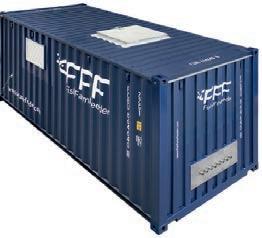
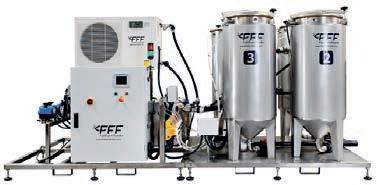
Meanwhile, Chile is planning tougher laws on salmon escapes. The country’s congress is voting through a series of financial measures, which include severe fines and the suspension of operations at escape sites for companies that are found to be negligent.

www.fishfarmermagazine.com 13
Above: Atlantic cod
Right: Britt Leikvoll
Christensen starts as Danish Aquaculture chief
of parliament with the right of centre People’s Party, had previously acted as an adviser with the organisation. He was a member of the Danish Parliament from 2008 to 2022 and for 13 years was Chairman of the Parliament’s Environment and Food Committee.
SalMar and Lerøy report higher Q4 farmed fish harvests
RENÉ Christensen has taken up his position as the new Director of industry trade group Danish Aquaculture (Dansk Akvakultur). Christensen, who was a member

Christensen said: “I have been given an incredibly exciting opportunity. Danish Aquaculture is the mouthpiece for a very exciting industry that creates development in rural areas and does something good for the climate.”
Former Mowi Ireland chief wins case against the company over share option rights
JAN Feenstra, the former Head of Mowi Ireland, has been awarded more than £100,000 in a civil case against his former employer over a share option scheme. Feenstra had been prevented from taking up company stock options in the period between giving notice of his resignation and his final day with the company, thus losing out on a favourable deal.
He demanded compensation, claiming breach of contract. Oslo District Court found in the former executive’s favour and ordered Mowi to pay just under NOK
1.13m (£93,000) plus NOK 168,000 (£14,000). Mowi said it would study the judgement before taking a decision about what to do next, but an appeal is possible.
Salmon Evolution confirms Schaug-Pettersen as CEO

LAND-based fish farmer Salmon Evolution has named Trond Håkon Schaug-Pettersen as its Chief Executive Officer. He has
previously covered the role on an interim basis. The company has also appointed Trond Vadset Veibust as Chief Financial Officer.
SALMAR and Lerøy Seafood, two of Norway’s largest salmon producers, have announced higher 2022 final-quarter harvests in separate trading updates.

Both companies share ownership of Scottish Sea Farms, but that company’s performance will not become known until the full results are published. As this issue went to press, these figures were expected later in February.
SalMar’s Q4 harvest was 62,700 tonnes (11% up on the 56,400 tonnes in Q4 2021), made up as follows:
• farming in Central Norway – 32,600 tonnes;
• farming Northern Norway – 24,100 tonnes; and
• Icelandic Salmon – 6,000 tonnes.
The company’s total output from Norway and Iceland for 2022 totalled 193,700 tonnes, which is more than 10,000 tonnes higher than the 2021 figure.
The 2022 total is made up of:
• farming Central Norway – 114,100 tonnes;
• farming Northern Norway – 63,400 tonnes; and
• Icelandic Salmon – 16,100 tonnes.
It was a dramatic year for SalMar, which acquired the NTS group following a protracted and sometimes angry takeover battle.
SalMar has since become the world’s second largest salmon farmer following the acquisition of NTS, and will publish its full Q4 2022 report on 22 February.
This includes Norway Royal Salmon and the Frøy aquaculture support business, which recently expanded further with the purchase of Marinus Aquaservice AS in January, with a deal that greatly strengthens its presence in south-west Norway.
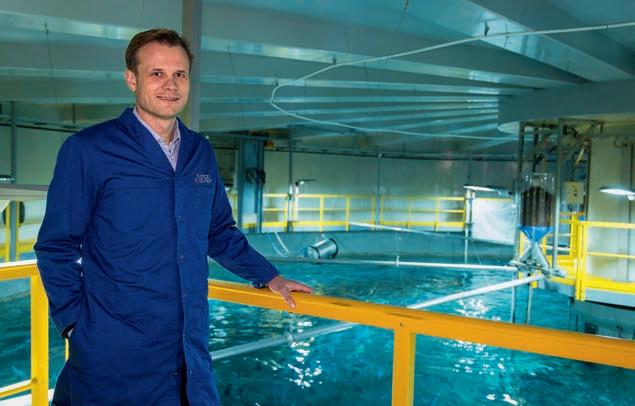
Meanwhile, Lerøy Seafood’s Q4 salmon and trout harvest, at 53,300 tonnes, is 2,000 tonnes higher than the same period in 2021. It was 174,600 tonnes for the full year, 12,000 tonnes down on 2021, a fall of just over 6%.
The Q4 trawler wild catch (Lerøy Havfisk) was 4,000 tonnes lower than a year ago at 13,100 tonnes, of which 5,700 tonnes was cod. The full-year catch, however, was slightly higher at 71,700 tonnes. The full Q4 report is due out on 21 February.
www.fishfarmermagazine.com 14 EUROPEAN NEWS NEWS IN
BRIEF
Above: Trond Håkon Schaug-Pettersen
Above: Workers at Lerøy
Above: Jan Feenstra
Above: René Christensen
Aquaculture expert named as next head of Nofima
NOFIMA, the Norwegian research and development organisation for the food industry, has announced two senior appointments. Bente Torstensen has been appointed as the organisation’s new Chief Executive, while Erik-Jan Lock will be the new Research Director for Nutrition and Feed Technology.

Torstensen will start her new role in the summer, taking over from Øyvind Fylling-Jensen, who is due to retire. For the past six years, she has worked in Nofima as Division Director for Aquaculture. She began her career as a researcher at Norway’s National Institute of Nutrition and Seafood Research (Nifes), progressing to Senior Researcher, Research Manager and Research Director. Before that time, she worked in Marine Harvest (now Mowi) as well as Nifes.
Torstensen is a member of the portfolio board of HAV in the Research Council of Norway, board member of the Tromso-based NCE Seafood Innovation Cluster, and Chairman and President of EAS, the European Aquaculture Society.

She takes over as Managing Director of Nofima on 25 June and will continue as Director for the Aquaculture division up to that time.
Lock is currently Head of Research for Food and Nutrition at the Institute of Marine Research, and holds the position of Adjunct
Professor at the University of Bergen. He will take up his new position at Nofima in March.
Lock has an MSc in Aquaculture and Fisheries from Wageningen University, and a PhD in Fish Physiology from Radboud University Nijmegen. He also previously worked at Nifes.
Cod farmer Statt Torsk scales back harvest plans
year, sticking to a strategy of supplying its pilot customer, a Spanish buyer, rather than selling on the open market. The company had initially expected to harvest 4,500 tonnes in 2023.
NORWEGIAN cod farmer
Statt Torsk has scaled down its harvest plans in order to focus on contracted deliveries rather than selling its fish on the spot market.
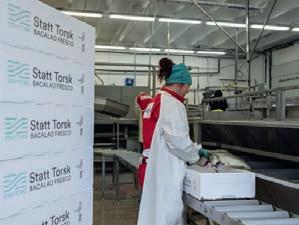
The company now expects to harvest 3,500 tonnes this
Announcing its harvest and sales plan, Statt Torsk (ST) said: “ST have had regular weekly deliveries to our pilot customer in Spain since September, with a gradual increase in volume according to plan. We now see that this model is scalable and a good foundation to build on. The main challenge now is to develop the market within
this strategy. This requires an efficient value chain and close coordination between harvest and sales, which has been our main focus.”
The company now has more fish than planned at its facilities, but it stressed: “This should have no negative consequences on issues such as fish health, product quality or other conditions.”
ST is also continuing to provide samples to Norwegian, Asian and other potential customers.
Last year, the company reported that it had won
approval for additional licences for seven MAB tranches (MAB = Maximum Allowed Biomass, 1 MAB = approx. 780 tonnes). This represents an expansion of three MAB in the existing facility in Rekvika, plus a new facility with four MAB at Apalset.
ST said: “This increases our maximum permitted production capacity by 144%, from 3,900 tonnes to 9,360 tonnes of biomass. These approvals are important building blocks [in] our longterm target of 12,000 tonnes/ year.”
Bremnes warns tax burden may halt new factory plan
NORWEGIAN salmon company Bremnes Seashore has warned that it may be forced to shelve plans for a new processing facility because of the Oslo government’s increasing tax burden on the industry.
The NOK 400m (£35m) factory and cold store is planned for Kvednavikjo in the south-west of the country.

The warning was delivered by Simon Nesse Økland, the family-owned company’s Communications Director, at the Aqkva Conference in Bergen in January. He said there would no money to build the factory if the latest plans for a “ground rent” tax go through.
Aqkva, which focuses on technology and general aquaculture development, is the first industry-related gathering of the year.
Økland said the tax burden was already too high, pointing to the wealth tax on family businesses, plus the dividend tax and now the proposed ground rent tax.Taken together, he said, the company could face a total tax rate of 80%.
He said there was no money to build the new Salma brand factory at Kvednavikjo, but a final decision would be made once the Storting (Norway’s parliament) had taken a decision on the ground rent tax.
Økland also said the tax proposals favoured foreign owners over those resident in Norway.
Bremnes Seashore is not only a family business – it is one of the country’s oldest seafood-related companies, with roots going back to the 1930s. It started fish farming in the 1960s, first with rainbow trout and later salmon.
It unveiled plans for a new processing facility more than a year ago to increase production for its SALMA and BOMLO brands. It was initially hoped to complete construction of the facility this year.
www.fishfarmermagazine.com 15
Above: Statt Torsk packing
Above: Bente Torstensen (L), Erik-Jan Lock (R)
Grieg Q4 hit by steep rise in production costs
The 2022 Q4 harvest was as follows (Q4 2021 figures in brackets):
• Norway Rogaland – 6,900 tonnes (7,300 tonnes);
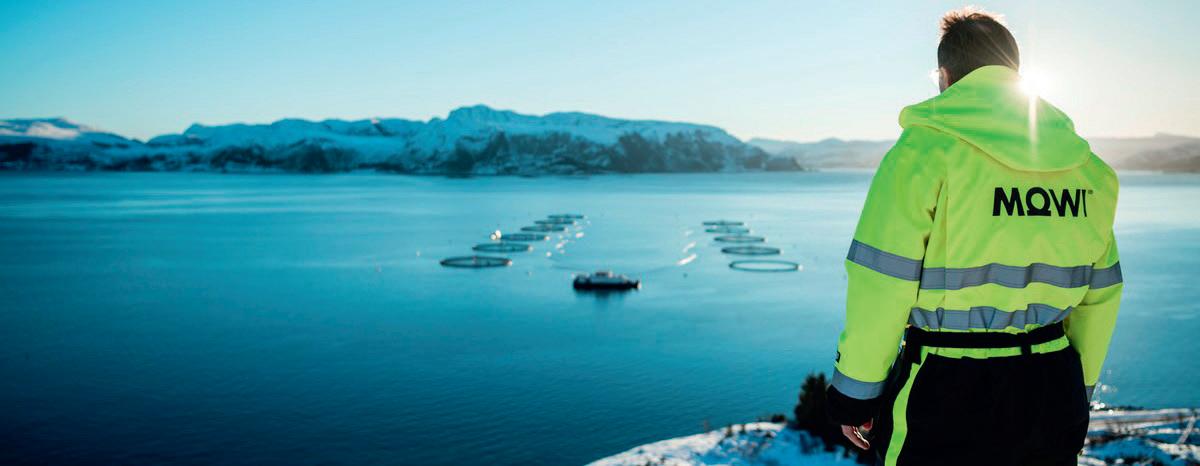
• Norway Finnmark – 12,800 tonnes (12,400 tonnes); and
• British Columbia – 1,500 tonnes (4,000m tonnes).
But it is average farming costs per kilo in both countries that are likely to raise a few eyebrows. In the case of Finnmark and British Columbia, they have gone up by around 40% over the past 12 months. The Norway Rogaland increase is less, but still high enough, at round 25%.
While revenues remain healthy, the Grieg figures certainly dispel the belief held in some political quarters that salmon companies are currently raking it in.
Cost inflation, which centres around feed, energy and transport, is becoming a big problem for many breeders with little respite in sight.
REVENUES for salmon producers may be on the rise, but so too are production costs. The 2022 final quarter trading update from Grieg Seafood showed that costs were up sharply on the same period in 2021.

Grieg reported a reduced harvest from both its Norwegian and British Columbian operations, with Canada down by more than half.
This makes a total of 21,200 tonnes for Q4, against 23,700 tonnes in the same period 12 months ago.
The Q4 2022 cost per kg figures were (Q4 2021 comparisons in brackets):
• Norway Rogaland – NOK 54.6 (NOK 43.6);
• Norway Finnmark – NOK 54.1 (NOK 38.1); and
• British Columbia – CA $13.3 ( CAN $9.4).
As this issue went to press, the full Grieg Q4 report, including revenues and operating profit, was due to be published on 16 February.
Mowi reports big rise in operating profit for Q4
MOWI reported an operating profit (EBIT) of € 239m (£213m) for the final quarter of 2022 – almost 64% higher than in the same period last year.
The star performer was Mowi Norway, while the group’s Scottish and Irish operations, which have been experiencing challenging biological issues, produced lower harvests than a year ago.
The total group harvest was 130,500 tonnes against 115,000 tonnes in Q4 2021.
The farming Scotland Q4 harvest was 10,500 tonnes, down by 1,500 tonnes on Q4 2021, while farming Ireland produced just 500 tonnes, against 1,500 tonnes 12 months earlier.
Farming Canada produced an unchanged total of 10,000 tonnes, while farming Chile saw its output increase by 2,000 tonnes to 18,500 tonnes.
Mowi said the operational EBIT in Consumer Products was € 42m ( € 26m in Q4 2021) and Feed € 17m ( € 8m in Q4 2021).
It added that the operational EBIT through the value chain for salmon of Irish origin was minus € 5m, due to very low volumes and challenging biology.
The reported financial net interest-bearing debt (NIBD) for the group was approximately € 1,760m (£1,575m) at the end of the quarter (excluding IFRS 16 effects), of which approximately € 70m (£63m) involved the purchase of a majority stake in the Icelandic company Arctic Fish.
Total operational EBIT per kg through the value chain was approximately as follows:
N orway – € 2.30 (£2.06)
S cotland – € 0.70 (£0.63)
C hile – € 1.10 (£0.98)
C anada West – € 2.15 (£1.92)
Faroes – € 1.75 (£1.57)
The complete Q4 2022 report was due to be released on 15 February.
www.fishfarmermagazine.com 16 EUROPEAN NEWS
Above: A Grieg fi sh farm
Helge Gåsø could be a bidder for Frøy
Nordic Halibut says production for 2023 is on target
NORDIC Halibut said it had exceeded its revenue target for last year and was ready to reach its phase one production goal.
The Norwegian-based company produces sushi-grade halibut and claims high-end markets have demonstrated a strong willingness to pay an established price level for quality farmed halibut.

During the final quarter of 2022, Nordic Halibut harvested 195 tonnes, heads on gutted (HOG), taking the total for last year to 537 tonnes.
Nordic Halibut said: “The company will continuously seek to optimise biomass utilisation and boost market conditions towards long-term production targets. Strategic allocation of harvest and sales volumes is key to maintaining high price achievement while building market position in new and existing channels in cooperation
with partners.”
The company said the production ramp-up was advancing according to plan, with an all-time high level of 700,800 fish put to sea during 2022. This is equivalent to a harvest volume of 3,500 tonnes (3,150 tonnes HOG) by 2025.
It added: “Through several production cycles, the company has proven stability and predictability in the sea phase production with one fish put to sea equal to 5kg harvested three years after release.”
This year, Nordic Halibut plans to put a million fish to sea, equivalent to 5,000 tonnes, or 4,500 tonnes HOG, by 2026.
NORWEGIAN businessman Helge Gåsø is reported to be interested in acquiring Frøy, the wellboat and aquaculture services business he founded.
Frøy’s current owner, SalMar, is carrying out an evaluation of Frøy. SalMar acquired the company as part of its takeover of the NTS group, which was completed in December.
SalMar, which owns 72% of Frøy, says it has started a strategic assessment of its ownership “in order to maximise the value to its shareholders”.
It has already received a number of inquiries from potential bidders. SalMar says the process has just started, suggesting it may be a while before there is a firm decision and stressing that it wants to do what is best for the company
It has also emerged that Gåsø, the man who founded Frøy, could be in line to buy it back. He has built up a “war chest” equivalent to £500m, largely from the sale of his NTS shares.
Gåsø is reported to have bought more than 500,000 shares in Frøy, which, with an existing holding, brings his stake in the company to 5%.
Frøy has grown into an attractive business offering a wide range of aquaculture support services, including more than 600 aqua service specialists, and a modern fleet of wellboats and support vessels.

Last month, Frøy entered into an agreement to buy 100% of the shares in another support business, Marinus Aquaservice AS, in a deal worth around NOK 101m (£8.4m). This gives Frøy a presence in south-west Norway where it currently has a limited foothold.
Marinus Aquaservice operates three modern vessels and has a major focus on remotely operated vehicle (ROV) services, a rapidly growing sub-segment of the marine services industry.
Suspected ISA forces SalMar into early slaughter
IN January, a suspected outbreak of infectious salmon anaemia (ISA) was being investigated at a Norwegian farm, run by salmon giant SalMar, containing around 900,000 salmon. The site is at Fartøyvika Måsøy municipality in Finnmark.

Even before the outbreak had been confirmed, SalMar decided to go ahead and slaughter the fish because they were at harvest size with an average weight of 5.4 kilos.
The Norwegian Food Safety Authority’s rules require the company to set up protection and monitoring zones. Traffic in the area around the site will be restricted and moving fish will require special permission.
Because the fish are at slaughter size, the outbreak should have little economic impact, the company said.
It is just over a year since the last ISA outbreak to affect SalMar. In December 2021, the disease was confirmed in the
Møre and Romsdal region. There have been a number of ISA outbreaks at various Norwegian farms over the past couple of months.
Shortly before Christmas, the disease was discovered at a site in Rogaland county where Grieg and Skretting AS farm salmon. Before that, an outbreak was reported at a Vestland County at a farm run by Sjøtroll Havbruk AS.
The Food Safety Authority stresses that ISA is not harmful to humans.
www.fishfarmermagazine.com 17
Above: The Froy Valkyrien
BC farmers set out principles for state’s ‘transition’ from net-pen
BRITISH Columbia’s salmon farmers have produced a report setting out their vision for the transition from the existing open net-pen system of aquaculture.

The BC Salmon Farmers Association report, BC Salmon Aquaculture Transition: Then & Now, stresses that the interests of the state’s indigenous First Nations must be at the heart of the transition strategy.
In July 2022, the Department of Fisheries and Oceans Canada (DFO) released a framework for discussion regarding the net-pen transition plan for BC.The proposal for transition of the salmon farming sector to be First Nations led is taking place concurrently with the DFO’s development of a new framework.
Diane Morrison, Board Chair of the BC Salmon Farmers Association and Managing Director of Mowi Canada West, said: “Working together with First Nations who are interested in aquaculture is essential to our future on the west coast. These principles will ensure we transition in a way that progressively minimises interactions with wild salmon and be led by the First Nations in whose territories we operate.”
To be compatible with the sector’s vision for salmon farming within the territories of First Nations, BC Salmon Farmers suggest the following Fundamental Principles be included:
First Nations Right to Self-Determination: The Transition Plan must fully recognise and support Indigenous rights to selfdetermination and the rights of First Nations to make informed decisions on matters that impact their territories.
Reconciliation:The Transition Plan must ensure continued opportunity for capacity building within Nations and equitable economic opportunities – as well as establish a framework for enduring long-term relationships.
Governance:The Transition Plan must include a governance model based upon tripartite agreement (First Nations, federal and provincial governments) – and provide a robust role in governance and oversight for Indigenous rights holders in whose territories the salmon farms operate.
Sustainable Sector Growth: The Transition Plan must support the creation of an attractive business environment that signals Canada is committed to advancing growth in sustainable salmon farming in coastal BC. A transition growth plan [is needed] that builds towards increasing production volumes.


Alignment with Federal Initiatives: The Transition Plan must support investment into innovative practices and technology, and other federal government priorities, especially the Climate Change Plan and Blue Economy Strategy.

Trust and Transparency:The Transition Plan must provide clear communication processes and outlets, including engagement opportunities, that will help to foster a better understanding of the industry and create trust and transparency with local First Nations who have aquaculture within their territories, as well as First Nations who have an interest, and the broader Canadian public. By working through these principles, the report says, the Transition Plan has the potential to create a level of business certainty required for the long-term stability of the BC salmon farming sector and allow the sector to play an even greater role in the ongoing process of reconciliation in BC, community vitality and the restoration of wild salmon. It could also help to advance Canada’s national Blue Economy strategy.
“Transition is not new to our sector,” said Brian Kingzett, Executive Director of the BC Salmon Farmers Association. “Like all farmers, we have been transitioning for decades to adapt to changing conditions.We have been investing in and implementing cutting-edge technologies and innovations to improve our processes, and progressively minimise interactions with the surrounding marine environment, including wild salmon.”
WORLD NEWS World News www.fishfarmermagazine.com 18
Top Grieg Nootka Sound Above Diane Morrison
Cadman snaps up Canada’s Quoddy Savour Seafood
ALTERNATIVE asset investment firm Cadman Capital Group has acquired Quoddy Savour Seafood, a Canadian land-based seafood farming and processing business.

The Quoddy site has the capacity to raise and hold lobsters and urchins, as well as other key local fish species. It is based in Pennfield, New Brunswick, Eastern Canada, and situated on a 33-acre site next to the Bay of Fundy, part of the “golden triangle” of the seafood industry in north-east Canada. The facility provides access to the key seafood markets of New York, Boston, Montreal and the wider North American East Coast.
James Dinsdale, Chief Executive Officer of Cadman, commented: “Quoddy Savour Seafood joins the Group at an exciting time for the business. The acquisition reiterates our continued commitment to developing restorative aquaculture solutions to support the sustainable improvement of marine ecosystems. We look forward to working with the existing team, and local community and fisheries to bring income and jobs to the region.”
The acquisition follows the announcement that Cadman – which is also a family office – has acquired a strategic equity stake in Urchinomics, a pioneering aquaculture venture that makes an ecological threat –growing sea urchin numbers – into a valuable seafood product.

Thriving kelp forests are important not only in terms of helping to protect biodiversity in the ocean, but also because they tie up large amounts of carbon that would otherwise contribute to global warming. Growing sea urchin populations threaten the kelp, however, by overgrazing and creating so-called “urchin barrens”.
Urchinomics, founded by CEO Brian Tsuyoshi Takeda, aims to reverse this destructive process by removing the urchins and raising them in land-based aquaculture facilities, creating employment for local fishers and producing high-value, gourmet seafood as well as restoring the ocean environment.

Giles Cadman, ecopreneur and founder of Cadman Capital Group, said: “Urchinomics is a tremendously exciting business. They share our passion to develop nature-based solutions to tackle the fight against climate change and help heal our oceans. We have long recognised that solutions need to focus on the holistic restoration and the sustainable improvement of marine ecosystems, allowing the creation of stronger biodiversity that helps the planet. Urchinomics’ core model of restorative aquaculture is synergistic to our current operations, particularly within lobster production, and we look forward to supporting Brian and the team to accelerate their operations globally.”
Rabobank analysts bullish on salmon prices
HARD times are hitting consumer demand for farmed shrimp, but demand for salmon is set to remain resilient in the first half of this year. That’s the prediction from Netherlands-based Rabobank in its latest global aquaculture report.
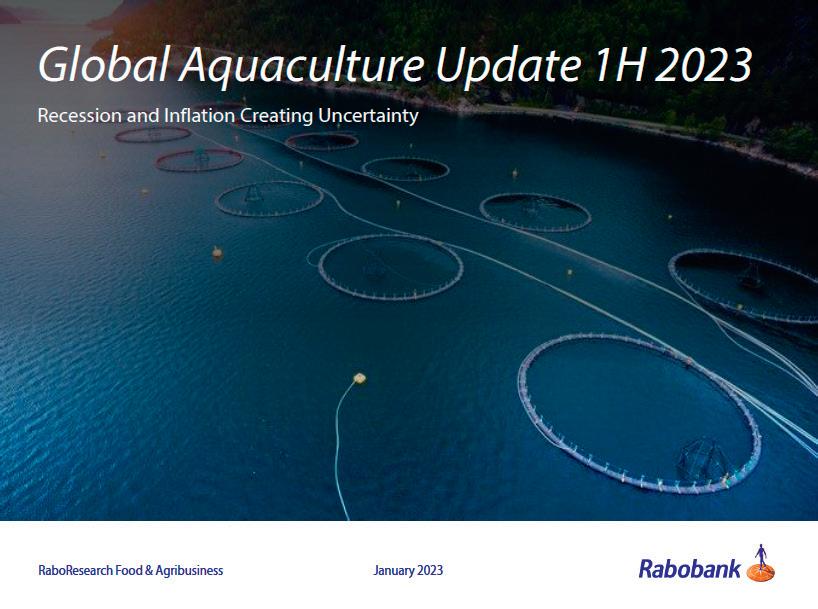
The report, Global Aquaculture Update H1 2023, says that, worldwide, “recessionary behaviour” is affecting the market for seafood.
Gorjan Nikolik, Senior Global Seafood Specialist at Rabobank, said: “Shrimp demand is more affected than salmon, which seems to be resilient.”
The report says the firm demand for salmon, combined with tight supply, creates expectations for high prices in 1H 2023. However,
costs for producers are also expected to remain high until later in the year.
Salmon supply growth in 1H 2023 is expected to return to positive, but remain low. The Norwegian government’s proposed tax on the industry introduces a key uncertainty, and if it becomes reality, Rabobank says, it will have considerable consequences for the industry.
Meanwhile, shrimp supply growth in 1H will be much lower than in 2022, but will still be positive, mostly due to Ecuador’s expanding production. According to Nikolik: “Softer demand for shrimp and high supply have generated a low-price scenario that will persist in 1H 2023. Although costs are below the peak, it is expected to be a very challenging period for shrimp farmers globally.”
China remains a source of uncertainty as the country’s economy emerges from a period of rolling lockdowns only to face a renewed threat from the Covid-19 pandemic itself.
Nikolik said: “Demand for shrimp and fish meal in China has increased, but it remains an unpredictable factor. China is back as the driver of demand, although its foodservice industry, at least in early 2023, will be impacted by fears of Covid infection.”
In spite of recent corrections in feed commodity, energy and freight costs, overall costs for producers are still high.
“Global supplies of fish meal and its co-product fish oil remain relatively stable. In 1H 2023, possible upsides in Peru and Chile are likely to be balanced by declining supply in Europe,” said Nikolik.
The ongoing global scarcity of feed proteins means fish meal prices are expected to be firm, despite the partial correction in soymeal prices.
www.fishfarmermagazine.com 19
Above: Giles Cadman and Brian Tsuyoshi Takeda Above right: Urchins Above left: Quoddy farm facility
Government report says fish farms are not to blame for spreading sea lice
SALMON farms are not responsible for spreading sea lice among the wild fish population, according to a new report from the Canadian government’s scientific advisers, and British
Kingfish Company saw sales jump by a third for Q4

Columbia’s farmers have welcomed the findings.
The peer-reviewed Science Response Report, Association between sea lice from Atlantic salmon farms and sea lice infestations on wild juvenile Pacific salmon in British Columbia, was produced by the Canadian Science Advisory Secretariat (CSAS). Using sea lice count data from a variety of sources, it concludes that there is no significant statistical correlation between sea lice levels in farms and the number of sea lice detected on wild fish.
See sea lice feature, page 42.

Proximar’s first batch of juveniles starts taking feed

PROXIMAR Seafood has announced that the first batch of Atlantic salmon juveniles have started to take feed at its land-based farm in Japan.The batch will stay in the first feeding area for around two months, before the next transfer to the nursery.
The transfer of Proximar’s first-generation fish to the start feeding department marks a milestone for Proximar’s production team, after the first eggs were successfully inserted in the company’s hatchery at Oyama, near Mount Fuji, Japan, in October.
Construction on Proximar’s recirculating aquaculture system (RAS) farm facility started in March 2021.
See Land-based Farming, page 53.
Right: Proximar first batch feeding
Rebrand for Global Seafood Alliance summit
THE Global Seafood Alliance has rebranded its flagship conference, previously known as the Global Outlook for Aquaculture Leadership (GOAL) as The Responsible Seafood Summit.
The first event taking place under the new name will be held between 2 and 5 October 2023 at The Delta Hotel in Saint John, New Brunswick, Canada.This is only the second time the event will have been held in Canada, with Vancouver being the host city in 2015.
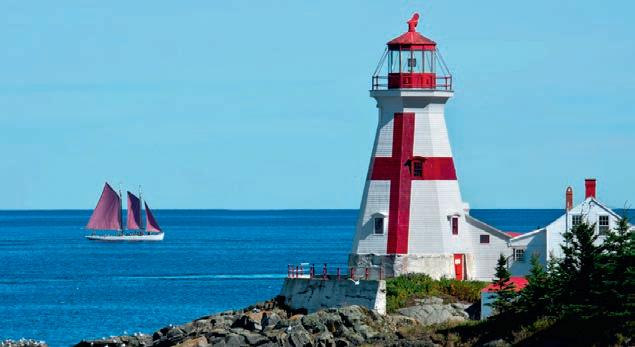
The GSA said the new name better represented the organisation’s vision of a world that embraces the role of responsible seafood in meeting global nutrition needs, for both farmed and wild seafood.
LAND-based aquaculture group The Kingfish Company has reported its highest ever sales figures. Its report for the final quarter of 2022 shows that revenue reached €50m (£44m), up by 34% on Q4 2021.
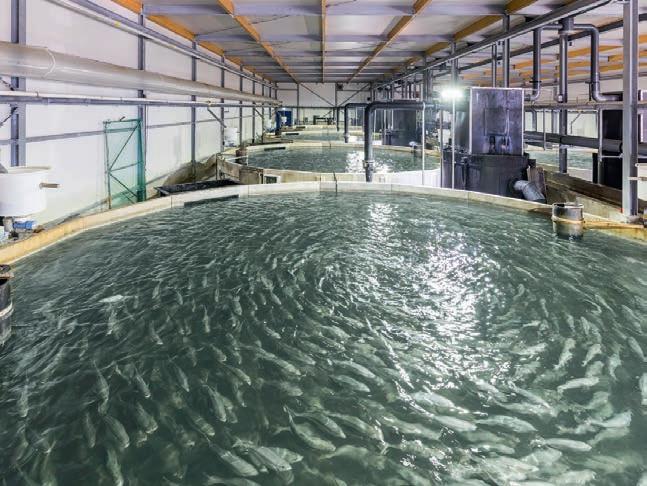
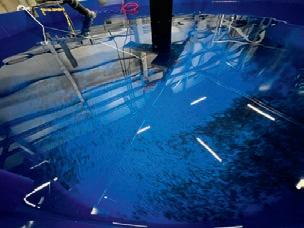
In 2022, the company produced a record 1,511 tonnes of high-value yellowtail kingfish (Seriola). For the full year 2022, it increased sales by 82%. At the same time, the average sales price achieved increased by 14% to €13.1/ WFE kg in 2022, the company said.
The Kingfish Company achieved 395 tons of net growth of highvalue yellowtail kingfish in Q4 2022, compared with 324 tonnes of net growth in the same quarter the previous year.
The company’s existing plant, in Zeeland, Netherlands, has now reached maximum capacity, so further growth will depend on the site’s phase 2, which has already started production of fingerlings. Commissioning of the hatchery started earlier this month.
The company said: “The significant volume increase is expected to result in material improvements to unit economics, building on an already strong basis.”
Meanwhile, the company’s US operation in Maine obtained the local building permit from the Jonesport Planning Board in December, and has been granted permits by local, state and federal regulatory agencies. The company said it had successfully shipped broodstock to the US and the fingerlings that were already shipped to the US “are doing well and growing fast”.
Earlier this month, The Kingfish Company completed an equity fundraising exercise, raising gross proceeds of approximately €35m (£31m) through a private placement and a subsequent offering.
Hans den Bieman, interim CEO of The Kingfish Company at the time of reporting, said: “We are proud of our team, which has delivered five years of successful operational results with continuous improvements, confirming the name plate capacity of our facility. We have seen productivity increase with the third generation of fingerlings, increased size of fish and no mass-mortality events. We are now ready to launch capacity for phase 2 and we are delighted that we have started commissioning the hatchery in January.”
Den Bieman was appointed as interim CEO following the departure of founder and CEO Ohad Maiman in 2022. As Fish Farmer went to press, Vincent Erenst was set become CEO as of 6 February..

www.fishfarmermagazine.com 20 WORLD NEWS
Above: Kingfish Company tanks
NEWS
Right: Hans den Bieman
IN BRIEF
Image: New Brunswick
US has closed price fixing probe, says Mowi
THE US Department of Justice has closed its investigation into salmon price fixing allegations at Mowi.

At least five leading Norwegian salmon farming companies have faced probes.
In a Stock Exchange announcement in Oslo on 18 January, Mowi said: “Mowi has been informed by the Antitrust Division of the Department of Justice in the US that they have no longer an open investigation into Mowi.
“Mowi has all along been adamant that the price collusion allegations have clearly lacked merit and are entirely unsubstantiated.”
The statement added: “With regard to the European Commission’s case handling, there is no new information. This information is subject to the disclosure requirements pursuant to section 5–12 of the Norwegian Securities Trading Act.”
Three months ago, reports from
the US suggested that a final settlement had been reached after a large group of salmon buyers asked a Florida federal judge to approve a US $33m (£29.9m) deal to resolve a raft of anti-trust claims, which are thought to have involved up to 400,000 possible claimants who had brought the action against Mowi, SalMar, Cermaq, Lerøy and Grieg.
All the companies strongly denied the claims and were believed to have agreed the deal in order to avoid lengthy and costly court action.
The European Commission conducted raids on Norwegianowned farms in Scotland in 2019, but no further action has been taken by the Commission so far.
Rainbow trout market ‘set to reach $7bn in 2033’
THE global market for rainbow trout is anticipated to grow at 5.2% annually over the next 10 years, according to market analyst Fact.MR. A report from firm Rainbow Trout Market estimates the current value of the sector at US$ 4.2bn (£3.4bn), but predicts that consumers’ desire for healthier food will take it past US $7bn (£5.7bn) by the end of 2033.
The report says: “Rainbow trout sales are being boosted by consumers’ growing attention to healthy foods, as well as the retailers’ wildly successful merchandising, marketing,and sampling.The popularity of rainbow trout will
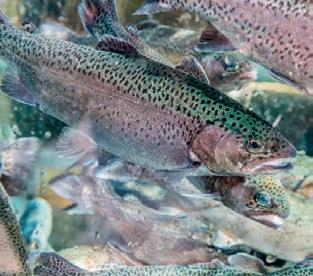
ultimately open up attractive growth potential for the market.
“Top rainbow trout providers are emphasising strategic M&A and diversification of the current offerings.While strategic collaborations/partnerships and joint ventures with local players are likely to remain the primary developmental strategies of leading players, in high-demand regions, a large number of companies dealing in rainbow trout are investing efforts in tapping fish imports from key countries of specific regional markets.”
Small, portion-sized trout make up 60% of the global trout market, the report says.
Fact.MR expects that increasing demand for trout will continue to drive investment in aquaculture infrastructure, especially in highdemand regions.
The report adds, however, that high capital and maintenance costs, together with biological threats such as sea lice, are hampering the industry’s growth.
British Made Cage Nets In Nylon
Predator Exclusion Nets
Anti Foul Coatings

Ropes - Large Stock All Sizes
Floats, Buoys, Cushion Buoys

Chain & Chain Weights
Tarpaulins
& Dyneema
www.fishfarmermagazine.com 21
Tel: 01253 874891 e-mail: john@borisnet.co.uk web: www.borisnet.co.uk
NETS FOR FISH FARMING
QUALITY
Tesco to close its last fish counters
Supermarket chain Tesco is closing the remaining fish counters in its UK stores as part of a raft of changes aimed at keeping the company “focused and competitive”
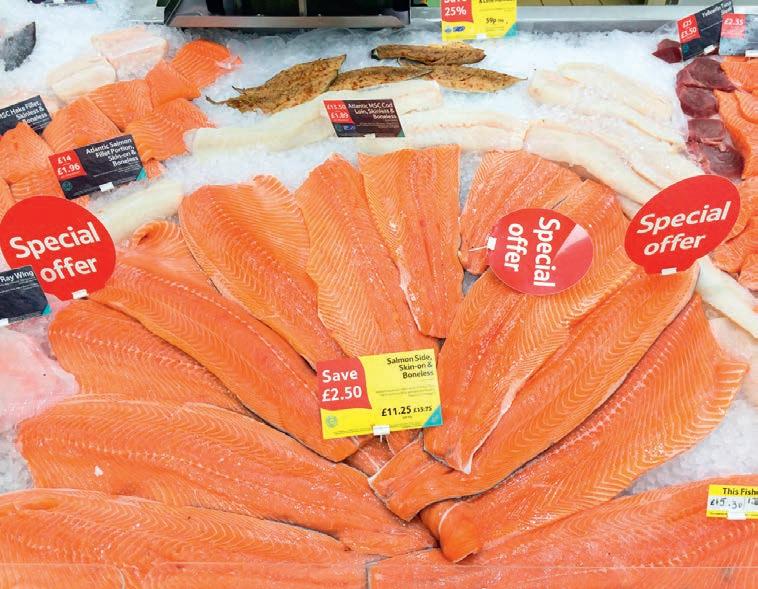
ON 31 January, Tesco announced a set of “difficult but necessary decisions”, including the closure of all the chain’s remaining specialist counters. The company said: “We have seen a significant decrease in demand for our counters over the last few years, and our customers no longer say they are a significant reason for them to come in store and shop with us. Instead, they are choosing to buy from our wide range of great-quality products available in our aisles.”
Most Tesco stores have already closed their counters and those that remain are due to be closed as of 26 February. Other changes include the introduction of a new shift manager role, some changes in head office roles and the closure of pharmacies in selected stores.
Tesco UK and ROI CEO Jason Tarry said: “These are difficult decisions to make, but they are necessary to ensure we remain focused on delivering value for our customers wherever we can, as well as ensuring our store offer reflects what our customers value the most. Our
priority is to support those colleagues impacted and help find alternative roles within our business from the vacancies and newly created roles we have available.”
Holmes Seafood sold to Portugal’s Brasmar
HOLMES Seafood, a long-established UK-based business, has been acquired by Portuguese group Brasmar.
Holmes Seafood operates out of London’s Billingsgate Fish Market. Privately owned since its incorporation over 70 years ago, it employs around 40 staff and supplies independent frozen seafood wholesalers throughout the UK.

Holmes specialises in supplying frozen seafood, including finfish, shellfish, prawns, octopus and squid. It also offers smoked fish including haddock and trout.
The company’s most recent reported accounts, for 2021, show the company had a turnover of £29.3m.
The acquisition of Holmes Seafood, benefiting from its privileged location in the largest inland fish market in the UK, allows Brasmar to expand its presence in this geography, increasing the commercialisation of its products to British consumers. Holmes Seafood will maintain the current management team
as well as all current jobs. Brasmar operates in more than 40 countries and reported a turnover of around €272m (£240m) in 2022. This is its fourth acquisition in as many years.
Sérgio Silva, Chairman of Brasmar’s Board, said: “Brasmar is always looking for business opportunities that help us to strengthen our leadership position in the European market. In the specific case of Holmes, it provides us valuable knowledge, experience and positioning in the UK, significantly increasing our presence in this market.”
Andy Thomas, Managing Director
of Holmes Seafood, commented: “It became evident early on that Brasmar Group is a like-minded company that shares the same values and passion for the seafood business. We are delighted to be working with Brasmar and to continue to lead Holmes at such an exciting phase of our growth”.
Oghma Partners acted as exclusive financial adviser to the shareholders of UK-based CT Holmes Limited, Holmes Seafood’s parent company.
Mark Lynch, Partner at Oghma Partners, said: “We were delighted to achieve the sale for the Holmes Seafood shareholders who have found a good home for the business in Brasmar. This seafood sector deal follows on from our role advising on the recent acquisition of Ruskim Seafoods by Sykes and the sale of Icelandic Seachill to Hilton Group. Individually the team have now advised on over 18 seafood transactions, making the Oghma team one of the most experienced in the seafood market.”
Processing News PROCESSING NEWS www.fishfarmermagazine.com 22
“These are difficult decisions to make ”
Seafood boosts Hilton Group’s 2022 sales
SEAFOOD was one of the key drivers behind a strong Christmas sales lift for the Hilton Food group.
In a 2022 trading update yesterday and without giving firm figures, the company said that sales were in line with the board’s expectations and were up on 2021. It also said it was carrying out a major review of this sector.
In a few short years, Hilton has grown from a regional Huntingdon meat food producer to one of Britain’s most important food companies, expanding into fish and across the globe in Australia and New Zealand. It recently moved into Singapore.
Hilton’s main UK seafood base is in Grimsby, where it produces various wild-caught and farmed chilled fish products to the UK retail market. It also includes a 100-year-old artisan smokehouse
In the last few years, the business has become the country’s largest chilled processor.
Coast Seafood buys Danish salmon business
THE Norwegian exporter Coast Seafood has bought Denmark’s Vega Salmon for an undisclosed figure.

Danish Vega Salmon has an annual production of around 25,000 tonnes of salmon, revenues of approximately 1.3bn Danish kroner (DKK) (£155m) a year and employs between 400 and 600 people, depending on seasonal demand.

The company has its headquarters in Kolding, Denmark, but its main processing facility is in Handewitt in northern Germany.
Coast Seafood said the acquisition is a new step towards expanding its presence in the entire value chain, after it bought fish processing company Sotra Fiskeindustri in 2021.

Coast CEO Sverre Søraa said: “Vega Salmon is a well-managed company operating according to the highest-quality standards. With Vega as part of the Coast family, we will be very well positioned to increase the export of processed salmon to the global market.”
Vega Salmon CEO Jakob Graasbøll Enemark said:“We look forward to becoming a part of Coast Seafood and have been impressed by [its] attention to quality and sustainable operations, as well as [its] professionalism. Vega and Coast are a good match both with respect to values and culture.”
Inflation has been a major issue for the company over the past 12 months, as it has with all food producers. The trading update said: “Recent progress to pass through and mitigate unprecedented inflationary cost increases, particularly in the UK Seafood business, have been encouraging and leave us well placed as we start the new year.
“This work has progressed alongside a total business review in UK Seafood, which is starting to deliver positive results.”
The statement added: “Our other businesses in Europe have performed well, with revenue ahead of the previous year, benefiting from the acquisition of Foppen (a Dutch smoked salmon and eel company) and particularly strong trading in Central Europe, driven by the continued performance of our fresh food business and our Scandinavian markets.”
Hilton shares and share activity rose strongly after the update.
SAQUA aims to grow frozen seafood business


UK-based seafood importer Southern Aqua Seafood (SAQUA) is looking to grow its business across Europe, after agreeing a £1m loan facility with Cynergy Business Finance.
SAQUA, based in Wiltshire, boasts an extensive product range of farmed and caught seafood, including yellowtail, Patagonian toothfish, New Zealand king salmon and Australian prawns. Its current customer book of leading retailers and restaurant groups includes Waitrose, Carrefour, The Ivy and Nobu.
Cynergy Business Finance provided SAQUA with a flexible £1m invoice-discounting facility to provide it with the additional cash flow it needed to meet its growing order book. The facility will also enable the business to expand
its global supplier base and grow its product line. Tessa Pollard, Head of Finance at SAQUA, said: “With true sustainability being a core mission for SAQUA, the ever-growing consumer demand for sustainable products means that we’ve experienced strong growth over the past few years, providing top retailers and restaurant groups across Europe with the highest-quality seafood from around the world. However, in order to fulfil this demand, it was essential that the business had strong cash flow.
“Working with the team at Cynergy has been seamless. The solution it developed was quick to set up, and has given SAQUA year-round access to dramatically higher financing at a far more cost-effective rate.”
Relief as Iceland Seafood opts to stay in UK
Iceland Seafood International (ISI) is to continue operating in the UK and has shelved plans to sell its Grimsby processing centre.
The ISI directors said that the performance of the UK operations had improved since the closure announcement back in
November last year. The news will come as a huge relief to the nearly 200 people who work at the site.
ISI’s negotiations with two would-be purchasers for the Grimsby site failed to reach a deal.
The company statement said: “In an industry where consolidation is needed, Iceland Seafood made it public late last year it was interested in selling the UK business. It is however the conclusion of the board of Directors that the proposals received
didn’t reflect the value of the company, as external conditions for the industry have been challenging.
“Recently, Iceland Seafood UK (IS UK) has made significant progress with its strategic partners recovering unprecedented inflationary cost and adding a significant new business. Therefore, the company foresees better results, driven by the above, in addition to returns on investments in equipment, that will increase its ability to grow and reduce unit costs.”
www.fishfarmermagazine.com 23
Above: Workers at Hilton Foods
Cooking up a storm
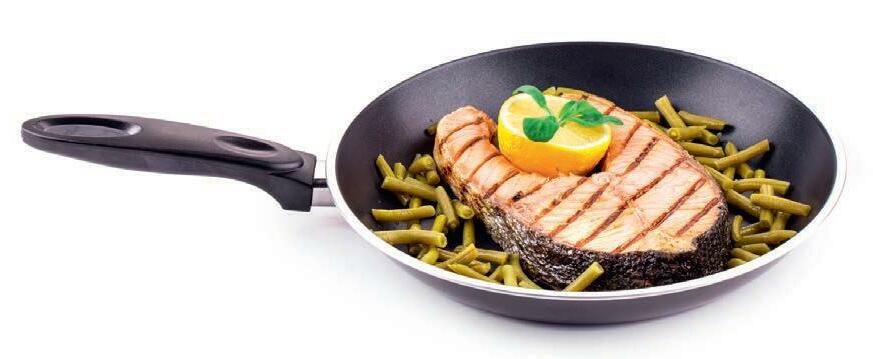
The Twitterati have been outraged because Mowi has sponsored celebrity chef Gordon Ramsay’s new TV programme – Next Level Chef . They think that Gordon is unaware of the huge disaster that they claim salmon farming to be. Of course, I would not expect anything less of them.
Personally, I would have thought it should be Mowi that were outraged having found out that they have sponsored this nonsense. It was painful to watch and the major TV critics thought so too.
The start of this TV series was soon followed by coverage of a rise in farmed salmon mortality and a call for the public to boycott eating farmed salmon. The sector’s critics clearly believe that as long as the public buy and eat farmed salmon, then the industry will continue to operate unchallenged.
The reasons why the critics object to salmon farming are many, most because they are either ill-informed or because they are NIMBYs. It is hard to counter their objections because they consider any response to be paid propaganda akin to the tobacco industry’s lobbying that occurred decades ago.
Whilst it is difficult to avoid such criticism, the reality is that the majority of the public rarely hear any of it and even when they do, they don’t generally relate to it. Certainly, the critics have been highlighting farm mortality for over five years and it hasn’t made any difference over that time, and it won’t make any difference now. In addition, it is not even that the mortalities are hidden, because the only reason the critics know about them is because mortality data is published in the public domain for anyone to see.
For probably over 40 years, on-farm mortality has never been an issue except for the farming companies that work to
Opposite: Gordon Ramsay Below: Calls for the public to boycott farmed salmon have not so far proved successful
minimise such loss. The focus on mortality only arose after the wild fish lobby failed in their attempts to persuade consumers to stop eating farmed salmon in order to protect wild fish (so anglers could catch and kill them). Such campaigns only reached the angling fraternity who just heard (and still only hear) the one side of the story that their representatives want them to hear.
Having failed to persuade consumers to stop eating farmed salmon to help wild, the wild fish lobby decided to change tactic. Rather than focus on their own interests, they opted to focus on what they consider deficiencies in salmon farm management – specifically mortalities. This was because they could illustrate their claims with images of sick and dead fish, usually the same one repeated over and over again.
Yet, after five years of such messages, only the critics remain outraged. It is unclear what sort of mortality would ever be acceptable to them. The reality is that even with the most stringent care, not every fish will survive. Given that salmon are a cold-blooded animal that usually has a high level of mortality in the wild, there will always be fish that will die ahead of time.
The most recent coverage in the press has comment from the industry’s leading critic, who generally finds even the remotest connection to the industry as reason to criticise. He says that about 25% of salmon that are farmed, which he helpfully equates to one in four, die. If ramblers saw one in four cows or sheep dead in a field, he argues, they’d be horrified, but because its underwater it is
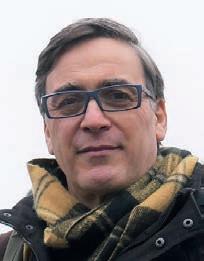
www.fishfarmermagazine.com 24 COMMENT
Protests over Mowi’s game show sponsorship have reheated old arguments about farmed fish mortality. By Dr Martin Jaffa
This is not a realistic comparison since terrestrial animals are warm blooded and produce one or two young, whilst salmon produce several hundreds of eggs. It is also not realistic because land farmers don’t leave dead animals lying on the land: they are swiftly collected and removed. A good account of dead farmed
animals appeared in the Guardian “long read” in April 2021. This was titled “The knackerman: the toughest job in British farming” and written by Bella Bathurst. It was taken from her book, What Land Does to People and What People Do to Land
Whilst critics such as the one mentioned will never be persuaded otherwise, the time has come for the wild fish sector to show some honesty and recognise that their criticism of salmon farming will never do anything to safeguard the future of wild salmonid fish.
Wild Fish Conservation, an organisation that is forever trying to greenwash itself, is currently running a campaign to persuade chefs to stop serving farmed salmon. So far, they have promoted just one chef who has taken what they have said on board. It seems that they will never learn that if they really want to help wild salmon, criticising salmon farming is not the answer and certainly not by highlighting farmed salmon mortalities.
As for Gordon Ramsay’s new TV programme, just like the critics’ campaigns, it seems unlikely to be a success.

Next Level Chef is shown at 9pm on ITV1, ITV and STV.
See News in Brief, page 8.
The reality is that even with the most stringent care, not every fish will survive www.fishfarmermagazine.com 25
”
out of sight and out of mind.
Putting salmon on the government menu








Generating £760m each year for the economy and producing the UK’s biggest food export means that Scotland’s salmon sector is respected and valued in the corridors of power.


Compared with many sectors, we’re fortunate to have the support of ministers at both Holyrood and Westminster. In the current political climate, with the two administrations at loggerheads over so much else, that is something to celebrate. That is a clear testament to the hard work and dedication of salmon farmers and the wider supply chain, which operates hundreds of miles from the capitals.
Since the turn of the year, I have held meetings in Downing Street with the UK government’s top ministers and advisers, ensuring they understand our sector and what we need. Prime Minister Rishi Sunak hosted a reception in Number 10 to mark Burns’ Night to promote the contribution of Scottish businesses. Salmon from Scotland was on the menu.
While in Westminster, I met with members of Labour’s shadow cabinet. In the first week of February, I joined First Minister Nicola Sturgeon at a roundtable in Bute House in Edinburgh to discuss Scottish industry. Alongside these meetings with government and politicians, the Salmon Scotland team engages on a daily basis with the officials running both governments behind the scenes.

In every conversation, we are advocating for our members and our sector. At every turn, we raise awareness of the nutritional value of farm-raised salmon, the low carbon footprint of the sector, the sustainability measures adopted by farmers, members’ commitment to animal welfare, and widespread innovation based on sustained capital investment across Scotland.


The Scottish salmon sector has always had a good relationship with MSPs and MPs in our farming areas. Now more and more politicians – from right across the country – are gaining a better
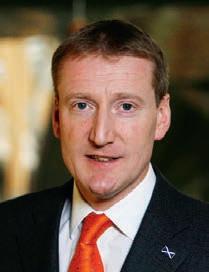


understanding of who we are and what we do. This will encourage support for what is one of the country’s most extraordinary success stories.







Every Scottish constituency is home to companies that play a key role in supporting our sector and that’s why it’s important that we continue to engage with all politicians across all parties across Scotland to understand the importance of salmon farming to Scotland’s economy. We’ve extended an open invitation to them to visit a farm to get their feet wet and learn first hand about salmon farming. We don’t just use this engagement to extol the accomplishments of our sector, either.
There are many challenges we need to overcome that require action by the country’s decision-makers. We have just marked the third anniversary of the UK’s departure from the EU. Scotland’s salmon farmers have a long history and experience of exporting to the EU, and put in a lot of work to get ready for Brexit, and the new export regime that has subsequently emerged. European demand has continued to increase, so much so that the EU makes up three quarters of all Scottish salmon exports, despite the
www.fishfarmermagazine.com 26 SALMON SCOTLAND
”In every conversation, we are advocating for our members and our sector
Our sector is fortunate to have strong support from those in power at Holyrood and Westminster, but there is more that government can do to support us.
By Tavish Scott
extra red tape caused by Brexit. But while the sector has coped better than others, it is still affected by cross-border trade and transport congestion at peak times. We continue to work with UK agencies including DEFRA and the Home Office to resolve these outstanding issues.
We, and all of the UK seafood industry, would like to see the adoption of digital export health certificates (EHCs). Salmon farming through our freight companies have piloted this approach on behalf of the UK government. We now need to see implementation. We also require a more enlightened approach to the movement of labour into the UK from the Westminster government so that we can address workforce challenges. A parallel challenge faces many UK-wide industries.
February marks 12 months since Professor Russel Griggs outlined how to make Scotland a world leader in regulating the blue economy. He set out a 12-month timescale for reform.
Quite simply, the regulatory regime for aquaculture in Scotland is not fit for purpose. The licensing programme is lengthy and there are several regulatory bodies involved in the process.
The need for change is firmly recognised by the Scottish government and there is
strong leadership from rural affairs secretary Mairi Gougeon. Yet the system of government has been slower than we would all like to drive a process of reform. Scotland’s cluttered licensing regime means that more than £20m per year is paid by salmon farmers to various regulators and quangos. Delays in the consenting system are holding back sustainable growth. Potentially, there is a notable prize here for government: to be world-leading in regulatory reform for aquaculture. It is the challenge that Professor Griggs laid out a year ago.
We will continue to work constructively with government and regulators to deliver efficient and effective outcomes across social, economic and environmental objectives, so that we can continue to support thousands of rural jobs, generate millions of pounds for Scotland’s economy and farm one of the most nutritious products that we can eat.
More local housing is one such example. There simply is not enough housing up and down Scotland’s west coast and across the islands. So instead of salmon rents going into general government spending, this money could be invested on new homes in Scotland’s coastal communities. Our companies want to support local housing with their cash and we want to help address Scotland’s rural housing crisis.
We will always encourage an approach from policymakers and regulators based on evidence, science and facts – not perception or pandering to campaign groups funded to attack the sector and the thousands of jobs that depend on it.
With an economic recession gripping the country, few sectors are as well placed as ours to help Scotland through this. That is why it makes sense for government to tap into the full potential of the Scottish salmon sector.
Tavish Scott is Chief Executive, Salmon Scotland.
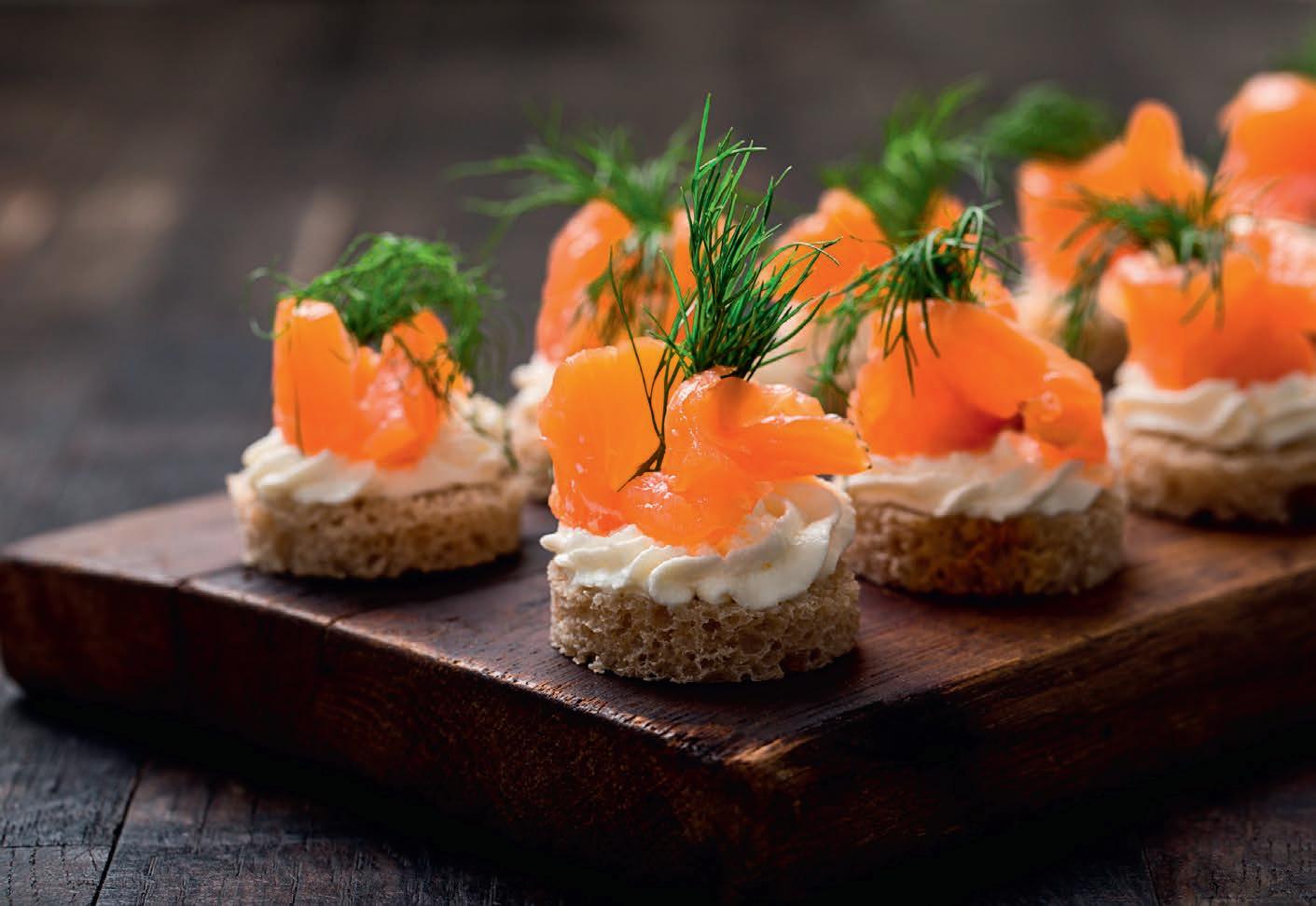
www.fishfarmermagazine.com 27
Opposite from top: Rishi Sunak; Nicola Sturgeon
Above: Mini canapés with smoked salmon
Recipe for love
It’s Valentine’s Day – anyone for oysters?
By Nicki Holmyard
Part of the oysterman’s calendar…



















According to Bobby Groves, head of oysters at the Chiltern Firehouse restaurant in London, Valentine’s Day is part of the oysterman’s calendar, along with the end of April, when the native oyster season closes, the beginning of September for the reopening of the season, and Christmas and New Year, particularly for Europeans.
Groves has been in the oyster business for 18 years, 10 spent farming at Maldon Oysters, before leaving to run the oyster cart at the Firehouse, which sells more than 150,000 oysters each year. He is also author of Oyster Isles: A Journey Through Britain and Ireland’s Oysters, which is part travelogue, part history and part oyster facts. Recipes, tasting notes, anecdotes and eatery recommendations are also thrown in, along with conversations with many of the UK’s oyster farmers.
As Valentine’s Day approaches, oyster farms gear up for an influx of orders as fishmongers and restaurants seek to increase sales by promoting “the food of love” for the traditional celebration of romance on 14 February.

In Greek mythology, Aphrodite, the goddess of love, emerged from the sea in an oyster shell. She also gave birth to Eros, the god of carnal love and thus the aphrodisiac connotation began. However, it is only in the past few decades that this mollusc’s stimulating properties have been properly researched.
A team of scientists found that raw oysters and other bivalves contain the rare amino acids D-aspartic acid (D-Asp) and N-methyl-Daspartate (NMDA), which play a role in hormone synthesis.
D-Asp was found to temporarily increase testosterone levels and improve sperm motility, and studies with rats showed that NMDA increased the rodents’ neural excitability.










































Definitive studies correlating oyster consumption with increasing libido in humans are yet to be carried out, but their association with promoting sexual desire remains strong, and maybe that’s all we need. That, and the knowledge that oysters are high in protein, low in calories, rich in vitamins and minerals, and are also good for the planet!
“At the restaurant, the oyster cart is always busy, so we don’t run any special promotions on 14 February, but we notice an influx of bookings from couples looking for a romantic meal. We also find lots of people trying oysters for the first time and I like to talk them through the experience,” he says.
According to Tristan Jones of Rossmore Oysters, a few years ago the lead-up to Valentine’s Day was a very busy time for his business, particularly in terms of sales to fishmongers, many of whom are now shut.

“Ah, those were the days when we sold more than 110,000 oysters in the week, and struggled to keep up with demand,” he says.
As well as supplying fish merchants and restaurants from his London base, Jones sells Jersey and West Mersea rock oysters via home delivery, and sympathises with courier companies who will be under pressure to deliver on time this year, with Valentine’s Day falling on a Tuesday.

“Sending oysters by courier generally works well, but the risks are higher,” he says.

Jamie Walsh, fishmonger at Rockfish,

www.fishfarmermagazine.com 28 SHELLFISH
Top: Loch Fyne Valen�ne’s Day promo�on Above: Oysters and champagne
a 2022 Fishmonger of the Year award winner, puts on a special display leading up to 14 February, while the Rockfish group restaurants create a special Valentine’s Day menu.

“I like to fill the window display with oysters on ice, and make it colourful with hearts and lemons, which attracts passers-by, and we always see sales go up at this time,” he says.
The ‘best day of the year’
For Caledonian Oysters, which farms in Loch Creran, Argyll, Valentine’s Day is the “best of the year” for sales, and more so when it falls at the weekend.
Judith Vajk sells to wholesalers and restaurants throughout Scotland and runs a stall at Perth Farmers’ Market. Occasional runs are made to Edinburgh, with drop-off points advertised on social media. Vajk has also set up an oyster stand with an honesty box at the end of the beach road, which does a brisk trade.
“I find that social media promotion using Facebook, Instagram and Twitter work well for local sales, particularly at this time of year,” she says.
The Loch Fyne Oysters’ oyster farm also steps up a gear in early February, ready to meet demand, while the marketing team push the message out through social media and promotions.
“We see a significant increase in oyster






sales at this time of year, as our partner retailers and our home delivery team prepare for the rush, and deli customers and diners make the journey to our award-winning Oyster Bar,” Richard HuntSmith, E-Commerce and Sales Support Manager, says.
“Oysters have been linked to love and romance for centuries, and nothing has changed. Paired with a glass of champagne, they add a romantic spark to any meal.”
Wright Brothers supplies a large proportion of the London and southwest restaurant trade with oysters, but since the company’s lease on the Helford River in Cornwall expired in 2015 and was not renewed, it has concentrated on selling oysters from Ireland, Scotland, UK and France, purchasing 3–4 tonnes per week.
The company also runs three restaurants and developed a thriving ecommerce business during the pandemic, which it is expanding to include meat, heat-at-home dishes and meal kits.
“It can be challenging getting enough oysters at this time of year. They are in the top three items demanded by new and existing customers, because everyone loves oysters on Valentine’s Day,” co-founder Robin Hancock says, as he finishes a busy day filming promotional and ‘how to’ videos for the online business.
The last word goes to David Jarrad, CEO of the Shellfish Association of Great Britain (SAGB), who is currently trying to save the UK’s oyster industry from over-zealous regulators. He argues that they have failed to recognise that Pacific oysters have become naturalised in our waters and should be managed as such, rather than banning future expansion. There is currently a real threat to existing oyster farming operations and some have already had to shut their doors.
“We are working hard with DEFRA and Natural England, and I hope that sense will prevail in the long term so that we can develop our oyster industry into a flourishing sector. It would be a tragedy if in future we had to import all our oysters for Valentine’s Day!” he says.
www.fishfarmermagazine.com 29
”
Oysters have been linked to love and romance for centuries
Sunk costs



A feed barge hit by Storm Arwen in 2021 continues to be a challenge, as Sandy Neil reports
When hydrogen sulphide – the foul odour of rotten eggs – began bubbling up from a sunken fish farm feed barge in Portree Bay last summer, it created a bit of a stink. Now, over a year after it sank during a winter storm, it sits beached in Loch Carron, yet again the victim of bad weather.

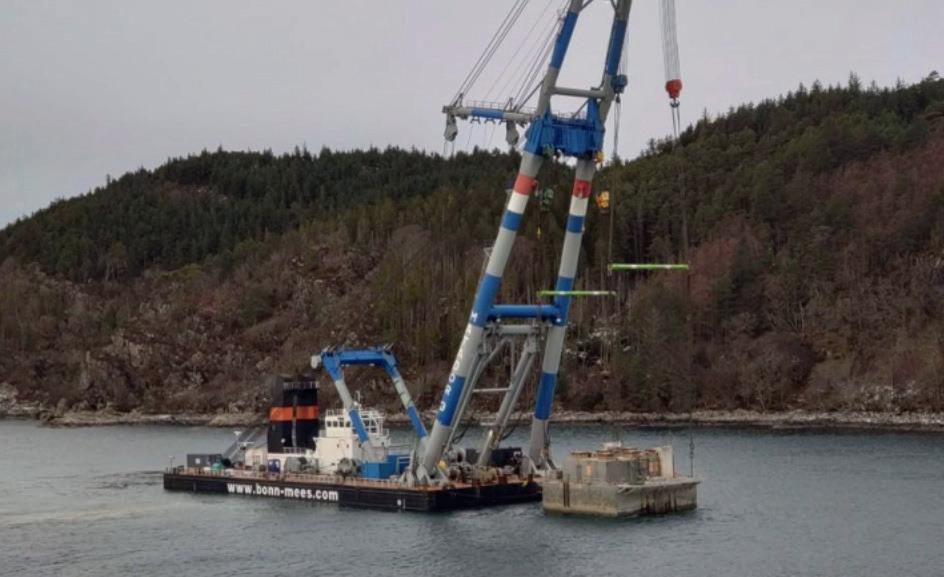
Storm Arwen hit the UK on November 26 and 27 2021, bringing heavy snows, 100mph winds and 10 metre-high waves, affecting ferries, trains and roads, and power to a million homes. Fallen trees caused three fatalities. The Met Office called it “one of the most powerful and damaging winter storms of the latest decade”.
One of Arwen’s casualties was a feed barge at a fish farm off Skye, in the Sound of Raasay, one kilometre around the headland facing the island’s main town, Portree. Back then, it was run by the Scottish Salmon Company (SSC), which was bought by the Faroese salmon farmer Bakkafrost in 2019 and renamed Bakkafrost Scotland in June last year.


“On the morning of Saturday 27 November 2021, Stornoway Maritime Rescue Coordination Centre was advised by a member of SSC (Bakkafrost), that its 400 tonne fish farm feed barge had sunk on its mooring the previous evening during Storm Arwen,” explained the Head of Counter Pollution and Salvage at the Maritime & Coastguard Agency (MCA).
No-one was on board the facility and there was no other damage to the fish farm, allowing operations to continue as normal. The concrete barge lay at coordinates 57 25.077N 006 09.309W, roughly 400m from shore, submerged 36m deep, embedded at an angle

800mm into the mud and sand.
The incident occurred inside the Inner Hebrides and the Minches Special Area of Conservation for harbour porpoise, with Priority Marine Features nearby. NatureScot, the government body responsible for the country’s natural heritage, was “not concerned, given the vessel was intact”. SSC’s immediate response was to gather up loose plastic debris (boxes and pipe) and hydrocarbons (fuel/oil). “Divers were deployed to check the integrity of the hull and also recover fuel from the onboard tanks,” said the MCA. “Once this was carried out, the tank breathers were also sealed to prevent the loss of any small volumes of residual fuel.” All three bunded tanks of diesel, one 2,500 litres and two 1,000-litre cubes, plus a 50-litre sealed container of hydraulic oil, were recovered intact, with no sign of pollution on the surface.
But also on board were fish feed pellets –said to be around 350 tonnes – or 400 tonnes in documents released under freedom of information rules.



“The silos on the barge still contained fish farm feed and these were sealed by a specialist contractor to prevent any seepage


www.fishfarmermagazine.com 30 FEED BARGE
This page from top: The MATADOR 3 crane barge with feed barge; The MATADOR 3 at Portree farm Opposite from top: The feed barge at Loch Reraig; The Viking Saga near the feed barge, Loch Reraig
of nutrients into the marine environment,” said the MCA. “The tendering process for recovery of the barge was carried out and an initial timeframe of August 2022 was identified for the operation to commence.”



Another emergency began to surface. “At the beginning of July 2022, the initial preparation for recovery works was ongoing when levels of hydrogen sulphide were identified within the feed silos,” said the MCA. “It is believed that the natural decomposition of the fish feed was causing the production of the gas.

“Consequently, operations were halted while a technical solution to reduce the gas levels was sought. A number of multi-agency meetings involving stakeholders, local councillors, emergency services and the NHS were convened to identify a solution and ensure public safety was maintained.”
A 500m (1,640ft) exclusion zone was placed around the wreck as a precaution, “to protect vessels and the public from the slight risk of toxic and explosive gases being emitted from the decomposing cargo in the barge in dangerous quantities,” a Highland Council spokesperson said. A guard vessel was deployed to patrol the area, and 10 gas monitors sniffed the site 24 hours a day.
A spokesperson for the agencies involved, including the Coastguard, Marine Scotland, the Scottish Environment Protection Agency (SEPA), The Highland Council, NHS Highland, Police Scotland and Bakkafrost (Scottish Salmon), stated on 2 September: “There is not considered to be any risk to the public as a result of the low levels of hydrogen sulphide detected. Monitoring equipment remains in place and further updates will follow as the incident is brought to a safe conclusion.”
On 15 September, a Bakkafrost Scotland spokesperson confirmed: “…the successful and safe completion of the initial recovery stage of venting gas from the submerged feeding barge at the Portree farm site.
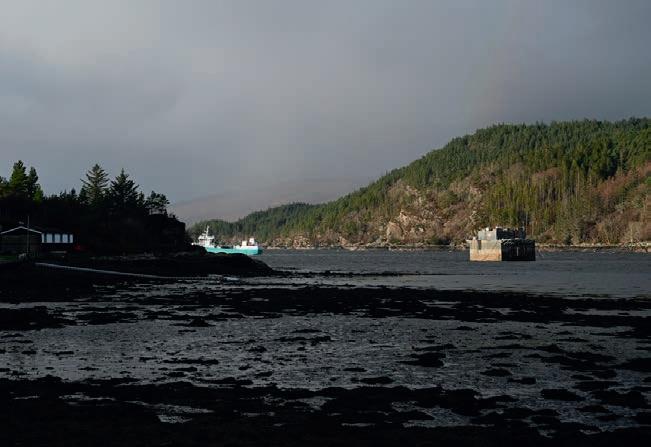
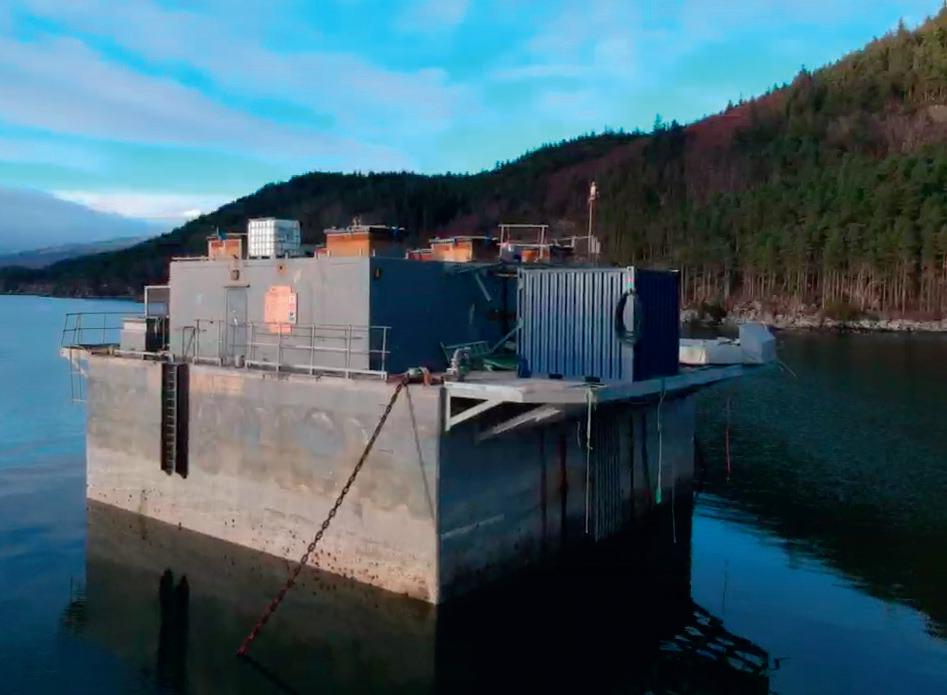
“Throughout the recovery process, we have been working closely with the relevant authorities, including SEPA, Marine Coast Guards and Fire Brigade, alongside other experts, and we are now progressing to the next stage of the operation, which will include lifting the barge.
“An exclusion zone was in place as a precaution throughout the venting operation and a ‘Notice to Mariners’ was issued on 5 August to ensure all affected were advised of the incident.
“The relevant authorities are being kept informed of progress and we will work with the recovery experts to ensure a safe conclusion to the operation. Bakkafrost Scotland is fully committed to ensuring public safety in relation to all of its operations, vessels and equipment.”
Recovery operations could at last recommence. “It is expected that the barge will be lifted to the surface during November 2022 and removed from the site for processing,” said the MCA. Those hopes were dashed by bad weather, however.
In an update on 6 December, the MCA said: “The lifting operation was due to commence the week commencing 21 November. Poor
weather in the area delayed this and the final lift was completed this week. The feed barge is secured onboard the crane barge MATADOR 3 and the feed and contaminated water is being unloaded before transit to Strome for additional remediation work. When this last is complete, the current intention is for a transit to Ardyne where an assessment will be made to determine the future of the barge.
“The SOSREP (Secretary of State’s Representative) for Maritime Salvage and Intervention has established a total exclusion zone (TEZ) initially around the lifting site and latterly around the MATADOR 3 itself. The TEZ will remain in force throughout the decontamination work and the transit to Strome until all contaminated water/feed has been removed and the risk eliminated.”
SEPA told Fish Farmer on 27 January: “SEPA’s regulatory role is ensuring waste feed within the barge is recovered or disposed of in accordance with waste management legislation. The site where the barge is currently beached (Loch Reraig) lies just outside the Loch Carron Marine Protected Area (MPA) designated for flame shell beds and maerl beds. The waste feed removed from the barge thus far has been taken by vessel to the mainland, then to an appropriately licensed onshore facility for processing.”
NatureScot also confirmed to us on 27 January: “There have been no reported or identified impacts to the protected areas.”

And the barge? It was still there at the time of writing. A Bakkafrost Scotland spokesperson said: “Safety protocol has been paramount throughout this complex process, and we have been in regular consultation with leading international specialists to ensure the required procedures and monitoring are in place. We have monitors in place on the site and we are satisfied that the site is not dangerous.
“Unfortunately, the festive holiday period has meant there was a break in work on the barge. However, weather permitting, our team plans to be on site as soon as possible to commence the final stages of the recovery of the barge.”
”
Safety protocol has been paramount throughout this complex process
www.fishfarmermagazine.com 31
Lumpfi sh learning

Now is the time to put research into practice, as delegates at the International Lumpfish Conference in Inverness were told
The use of lumpfish is a key tool in the management of sea lice across international aquaculture, but researchers and producers need to work together to turn research into real-world experiences, according to global lumpfish experts.

Hosted in Inverness by the Sustainable Aquaculture Innovation Centre (SAIC) at the tail end of last year, the International Lumpfish Conference brought together professionals from across the North Atlantic salmon producing regions with the aim of fostering international support for the adoption of best practices for the benefit of the Scottish sector. Delegates took to the stage to discuss new findings around the health and welfare, broodstock, nutrition, rearing and deployment of lumpfish. In Europe, millions of lumpfish are deployed each year to help manage the challenge of sea lice, underlining the importance of sharing knowledge and insights from a wide range of aquaculture experts.
“Thanks to the combined support of academia and the sector, we have collectively gathered significant knowledge on lumpfish breeding techniques, strategies for deployment and best practice for fish health and welfare. But we can’t be complacent –there are still unanswered questions on how best to use and care for our lumpfish, and we can gain more by applying this knowledge in real scenarios”, said Daniel
Carcajona, Senior Aquaculture Innovation Officer at SAIC. Around 70 delegates attended the conference, representing hatcheries, feed producers, fish health experts, academia, and other areas crucial to the domestication and farming of lumpfish. Attendees travelled from all over Scotland, Wales, Ireland, Iceland, Norway, the Faroe Islands and Canada, reflecting the international nature of the aquaculture community.
Highlights of the conference included a session on deployment and efficacy at sea. Mark Johnson, Cleaner Fish Manager at Mowi, addressed the importance of training for site staff in cleaner fish husbandry to motivate teams and make cleaner fish a greater priority, and stressed the importance of FISH – feeding, introduction, shelter and husbandry.
Adam Brooker, Research Fellow at the University of Stirling, highlighted how the variation in individual personalities of lumpfish can have a significant impact on their ability to treat sea lice – with bolder personalities typically performing better.

Eating sea lice that have attached themselves to other fish is part of normal lumpfish behaviour, but not all individuals will do this and some are wary about getting too close to salmon, which are much larger. Identifying the individuals with the aptitude to be effective cleaner fish should hopefully provide the aquaculture industry with a reliable broodstock of lumpfish.

www.fishfarmermagazine.com 32 CLEANER FISH
Opposite from top: Lumpfish; Professor Albert KD Imsland





This page from top: Conference panel chaired by Ma�lda Lomas, Bakkafrost; Adam Brooker; Andrew Davie, AquaScot; Antonios Chalaris, BioMar; Jim Treasurer, FAI Farms
Going with the flow
A separate discussion explored the production of lumpfish in a flow-through system using ambient temperatures. Chris Hempleman, Production Director at Otter Ferry Seafish, reflected on the importance of the conditioning phase in helping lumpfish to acclimatise to sea-pen life. He concluded that, when done successfully, this can enhance the performance of lumpfish and is, therefore, something to encourage and continue exploring across the sector.
Professor Albert KD Imsland from the University of Bergen and Akvaplan-niva also spoke of his research into lumpfish welfare, which aims to quantify the grazing of lumpfish on sea lice by distinguishing the different life stages of lice found on Atlantic salmon.


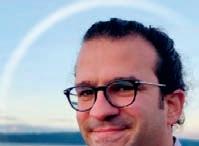

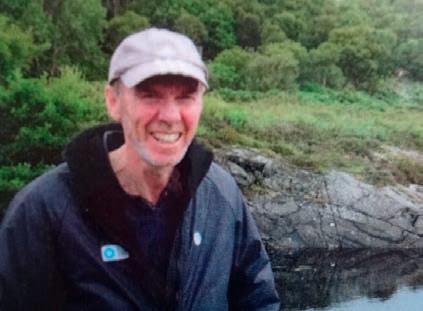
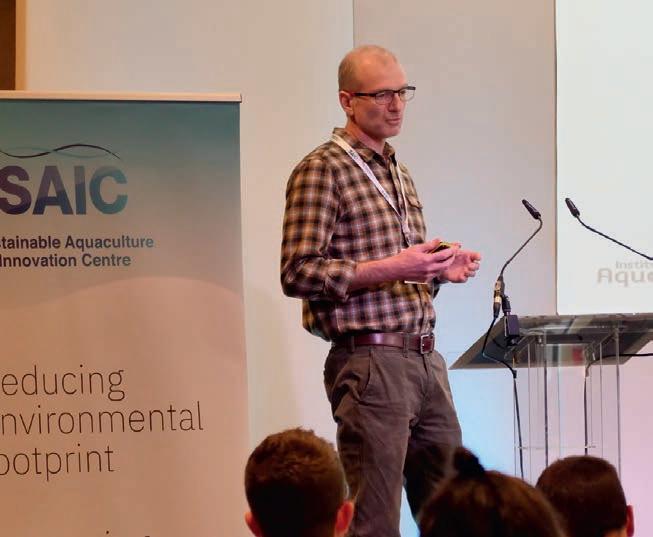
He concluded: “The present results indicate that lumpfish have the ability to reduce the number of pre-adult, mature male and mature female sea lice, and that they are therefore a suitable cold-water option for the biological delousing of Atlantic salmon.”








Other talks covered broodstock management,

chaired by Andrew Davie, Head of Aquaculture at AquaScot, with presentations from Otter Ferry Seafish, Benchmark and Stirling’s Institute of Aquaculture; and nutrition, chaired by Antonios Chalaris from BioMar, with speakers from WorldFeeds, Nofima, Stirling’s Institute of Aquaculture and Aqua Kompetanse AS.
“Evidence shows that lumpfish have an important role to play in an integrated management strategy for sea lice control”, commented Jim Treasurer from FAI Farms, who gave the closing remarks.
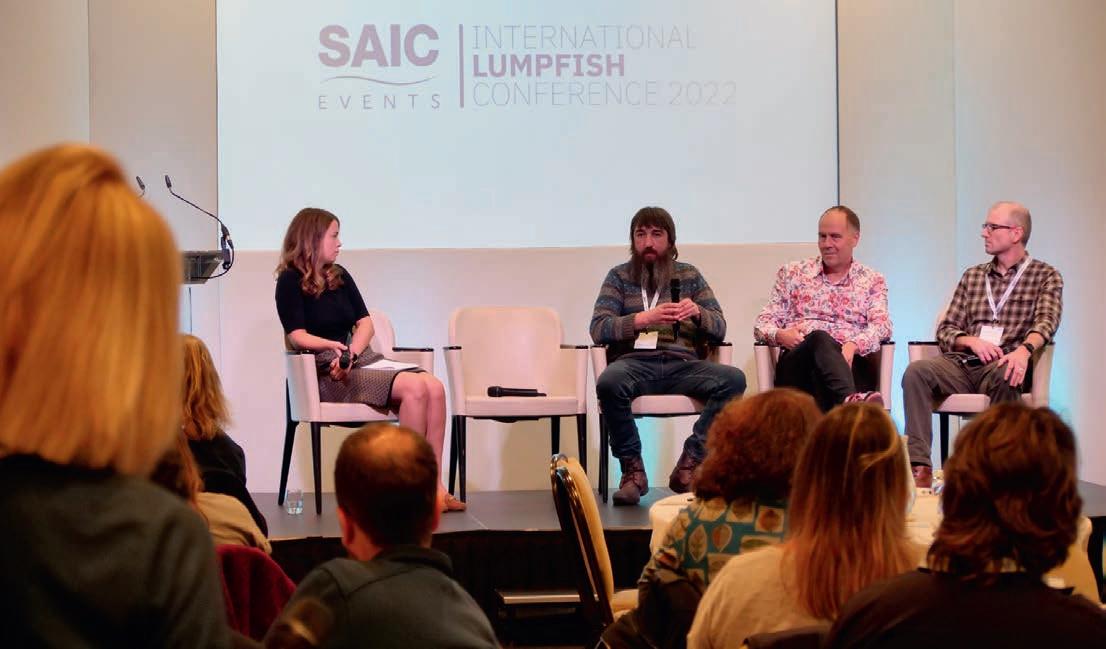
“It would be beneficial to encourage idea sharing from the conference to the farms and hatcheries as quickly as possible to incorporate today’s discussions as best practice within the quality assurance schemes”, he added.
Carcajona added: “To move forward in lumpfish farming, it is essential for the sector to develop a programme for broodstock, selecting the lines for best health and delousing performance, and taking account of variability of animal and egg quality. When considering the factors discussed today, it’s clear that we need to adopt a long-term outlook to meet the levels of demand for lumpfish, grow our sector, boost skills and training opportunities, and continue to put our valuable research into practice.”
www.fishfarmermagazine.com 33
It is essential for the sector to develop a programme for broodstock
”
Far out

The Norwegian government is preparing to identify sites suitable for offshore fish farms, but will the industry still have an appetite for expansion?
By Vince McDonagh
”






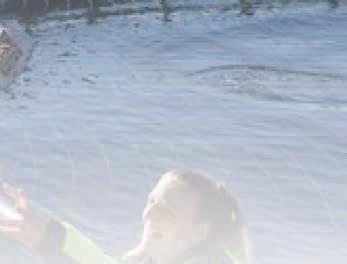

NORWAY is poised to open up new areas for fish farming out at sea in a move that has the potential to create thousands of jobs and billions of krone in extra revenue. However, it could prove a bumpy launch for this exciting next stage of development in aquaculture unless the Oslo government amends or draws back on its plans for a “ground rent” salmon tax.

Offshore farming is seen a possible answer to difficult coastal aquaculture issues such as lice and fjord pollution, and thanks to companies such as SalMar and Nordlaks, Norway already has made a positive start.
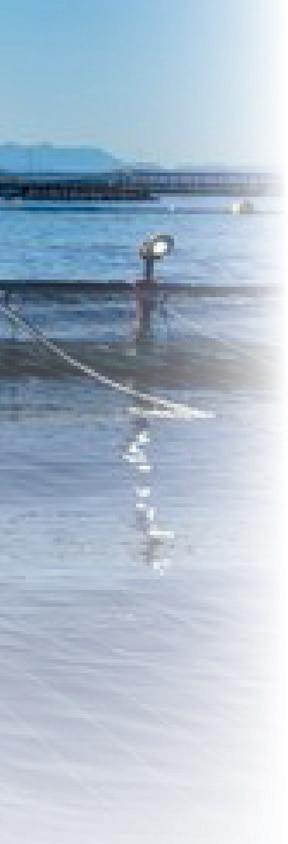
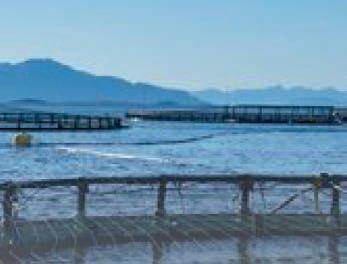
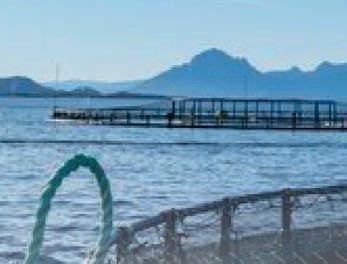
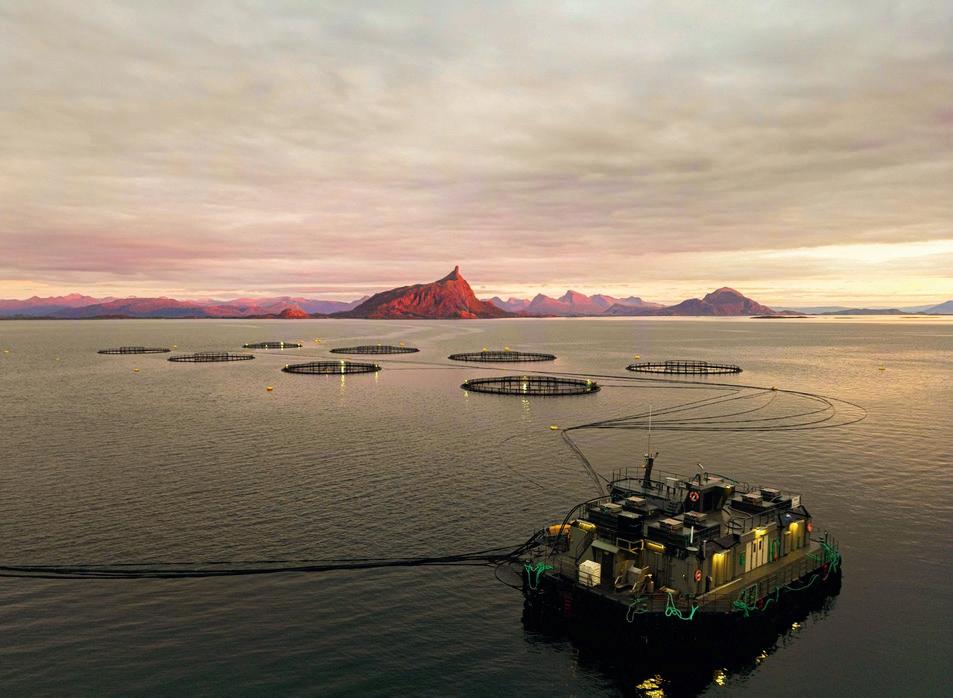
Three years ago, the Norwegian Directorate of Fisheries recommended that 11 areas off its long coast should be investigated for offshore development, with three now up for closer assessment.
The coalition government has commissioned a more detailed investigation into the environmental consequences, which it hopes will be completed this year. The decision as to which areas are to be opened is likely to be taken by the “King in Council”, an executive council of the monarch and ministers that normally meets weekly, and can take decisions that do not require prior legislative approval.
According to a report last year from the Scandinavian research organisation SINTEF, farming at sea has the potential to generate additional value creation of at least NOK 100bn (£9bn) and bring tens of thousands of

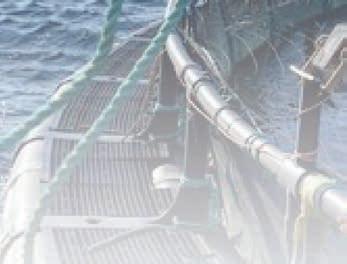


This marks the start of what could become a major future industry for Norway
www.fishfarmermagazine.com 34 OFFSHORE FARMING
Above: Lovundlaks Korsvika farm Opposite from top: Offshore area map; Olav-Andreas Ervik; Geir Ove Ystmark; SalMar Aker Ocean Farm
jobs to both urban and rural area.
Fisheries Minister Bjørnar Skjæran told the national broadcaster, NRK, recently: “This marks the start of what could become a major future industry for Norway, especially in the north.”
Because of its cutting-edge experience in the maritime and offshore oil and gas sector, Norway (much like Scotland) is well positioned to lead the way, although there are still a number of technological barriers to overcome.
Norway has been the undisputed world leader in Atlantic salmon farming since the late 1960s, but its growth has been confined to coastal areas and, more recently, the development of land-based farms.
The government believes the all-important structure for the work with aquaculture at sea is now in place.
In addition to the impact assessment, the overall regulations were laid down in November with a new series of salmon allocation regulations and changes to the production area rules.
The Minister declared: “The starting shot has finally gone off! We are now starting the process of assessing specific areas for offshore aquaculture. It is work that will be of great importance for future value creation and activity in the Norwegian aquaculture industry. The work to facilitate offshore aquaculture has thus reached a new and important milestone.”
The government’s new political base known as the Hurdal Platform points out that the development of a separate licensing regime for offshore aquaculture is a goal for this current administration.
By starting the impact assessment on three offshore areas (Trænabanken outside Bodø, Frøyabanken Nord outside Trondheim and Norskerenna Sør off Stavanger), Skjæran says the government is keeping up the pace in the development of a separate licensing regime for offshore aquaculture, while at the same time facilitating further growth in an industry that already brings in great value to the community.

It was recently announced that the government planned to assess the impact of farming at sea.
Skjæran says that both coexistence and strict requirements for sustainability are in full focus when the government now sets about making arrangements for offshore aquaculture.
He goes on: “When we now identify areas that are to be assessed for the impact of the new marine industry, it is also important for me to be absolutely clear that industries that already use the sea must be confident that they will not be displaced.
“Coexistence with other industries, and consideration of spawning grounds and rearing areas, are central to the process that is now starting.”
One company currently involved in investing in offshore development is Nordland-based Lovundlaks.



General Manager Olav-Andreas Ervik, who joined the business from Salmar Aker Oceans last summer, told NRK: “We are satisfied that the authorities are now taking the next step for the development of a new aquaculture industry in the open sea.”
But that was before the government unveiled its controversial salmon tax proposal, which has resulted in huge investment cutbacks.
Geir Ove Ystmark, head of the employer organisation Seafood
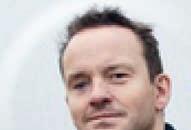
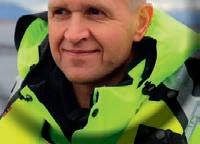

Norway, says it is “unthinkable” to invest in offshore expansion while the current proposal remains on the table.

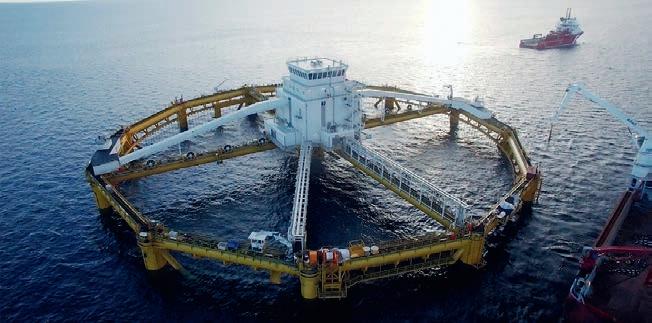
“For a start offshore is very capital intensive and any heavy increase in the tax burden would almost certainly curtail such investment because the money would not be on the table,”
SalMar Aker Ocean, which is likely to become the biggest offshore investor, holds similar views.
The company said in a New Year message: “A ground rent tax on coastal aquaculture may, however, weaken the development of offshore aquaculture, as long as companies that currently operate coastal aquaculture also finance the development of offshore aquaculture.”
The statement added: “Aquaculture at sea can be the key to profitable and sustainable growth for Norwegian fish farming, since the possibility of volume growth along the coast is limited. With Norway’s combined expertise in farming and the offshore and maritime industries, we as a nation can lead the development of a completely new industry. “
At the time of writing, the government was reported to be drawing back on its initial tax announcement, but it is too early to know if it will change attitudes among the companies.
Nonetheless, the stage is set for another big leap forward in the development of aquaculture. It is essentially a question of “at what speed?”
US and Faroes Islands may be next for offshore drive


AT least two other northern hemisphere countries, the US and the Faroe Islands, are looking at developing offshore aquaculture. There is also interest from South America and Australia.
Following an executive order on ocean fish farms from former President Donald Trump, the National Oceanic and Atmospheric Administration (NOAA), has identified federal waters off south west California and the Gulf of Mexico as areas of opportunity.
Less than three months ago, Alan Lowenthal, a member of the US House of Representatives, introduced the “Science-based Equitable Aquaculture Food Act”, which could further open the door. However, there is increasing opposition from the fishery sector and environmentalists, which could delay progress.
When Bakkafrost welcomed its giant new wellboat to the Faroe Islands last month, CEO Regin Jacobsen went out of his way to point out that it would probably be used for future offshore activity.
Meanwhile, like Norway, Scotland certainly has the marine industrial experience as a leader in the oil and gas sector, but again firm plans look to be some way off being realised.
www.fishfarmermagazine.com 35
The humpies invade
As numbers of humpback salmon, the fish that made Alaska canned salmon famous, surge in Highland rivers, what does this mean for native Atlantic species? By Sandy Neil
Quiz question: what links the topmouth gudgeon, Chinese mitten crab, carpet sea squirt, quagga mussel, rhododendron and the grey squirrel? They are all just a few of the 3,000 non-native, or “invasive”, species now populating the UK. Now we have one more to add: the humpie, the fish that made Alaskan canned salmon famous.
Oncorhynchus gorbuscha, the pink or humpback salmon – named after the hump males develop when entering freshwater to spawn – is the smallest and most abundant species of Pacific salmonids. It dominates commercial offshore salmon catches in the North Pacific, both in numbers and mass, ranging from rivers in North America from the Beaufort Sea to California, and rivers in Asia from the Laptev Sea in the Arctic to the Sea of Japan.
But this opportunistic species is also spreading further into the North Atlantic, raising concerns for declining stocks of native Atlantic salmon (Salmo salar).
“Invasive alien species are among the most prominent threats to native biodiversity and ecosystems,” explains one paper in the Journal of Fish Biology, titled ‘Growth of invasive pink salmon at sea assessed by scale analysis’.
“Their impact on native biodiversity is associated with predation, competition, hybridisation, energy transfer, and transfer of parasites and diseases,” wrote Tora Paulsen, lead author of a team funded by Nord University and the Norwegian Institute for Nature Research.
“Invasive pink salmon has been present in variable, but low, numbers in Norwegian waters since c. 1960,” the paper continues.
Above: Fisherman with pink salmon, Alaska Opposite from top: Cans of pink salmon, New York; Pink salmon
“From 2017, the abundance and distribution of invasive pink salmon in Norway increased dramatically, while also spreading to numerous rivers in other countries draining into the North Atlantic Ocean, including Sweden, Denmark, the United Kingdom, Ireland, Iceland, Germany, France, the Faroe Islands and Greenland.”
Now they’re setting up home in Scotland too, according to a new paper published in January in the Journal of Fish Biology, titled “Evidence of potential establishment of pink salmon Oncorhynchus gorbuscha in Scotland”.
“In spring 2022, pink salmon Oncorhynchus gorbuscha smolts were recorded in the UK,” writes lead author Michał E. Skóra of Queen Mary University of London. “Fish were caught in the Rivers Thurso and Oykel
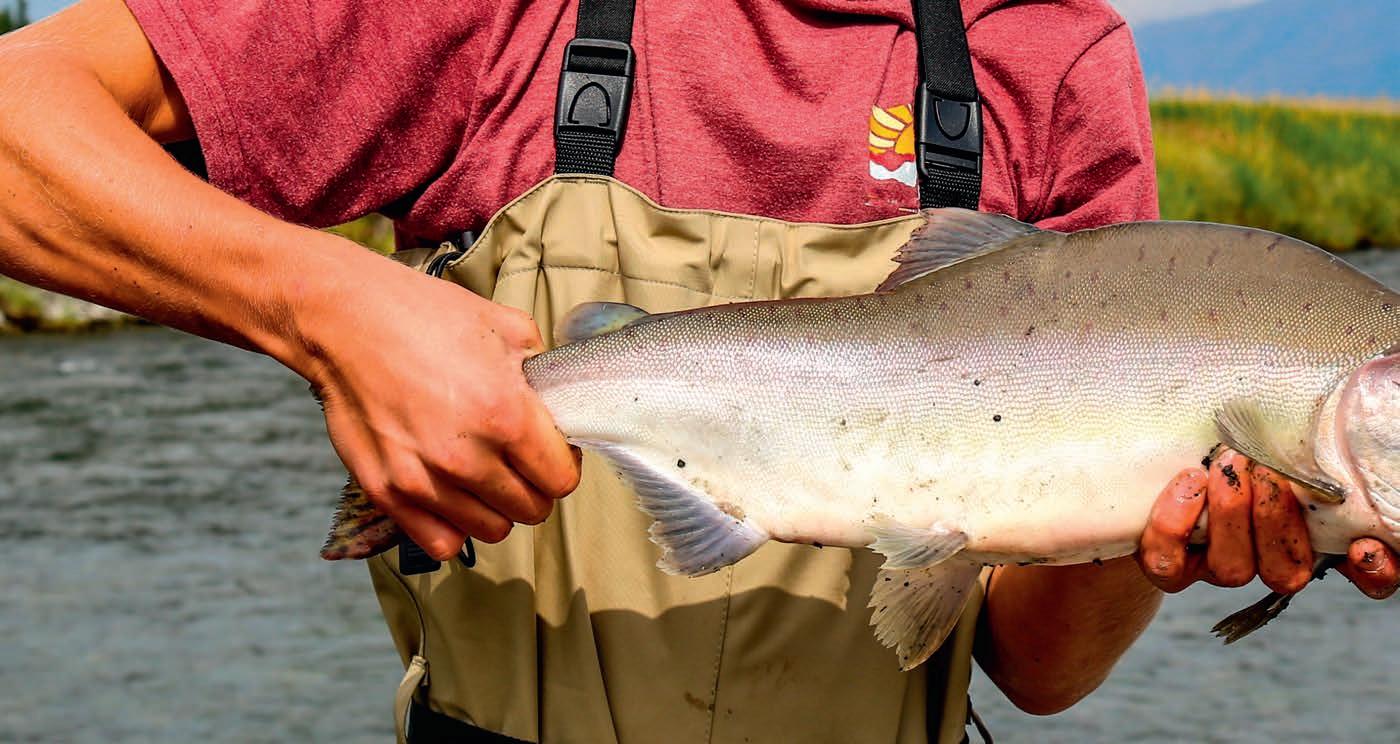
WILD SALMON
Invasive alien species are among the most prominent threats to native biodiversity
www.fishfarmermagazine.com 36
”
in Scotland between 13 and 17 March. To our knowledge, this is the first observation of O. gorbuscha smolts in Europe outside the Scandinavian and Kola peninsulas including other tributaries of the White and Barents Seas. It also provides evidence of successful spawning in 2021, completion of the freshwater phase of the life cycle, and indicates the possibility for potential establishment of an O. gorbuscha population in Great Britain.”
How did they get here? “O. gorbuscha was deliberately introduced by USSR/Russia into White Sea tributaries to increase fish production over five decades in the second half of the 20th century,” explains Skóra. “Later introductions resulted in O. gorbuscha successfully establishing permanent, selfreproducing odd-year populations in the White Sea tributaries.”
Recently their numbers have exploded in Scotland, says Fisheries Management Scotland, the representative body for the






country’s District Salmon Fishery Boards: “In 2017, unprecedented numbers of pink salmon were captured in Scotland. A similar situation was observed in 2019 and 2021, and in the same years pink salmon were also reported in Norway, Finland, Iceland, Denmark and Germany. Pink salmon are not native to Scotland and are likely to have ‘strayed’ from some of the rivers in northern Norway or Russia. The reasons behind the unusually large numbers since 2017 remain unclear.”
Paulsen adds: “There are serious concerns that the establishment of invasive pink salmon will have considerable impacts on native salmonids and the ecosystems. In its native range, pink salmon is known to be a species that can be very abundant and greatly impact freshwater, marine and terrestrial ecosystems. Invasive pink salmon has shown that ability to occur in large numbers, with several thousand pink salmon occurring in some small catchments in northern Norway. Information on life history, population dynamics, survival bottlenecks and potential impacts of invasive pink salmon in and around the North Atlantic Ocean and Barents Sea is scarce.
“The reasons for the sudden increase in invasive pink salmon from 2017 are not known. However, in a variety of examples from many taxonomic groups, introduced species may experience a substantial lag time until there is an explosion in abundance, as we have seen in pink salmon.
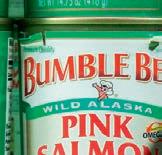
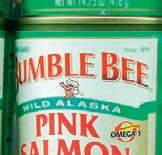




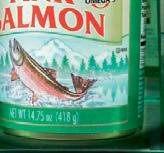
“Another reason for the increased abundance in recent years might be climate change and a warmer ocean in the northern areas. Abundant returns of pink salmon are correlated with ocean surface temperatures in the North Atlantic Ocean and Barents Sea, and the current increasing trends in sea-surface temperatures and reduced ice cover seem to benefit the sea survival of pink salmon in this area. Hence, marine conditions impacting pink salmon growth and survival may be key to understanding variation in population abundance.”
“The marine phase of pink salmon’s life cycle in the Atlantic Ocean is poorly understood,” writes Beatriz Diaz Pauli, lead author of a paper titled ‘Geographic distribution, abundance, diet, and body size of invasive pink salmon in the Norwegian and Barents Seas, and in Norwegian rivers’, published in the ICES Journal of Marine Science in January this year.

“Individuals emigrating from rivers in northern Norway or northwestern Russia enter the Barents Sea or the White Sea. Recent observations of pink salmon around Greenland showed that [they] can perform long-distance migrations in the north-east Atlantic Ocean. Large parts of the north-

east Atlantic Ocean are therefore potential feeding habitats.
“These productive areas are used as feeding grounds by several large fish stocks such as Norwegian spring-spawning herring, mackerel, blue whiting, capelin and polar cod. These ocean areas are also important feeding areas for Atlantic salmon.
“In the North Pacific Ocean, pink salmon are known to impact the marine ecosystem through competition for prey with other fish and birds.
In the Norwegian and Barents Seas, pink salmon, based on the diet found here, can potentially compete with other abundant pelagic fish species such as herring, capelin, polar cod, blue whiting, and Atlantic salmon. In numbers, these other species, except Atlantic salmon, are at present several orders of magnitude more numerous than pink salmon returning to Norwegian and Barents Seas rivers.
Pink salmon in the Atlantic Ocean are therefore not expected to have a largescale effect on the ecosystem, due to their relatively low numbers in the sea until now. However, pink salmon may still have local effects from grazing on fish larvae and other prey in estuaries, fjords and other coastal areas.”
The researchers warn that pink salmon have spread throughout the Norwegian Sea and along the Norwegian coast, and abundance has increased by several orders of magnitude in 2017, with no signs that it has peaked.
Fisheries Management Scotland has issued advice on what to do: “We have been working with our members to record sightings of pink salmon and to assess various means of removing these fish from our rivers,” it says. “Liaising with Marine Scotland, NatureScot and SEPA, Fisheries Management Scotland have produced detailed guidance on what to do if you capture or observe pink salmon in Scotland, together with a reporting tool for recording captures or sightings.
FMS recommends that if anglers are confident that the fish they have caught is a pink salmon, it should be humanely despatched and retained, and the capture reported using the FMS online application at fms.scot/pink-salmon-in-scotland


www.fishfarmermagazine.com 37
Local voices must have the last say

John Aitchison
of




the Coastal Communities Network responds to our Final Hurdle article on planning. Views expressed are his own

The Coastal Communities Network’s (CCN’s) 24 Scottish community-based groups believe that fish farms need a social licence to operate. We have lost trust that this industry cares about its impact on our seas. The Final Hurdle article (Fish Farmer, November 2022, page 44) said the planning system is biased against fish farming. The CCN disagrees.
Impacts on wild salmonids

The Final Hurdle discussed the proposed Loch Long farm and an expansion in Loch Hourn. Local planning authorities (LPAs) are legally bound to assess the risk to wild fish, including the cumulative effect of sea lice from existing farms, and escapes. Their statutory advisors are local District Salmon Fisheries Boards (DSFB), Marine Scotland Science (MSS) and NatureScot.
Both proposals were turned down, in part, because of this risk*.
MSS did not object to either plan, but that does not mean wild fish are safe, as MSS never assesses cumulative impacts. Instead, it claims that single-farm environmental management plans (EMPs) can control any risk. They cannot, as EMPs can’t be imposed on existing farms.
At Loch Hourn, Mowi interpreted its own sea lice modelling as showing no risk, but Highland Council’s planning committee


heeded the Skye & Lochalsh Rivers Trust’s strong objection and expert hydrodynamic modelling done for Friends of Loch Hourn, showing a cumulative risk. A government-appointed reporter has since reversed their rejection – not because there was no cumulative risk, but because statutory consultees had not objected to it.
The cumulative risk is real, which is why SEPA is developing a new sea lice framework.






Marine Scotland’s behaviour has undermined communities’ trust that it would run aquaculture consenting fairly.

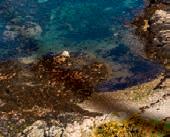
At Loch Long, the statutory Argyll DSFB objected that escaped fish could affect the Endrick Water Special Area of Conservation’s (SAC’s) wild salmon. As the LPA couldn’t be certain beyond reasonable scientific doubt that the farm would not impact the SAC, it was legally obliged to refuse.
A “missed opportunity”?
Loch Long is unsuitable for fish farming. The proposed semienclosed cages would capture none of the huge amount of dissolved nutrients excreted by 3,452 tonnes of salmon. The loch’s waters flush so slowly that this pollution would risk triggering harmful algal blooms in our fast-warming sea.

Loch Long Salmon’s Managing Director regrets a “missed opportunity to ensure Scotland benefited from new technology that could benefit the environment”, but semi-enclosed cages can only reduce nutrient pollution if they replace open nets holding the same fish biomass. Putting them where normal farms cannot go will make things worse.
Landscape impacts
Tourism contributes about £6bn to Scottish GDP and 90% of visitors come here primarily for the landscape (according to VisitScotland). A 2011 government-funded survey found fish
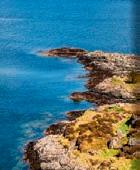
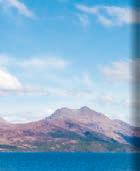
 Top: Fish farm, Loch Tay
Above: Ornsay
Lighthouse, Loch Hourn
Top: Fish farm, Loch Tay
Above: Ornsay
Lighthouse, Loch Hourn
www.fishfarmermagazine.com 38 OPINION
farming caused the most negative responses of any activity: 23% of tourists said fish farms spoiled the appearance of the coast and 10% were less likely to visit places with farms. A third didn’t want to see more and 41% didn’t want them to become bigger.
LPAs must assess the cost of these impacts, with statutory advice from NatureScot.






At Highland Council’s hearing about Organic Sea Harvest’s Flodigarry proposal, local people explained the economic benefits of their wild coastline. One of Skye’s top employers, the Flodigarry hotel, employs 18 local workers. By spending £4.2m on Skye (2013–20), it generates 50 full-time equivalent (FTE) posts a year. The hotel’s 24,000 annual visitors come because its location is one of the most spectacular in Europe. An optimistic impact assessment suggested 15% falls in sales, investment and employment if the farm was built, with three to four staff losing their jobs and five to six other FTE going on Skye; more than the fish farm would have created.
The councillors rejected the Flodigarry and nearby Balmaqueen farms, and government-appointed reporters confirmed their decisions.
Rejections to protect wild fish or landscapes are extremely rare, as support for aquaculture is embedded in Scottish planning policy. A total of 52,000 tonnes of new biomass has been consented since 2018, when a parliamentary inquiry said that, “…urgent and meaningful action needs to be taken to address regulatory deficiencies as well as fish health and environmental issues before the industry can expand”.
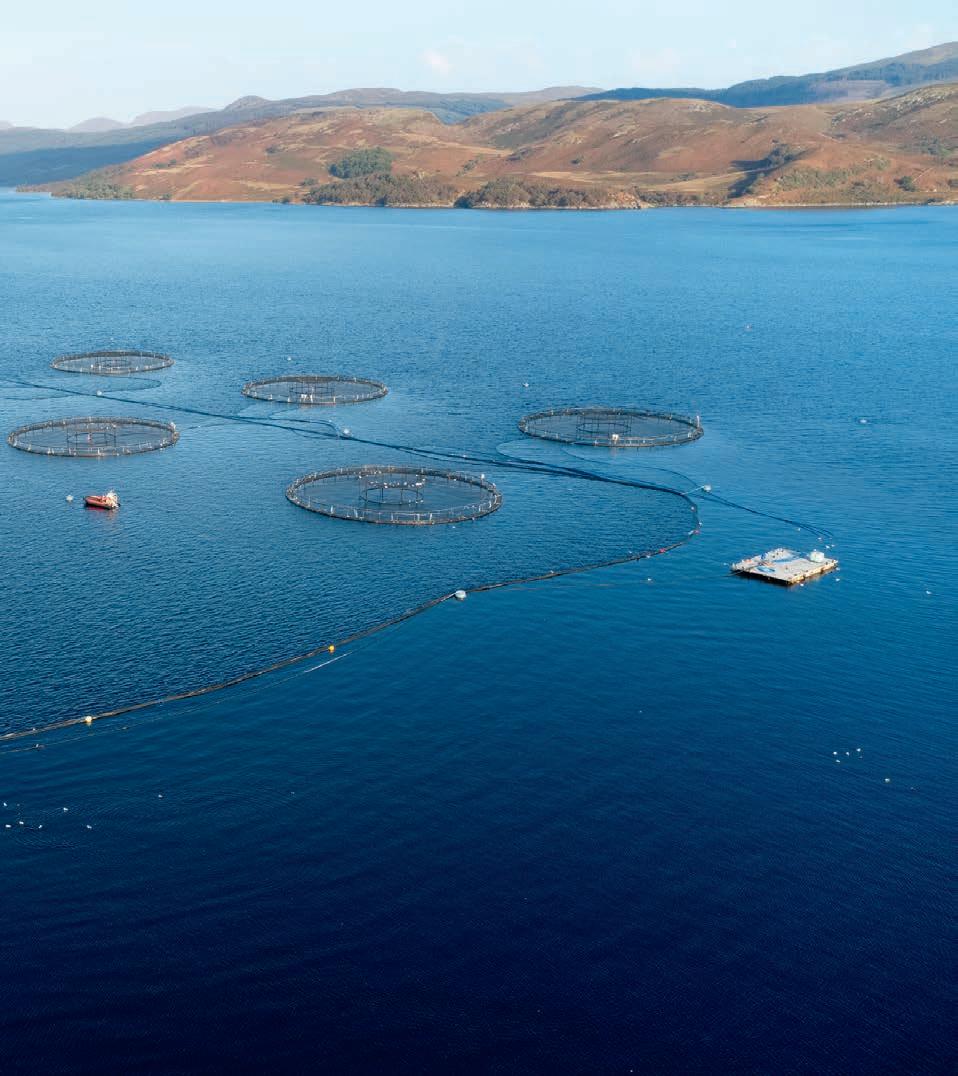
Social licence
Mowi’s Head of Environment says “…development decisions that affect the livelihoods of many local families [should] be evidence-based...” but why disregard the concerns of so many people in the community closest to Mowi’s Loch Hourn farm,

where only one farm worker lives part-time, for a 10% increase in production?
Like so many other communities, those people are pushing back because they know what is happening in the fish farms. They see official statistics that 15 million salmon died in 2022. They smell the stinking mort lorries and they know the industry dumps all its pesticides where crab and lobster fishermen make their living.
The companies are destroying their social licence to operate by pressing on with expansion rather than dealing with these issues or admitting that they cannot.
Local democracy is essential for public trust. If the Scottish government tries to overcome this “hurdle” by taking over fish farm consenting, it will remove the last vestige of local democracy and cement the loss of trust forever.
The industry also needs trust to sell fish to increasingly well-informed consumers, so why not adhere to Salmon Scotland’s own Community Engagement Charter?
The charter says: “Remember that community support and endorsement is important for the farms to operate … a Social Licence to Operate includes: the perception that relations between the community and the company are based on an enduring regard for each other’s interests … [this] is not a charitable act, but rather a mixture of ‘core business’ and ‘good citizenship’, which allows an industry to prosper”.
Fish farms are not vital infrastructure like power stations, which must trump the wishes of local people. Shareholders in Bergen or Tórshavn don’t care about those of us who live with the impacts of their farms.
Yes, open-net fish farms create some jobs in coastal communities, but at too high a cost. There would also be jobs if the farms were designed, operated and sited to do no harm. Local democracy is needed to make this happen.
John Aitchison is Chairman of the Friends of the Sound of Jura and a spokesperson on aquaculture on behalf of the Coastal Communities Network Scotland. He has lived in Argyll for about 30 years and has considerable experience of how the planning system and SEPA’s CAR licensing are applied to fish farm consenting. The views expressed are his own.
* Loch Long Salmon’s proposal for a semi-closed farm was voted down by the Loch Lomond & the Trossachs National Park Authority on the advice of officers. Mowi Scotland’s application for consent to increase production at its Loch Hourn site was refused by Highland Council’s Northern Planning Committee in June 2022, but that decision was overturned by the Scottish government’s reporter in December 2022.
www.fishfarmermagazine.com 39
Local democracy is essential for public trust
”
Sea
FishFarmerbrings you all the latest Sea Lice news and updates
Scotland prepares to host Sea Lice Conference
Planning is already under way for the 2024 International Sea Lice Conference, which will be held in Scotland. The last time the biennial conference took place in Scotland was in 2001, when it was held in Aberdeen. This time, Scotland’s bid to host the event was led by the Sustainable Aquaculture Innovation Centre (SAIC).
When the decision was announced, Heather Jones, CEO of SAIC (pictured), commented: “It is great to see such an important global summit returning to Scotland, where our aquaculture sector is thriving and we have a wealth of leading academic expertise. In collaboration with other ‘Team Scotland’ organisations, SAIC is looking forward to welcoming representatives from the international academic community to share knowledge and new ideas about the management of sea lice.”

ASC defends Salmon Standard
The Aquaculture Stewardship Council (ASC), generally regarded as one of the strictest standard-setting bodies for fish farming, published a new Salmon Standard in September. It immediately drew flak from those who saw it as weakening the rules on sea lice, but ASC says this criticism is misplaced.
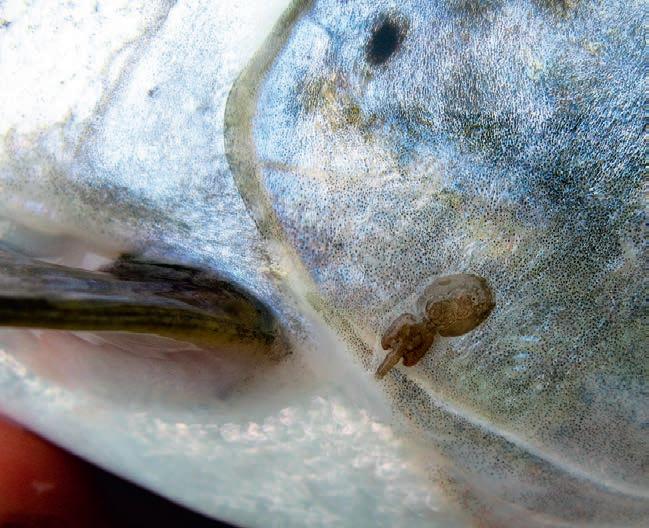
The previous standard set the maximum allowable lice count at 0.1 adult female per fish, in line with Norwegian regulations, but the new standard allows variation by region, following the thresholds set by local regulators. ASC says this reflects local factors and has pointed out that the standard is actually much tougher as regards the timescale farmers have to get lice numbers back down.
Genetic research could be key to making salmon lice-resistant
Researchers from Norway, the UK, the US, Canada, Sweden and Australia are collaborating to discover what makes some Pacific species of salmon more resistant to sea lice – and whether that resistance could be transferred to help protect Atlantic salmon. The project, led by Norwegian research institute Nofima, is known as CrispResist. It will examine the mechanisms underlying cross-species variation in host resistance to sea lice and the genetic basis for those differences. The study will also look at the feasibility of introducing the “resistant” genes to strains of Atlantic salmon, using the gene editing method CRISPR-Cas9, and at the likelihood or otherwise that sea lice could evolve and adapt to overcome resistance.

www.fishfarmermagazine.com 40 SEA LICE
Lice
Shot in the arm for salmon
Could salmon be vaccinated against sea lice? A study by researchers at the Interdisciplinary Centre for Aquaculture Research (INCAR), at the University of Concepción in Chile, tested three vaccine prototypes that could do just that. The prototypes are based on two proteins: cathepsin and peritrophin. In the experiment, salmon were exposed to sea lice and all three prototype vaccines were found to reduce the burden of infestation, with effectiveness ranging from 24% to 44% and 52%. The mechanism appears to be that the vaccines help to strengthen the salmon’s inflammatory response to the parasites by effecting changes at molecular level.
Bakkafrost brings out the big guns
In January, one of the largest wellboats in the global aquaculture industry – the 109m Bakkafossur– was added to the Bakkafrost Faroe Islands fleet. The vessel will be a key weapon in Bakkafrost’s war against sea lice – it is equipped with an FLS sea lice removal system – as well as facilitating freshwater treatment for gill health.
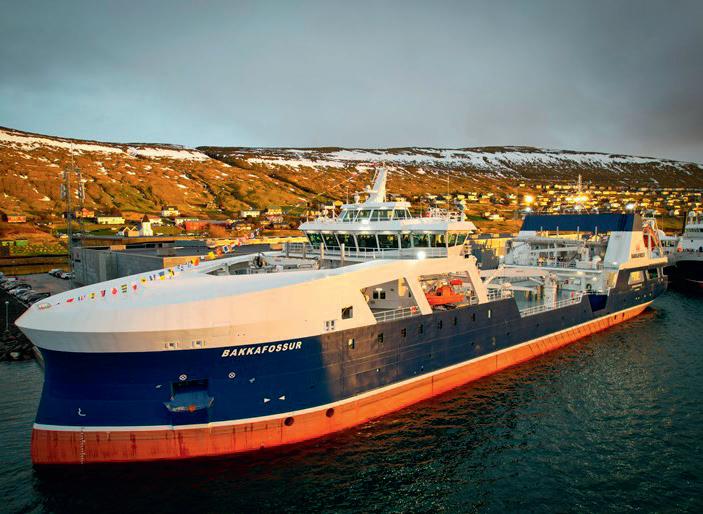
The Bakkafossurcan carry up to 1,000 tonnes of live salmon and is regarded as a huge upgrade to secure sustainable operations in the future. In addition to the five diesel-electric engines, the vessel is equipped with large batteries, ensuring an approximately 20% increase in energy efficiency.
It’s a BREEZE for novel lice treatment
BREEZE, a new sea lice treatment concept under development to help make aquaculture more sustainable has successfully completed environmental safety trials of the state-of-the-art equipment in Scotland.
The multinational consortium behind the BREEZE initiative carried out the week-long trials at a salmon farm in Shetland owned and operated by Scottish Sea Farms. The trials validated modelling already carried out and have shown that sonic technology to treat fish against sea lice, combined with low concentrations of hydrogen peroxide, can operate safely in an open marine environment.

In 2021, the project consortium, made up of Aqua Pharma Group, Pulcea and the Norwegian University of Science & Technology, received funding from the European Union’s food innovation initiative, EIT Food.

www.fishfarmermagazine.com 41
Pictured: The BREEZE trial team
Not guilty?
Salmon farms are not responsible for spreading sea lice among the wild fish population, according to a new report from the Canadian government’s scientific advisors. British Columbia’s farmers have welcomed the findings.
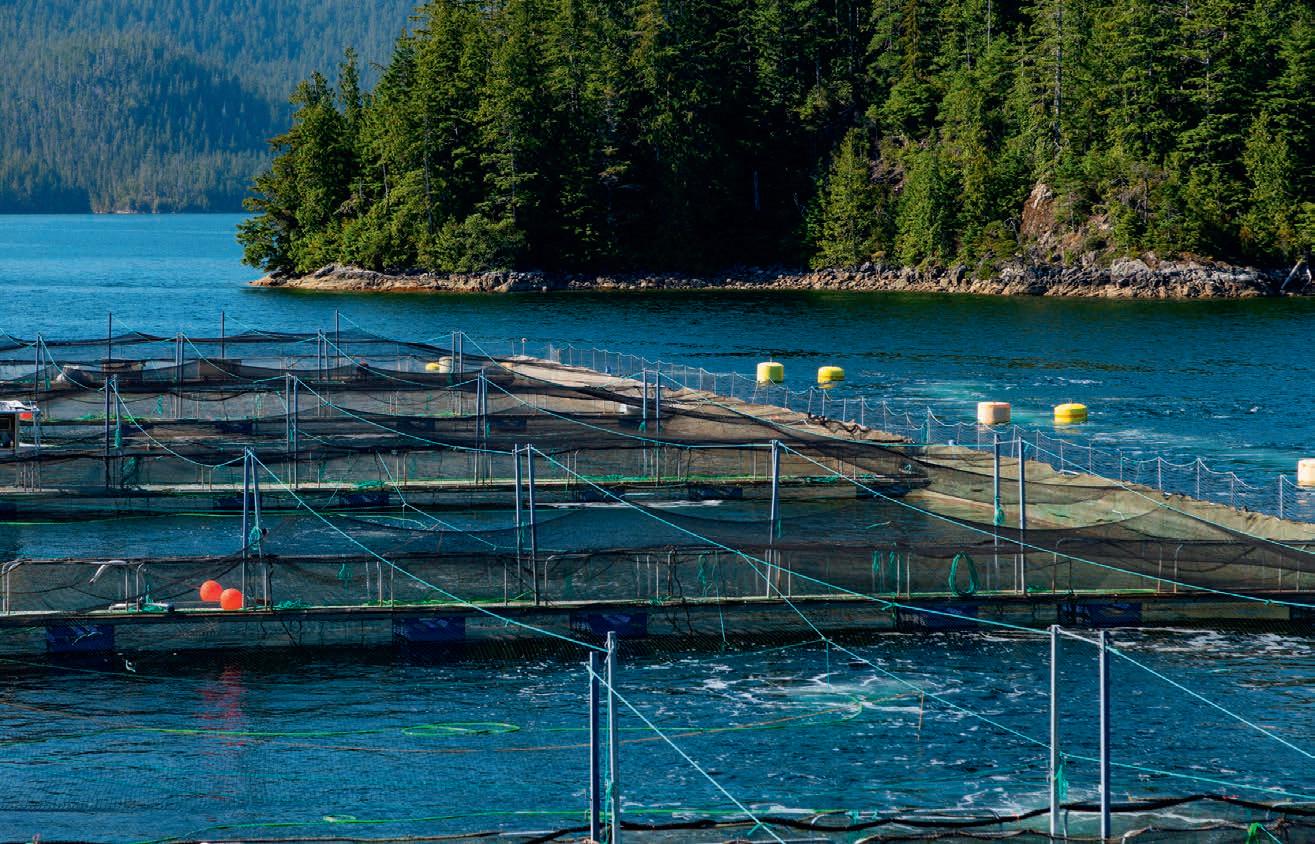
The peer-reviewed Science Response Report, Association between sea lice from Atlantic salmon farms and sea lice infestations on wild juvenile Pacific salmon in British Columbia, was published on the Department of Fisheries and Oceans Canada’s (DFO) website by the Canadian Science Advisory Secretariat (CSAS).
The aim of the study was:
1. to estimate the number of Lepeophtheirussalmonis copepodids (the infective sea lice later larval stage, following the earlier nauplii stage) produced by Atlantic salmon farms in British Columbia;
2. to summarise counts of sea lice numbers on wild juvenile Pacific Salmon; and

3. to determine the statistical link between sea lice infestations on Atlantic salmon farms and prevalence on wild juvenile Pacific salmon populations in British Columbia.


The CSAS study made use of data gathered from a number of sources, including the lice counts that salmon farmers are required to carry out, and surveys of juvenile wild salmon. The study also arrived at an estimate for the number of copepodids generated by salmon farms, based on the number of observed adult females and a modelled estimate of the copepodids produced by those females, based on published, peer-reviewed modelling approaches.
The researchers focused on four regions of the British Columbia coast where wild and farmed salmon could be expected to interact: Clayoquot Sound, Quatsino Sound, the Discovery islands and the Broughton Archipelago.
Following analysis, the report says: “We saw a positive but statistically insignificant association in all four regions studied.”
The salmon farmers generally apply their most intensive lice management measures prior to the out-migration window, that is the season in which wild juveniles swim out from fresh water rivers into the sea, when they are considered most at risk from infestation by lice.
Perhaps not surprisingly, then, the CSAS study also finds: “The number of Lepeophtheirus salmonis adult females on Atlantic salmon farms and the corresponding
SEA LICE
”No statistically significant association was observed
The latest research from Canada suggests that salmon farms are probably not the main source of lice infestation for wild fish
www.fishfarmermagazine.com 42
Opposite from top: Fish farm in the Broughton Archipelago, Bri�sh Columbia; Juvenile salmon




This page from top: Sea lice on salmon; Brian Kingze�; Jim Powell
number of copepodids released from Atlantic salmon farms were lowest during the out-migration window compared to the rest of the year across all Fish Health Surveillance Zones.”
Crucially, the study concludes: “No statistically significant association was observed between infestation pressure attributable to Atlantic salmon farms and the probability of L. salmonis infestations on wild juvenile chum and pink salmon in Clayoquot Sound, Quatsino Sound, Discovery Islands, and Broughton Archipelago. However, the data suggests a positive trend in all studied areas. The lack of statistical significance implies that the occurrence of L. salmonis infestation on wild migrating juvenile Pacific salmon cannot be explained solely by infestation pressure from farm-sourced copepodids.”











The report also concludes, however, that sea lice numbers are on the rise in all the areas studied.
The authors also say that further work is required to refine monitoring of sea lice activities and to improve modelling, for a more accurate risk assessment.

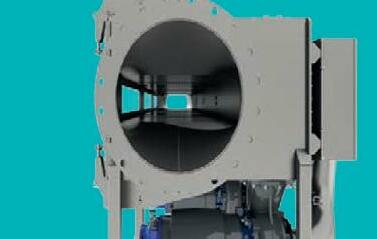








Where does this leave policy?




























































































































Brian Kingzett, Executive Director of the BC Salmon Farmers Association (BCSFA),




































































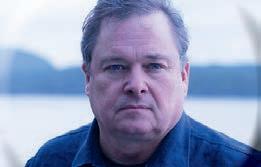



comments: “As a sector, we continue to improve and innovate to ensure that our operations have minimal impact on the surrounding ecosystem. As farmers, and as British Columbians, we care about wild salmon and agree wholeheartedly with DFO [Department of Fisheries and Oceans] Minister Joyce Murray regarding ensuring the protection of wild Pacific salmon.”
In 2020, Joyce Murray’s predecessor as Fisheries Minister, Bernadette Jordan, ordered the closure of all net-pen fish farms in the Discovery Islands region of British Columbia, and Canada’s federal government is consulting on a “transition plan” to end all netpen farming by the end of 2024.
The argument that salmon farms endanger wild fish by allowing sea lice numbers to multiply is one of the principal reasons given by campaigners for shutting down the net-pen sector. It is also a key element in regulators’ plans aimed at minimising the impact of farming on wild fish, such as Norway’s “traffic light” system and the
www.fishfarmermagazine.com 43 Welcome to Delousing 2.0: • 90-100% delousing effect • Capacity of 150-200 ton/hour • Compact & Easy installation • Documented best fish wellfare GameChanger! NEWS BREAKING Fore more information www.fls.no 3
spatial plan being mooted by the Scottish Environment Protection Agency.
While the argument for a precautionary principle is still strong, the latest study from Canada implies that the risk to wild juveniles from sea lice does not come primarily from fish farms acting as a “reservoir” of lice.
Lice life cycle
So where do the lice come from? Earlier last year, Jim Powell, Director with Fidelis Aquaculture Management, presented findings from another study at the International Sea Lice Conference, held in the Faroes.
His talk, titled “Are farmed fish the progenitors of lice on wild Pacific salmon?” explained the aims of the research and set out its findings.
The purpose was to test a widely accepted paradigm for sea lice infestation:
1. wild salmon adults return bearing lice;
2. these infect salmon in cages;
3. lice incubate and multiply over the winter; and
4. smolts passing by farms on their way out to sea are infected, and the cycle starts over again.
The research was supported by the Wei Wei Kum First Nations, Grieg Seafood and Cermaq, in terms of providing resources and data, but none of the supporting organisations had any editorial control.
Powell began by looking at data from “pristine” areas of the British Columbian coast, where there are wild salmon but no fish farms. From this he was able to estimate a “baseline” level of infestation at around 0.2 adult lice per fish – in other words, this was the typical level for infestation for wild fish in the absence of farms.
He also looked at data from farm lice counts, at other potential contributory factors and at the sea lice life cycle (the stage of development at which the lice were observed).
In most regions studies, lice counts were higher among the farmed
salmon than among the wild salmon., but there were very significant shifts in lice counts between one year and the next in some regions.
The lice counts for wild fish in a number of regions did not vary greatly, however, even in years when the farms in the region were fallow and there were no farmed fish in cages.
Powell said: “We found no clear pattern of association.”
Significantly, periods where there were higher levels of lice on farmed fish did not translate to higher levels of lice found on wild fish.
Also, the sea lice life cycle analysis showed few motile lice on the wild fish, pointing to a winter infection period for all the fish as opposed to a model in which the farms act as a reservoir over winter and then reinfect wild fish in spring.
Powell concluded that farms are an unlikely source of nauplii, the free-swimming larval stage. Also, his best estimate of the time juveniles took to reach the open sea suggested that each individual would be likely to spend only a matter of minutes in the close vicinity of any given farm.
His analysis of wild fish lice counts in the Discovery Islands region, before and after farms were stocked in 2019, and before and after they were destocked in 2020, found very little difference. For example, the average count in 2020 while the farms were active was 0.51; after the farms closed it was 0.54.
Powell argued that the source of infection must be external to the farms, because after treatment the adult lice were eliminated –but reinfection began with more adult lice.

The likely suspects are wild fish that do not pass in between salt and fresh water in the way salmon do, such as Pacific sand lance, white sturgeon or ling cod, all of which can act as hosts for sea lice.


He concluded: “When motile lice numbers on farmed salmon are low during outmigration, farms are improbable as a source of lice transfer, or as a source of a generation of nauplii.
“There is an external reservoir of adult lice that is not completely generated by farmed salmon.”
Powell noted, however, that sea lice management practices still need to be improved.
None of the findings absolve farmers from the responsibility to manage sea lice, but they do suggest that the threats to wild salmon cannot simply be dealt with by reducing, relocating or banning fish farms.
FURTHER INFORMATION
Association between sea lice from Atlantic salmon farms and sea lice infestations on wild juvenile Pacific salmon in British Columbia, Canadian Science Advisory Secretariat (CSAS) can be downloaded as a PDF from bit.ly/CSAS-sealice2023

SEA LICE
”
There is an external reservoir of adult lice that is not completely generated by farmed salmon
www.fishfarmermagazine.com 44
This page from top: Ling cod; Pacific sand lance


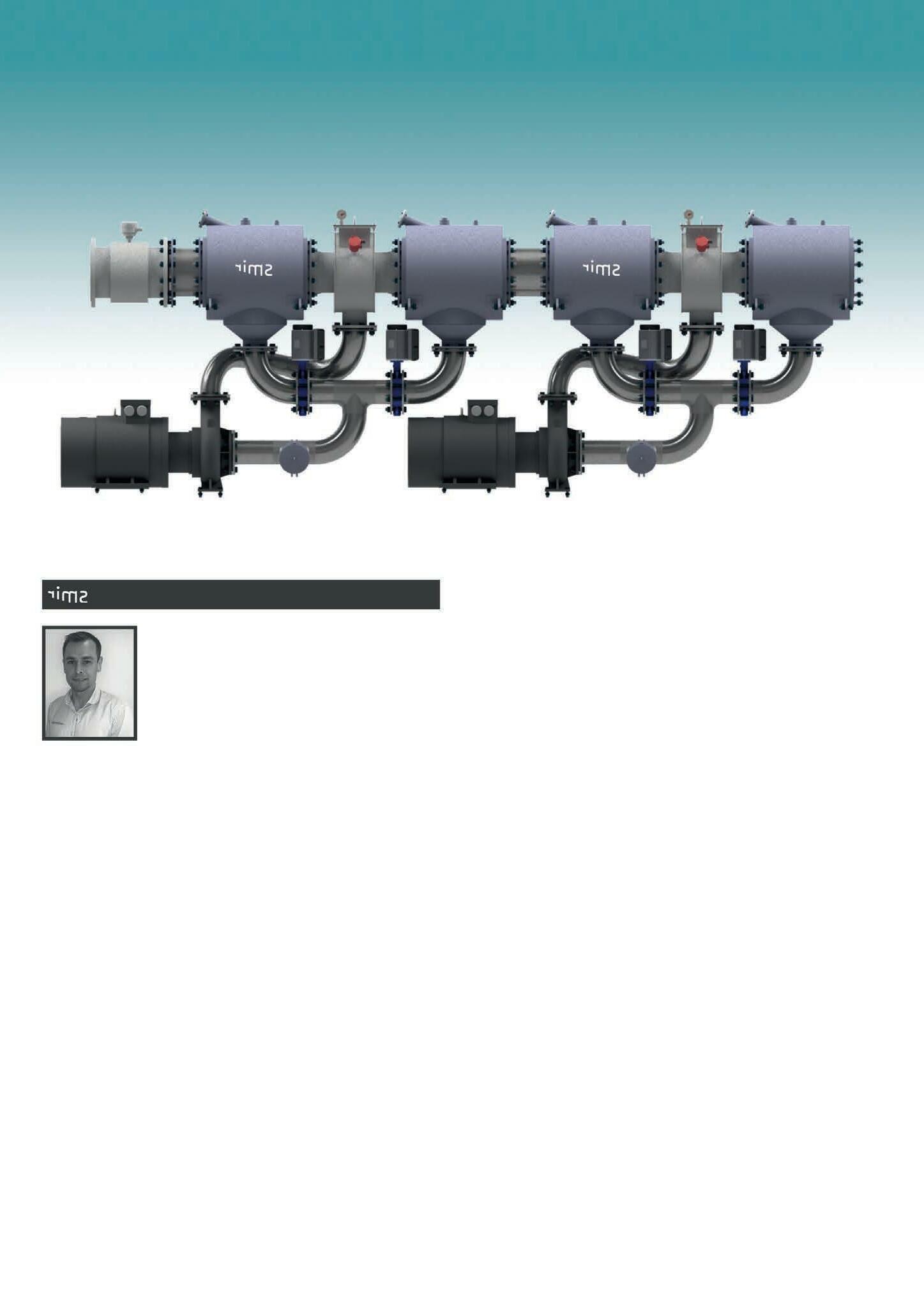










Ocean hotspots R
esearchers have constructed a computer model that simulates sea lice as they evolve resistance to pesticides in salmon farms throughout southern Norway. Their findings have identified high-density farming regions as “hotspots” of louse evolution.

The model is a new tool to help find ways of controlling lice that limit the risks of resistance, and so maintain the effectiveness of treatments through time.
Salmon lice can quickly adapt to new challenges, as the salmon aquaculture industry has discovered over the past decades. Many chemicals used to treat lice-infested salmon have become ineffective due to lice evolving pesticide resistance. As new pesticides and other treatments become available to farms, it is crucial that the industry considers whether resistance could arise, and what actions farms can take to prevent this from happening. For this, a better understanding of how pesticide resistance grows and spreads across a network of salmon farms is required.
Researchers from the University of Melbourne, Nofima, the Institute of Marine Research and the University of Sydney have built a new computer model to simulate salmon lice evolutionary dynamics. This model is described in their new paper “A metapopulation model reveals connectivity-driven hotspots in treatment resistance evolution in a marine parasite”, published in ICES Journal of Marine Science
Modelling resistance
This model simulates lice infesting more than 500 salmon farm sites throughout southern Norway. It tracks how lice grow on farms, how they disperse between farm sites on ocean currents (using
data from the Institute of Marine Research lice dispersal model), and how they evolve resistance to pesticide treatments. To test the model, the authors simulated lice adapting to azamethiphos – one of the chemical pesticides used on farms, to which resistance is now widespread.
If sea lice can adapt to new management strategies, then using models to predict the evolutionary responses of lice can find ways of slowing down, or even stopping, the spread of resistance.
Their results match well with the current understanding of azamethiphos resistance: in just 10 years, the gene that provides resistance went from being very rare in the louse population to being very widespread. The model results highlight the link between how regularly farms were treated with azamethiphos and how rapidly resistance evolved. The more frequently a farm was treated, the more likely that any lice carrying the resistant gene were to survive, breed and pass the gene onto the next generation. And as the population of lice on a farm became less susceptible to the chemical, treatments needed to be applied more frequently to keep infestations under control – which further accelerated evolution.
Above: Popula�on of adult L. salmonis on farms in southern Norway at 1, 4, 7, and 10 years into the simula�on [(a)–(d), respec�vely]. Colour indicates the frequency of the resistant R allele in adults on each farm (low = blue; high = red)
Right: Sea lice

www.fishfarmermagazine.com 46 SEA LICE
A new scientific model shows how concentrated populations of sea lice can spread resistance to pesticides more quickly
‘Evolutionary hotspots’




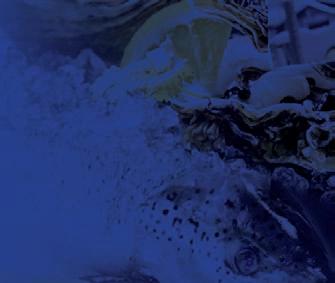
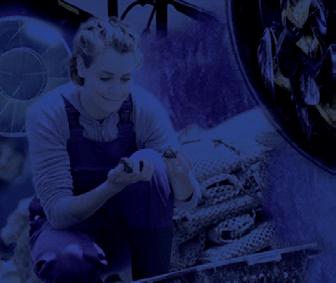






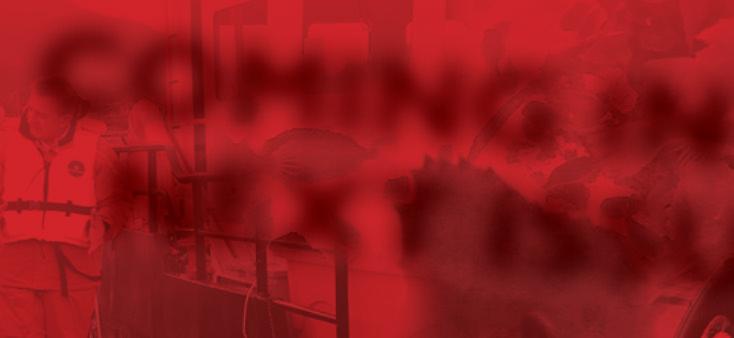








Interestingly, there was a distinct spatial pattern to adaptation. That is, resistance evolved at different speeds in different parts of Norway. Resistance evolved most rapidly in the south-west region, around Hardangerfjord, before spreading northwards along the coast. The authors describe this area as an “evolutionary hotspot”. By identifying locations like these, researchers know which areas are most important when it comes to monitoring and managing for pesticide resistance.
Spatial patterns in how lice evolved resistance in the model were influenced by how likely it was that infective lice larvae were transmitted from one farm to another. Resistance evolved more rapidly in areas where farms were in close proximity and currents facilitated the transmission of lice infections from one farm to another. This was because high transmission of lice between farms led to high infestation rates and, in turn, more treatments. It also allowed for resistant genes to spread more easily to new areas.
The evolutionary hotspot in Hardangerfjord is a region containing many farms in close proximity. As the salmon industry grows, the placement of new farms is critical. The model could be used to investigate how farm distribution could be optimised to reduce lice spread.

Alternative strategies

The study also highlights the need for alternative methods of louse control that are more difficult for lice to adapt to than chemical pesticides. For example, the CrispResist project (funded by the Norwegian Seafood Research Fund) is investigating the potential for using gene editing to give Atlantic salmon high or full salmon lice resistance. The authors explain that their model can also help to decide on effective strategies to use for implementing these new technologies to limit the ability of lice to evolve and overcome the genetic resistance mechanisms introduced into the Atlantic salmon host population. Computer models can run countless different scenarios over large geographic areas and long timeframes that would be impossible to test experimentally. If lice can adapt to new management strategies (such as geneedited salmon), then using models to predict the evolutionary responses of lice can find ways of slowing down, or even stopping, the spread of resistance.

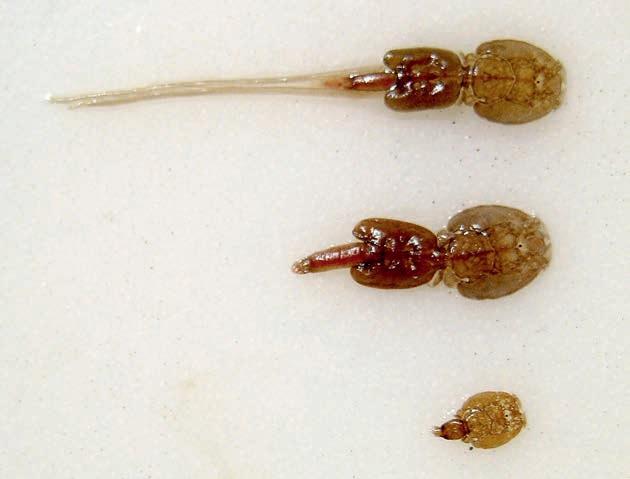
The authors hope that this is the first of many uses of such models to better understand how lice respond to farm treatments at a regional scale. This knowledge can be integrated into farm management regimes to ensure that new control technologies remain effective in the long term.
The paper “A metapopulation model reveals connectivity-driven hotspots in treatment resistance evolution in a marine parasite” can be accessed at: https://doi.org/10.1093/icesjms/fsac202

www.fishfarmermagazine.com 47
COMING IN THE NEXT ISSUE... Fish Farmer In MARCH: • Boats and Barges • Cages, Pens, Nets & Moorings • Women in Aquaculture • Regional Focus - Faroe Islands • What’s New page For more information on opportunities for advertising with editorial content around these subjects please contact: Janice Johnston 0044 (0) 131 551 7925 jjohnston@fishfarmermagazine.com Copy deadline - Friday 3 March Looking to recruit? Fish Farmer Post your vacancy on www.fishfarmermagazine.com Contact Janice Johnston 0044 (0) 131 551 7925 jjohnston@fishfarmermagazine.com
SeaLiceBiology andControl
Edited by Jim Treasurer, Ian Bricknell and James Bron
5mBooks.com

£175

Following the landmark publication in 1993, Pathogens of Wild and Farmed Fish: Sea Lice by Boxshall and Defaye (eds), there have been major advances in both fundamental and applied research helping to further understanding of the biology, control methods and impacts of sea lice. During this 30-year period, we have seen many changes from new genomic research tools and regulatory frameworks to the realisation of environmental impacts from climate change
Whilst the fish farming sector continues to find new and innovative methods for the control of sea lice, these creatures continue to pose a regulatory challenge to the growth of the sector.
A new book aimed at collating this new knowledge, Sea Lice Biology and Control, has recently been published by 5m. The publication of this new volume is very timely when changes to regulatory frameworks for salmonid aquaculture are being considered across the globe. It provides a much-needed and updated authoritative reference on sea lice and their control for scientists, farmed fish professionals, NGOs and regulators alike.
The publication consists of review contributions from more than 73 academic and professional experts. It has 25 chapters organised in four main sections: Sea Lice Biology, Sea Lice Control Methods, Global Impacts and Future Developments (Epilogue).
Whilst the primary content is focused on species of Caligidae affecting Atlantic salmon and other salmonids, it also refers to the high number of species within the family (more than 500). Only 41 species have been reported from farmed fish to date, however, with only a very few from salmonids. Sea lice are a natural part of marine ecosystems in temperate and tropical coastal waters.
The first section, Sea Lice Biology, consists of 14 reviews covering a wide range of topics from fundamental disciplines of sea lice morphology, physiology, behaviour, genomics, associated pathologies and immunology of the host, hydrodynamic-particle modelling, population dynamics and the regulation of veterinary medicines. The potential effects of climate change are touched on – in particular, the poleward expansion of fish-host geographical ranges.
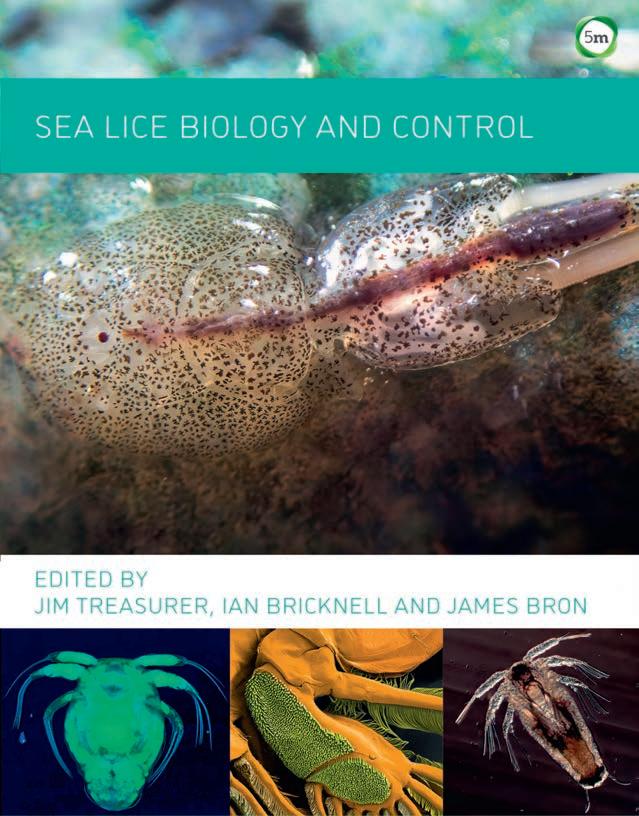
The second section, Sea Lice Control Methods, covers six chapters including advances in sensitivity bioassays for medicines, selective breeding, monitoring methods, biological control, vaccination, optimisation of medicinal treatments, functional feeds, physical prevention and non-medicinal delicing technologies. Innovation in these areas over the past 30 years has been remarkable, and significant investment has delivered advances from research and development. This progress looks set to continue as a multi-tool approach fundamental to integrated pest management.
The third section, Global Impacts of Sea Lice, provides an overview of the consequences of sea lice on global aquaculture, as well as an excellent and balanced review on the interactions of farmed and wild
Top: Sea Lice Biology and Control


Above: Ralph Bickerdike


The Epilogue casts an eye to the future, highlighting: the potential for highly effective new chemotherapeutants; prospects for further rapid advances in physical lice removal from farmed fish, together with filtration to remove lice from the environment; and the case for greater research funding for preventative strategies, including vaccines.
What is certain is that the farmed fish sector and wider community will continue to innovate and collaborate to find new and more effective ways to control sea lice for the benefit of farmed fish and the environment.

www.fishfarmermagazine.com 48 BOOK REVIEW
farmed fish with sea lice.
Ralph Bickerdike PhD is Head of Fish Health & Welfare with Scottish Sea Farms. 5mbooks.com/product/sea-lice-biologyand-control
Readers of Fish Farmer can apply a 30% discount code at the checkout, using the coupon code TFS30.
Anti-fouling & Net Cleaning
All the latest news and updates on Anti-fouling & Net Cleaning from around the world

W&J Knox invests for the future
W&J Knox’s programme of investment and ongoing product development continues apace.
In partnership with Garware Technical Fibres, a braided HDPE net has been developed that can be successfully treated with antifoulant. Following on from small-scale trials, Knox is set to coat cage nets with Steen-Hansen antifoulant for a full-scale field trial this spring.
Scotland’s largest net to date – 200m circular – has now been cleaned by Knox’s super-sized netwasher. The company has also invested in a new, larger service bay to handle these nets and scaled-up equipment. Road transport isn’t the only option, as service nets can be brought in by sea to the nearby Fairlie Pier.

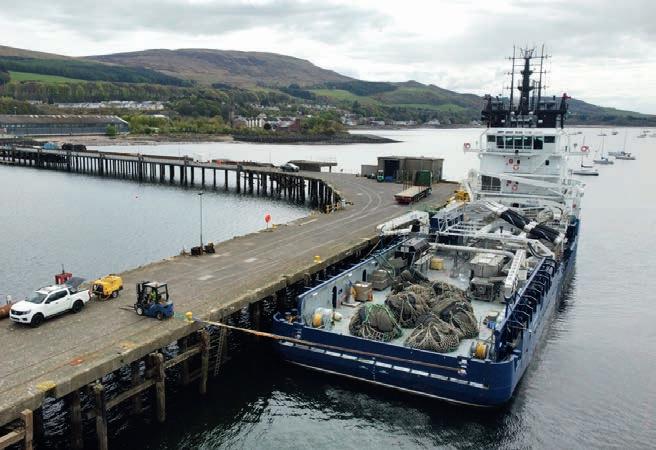
For further details, contact the Knox team on 01505 682511 or see www.wjknox.co.uk
Looking for alternatives to copper
Copper is an effective biocide and has long been used to protect against marine fouling. For fish farmers’ nets, copper coatings can help to reduce the buildup of fouling, but there is now concern that they can also release too much copper into the sea, threatening marine life. As AKVA’s Renato Lillefosse notes in a recent blog, AKVA-owned Egersund Net has reduced its use of copper coatings by 62% and its service site at Austevoll, Norway, now only offers net treatment products without copper. Meanwhile, other net makers such as Steen-Hansen, Brynsløkken and Netkem are also either reducing or reviewing their use of copper, including exploring other biocides that are now available.
Vónin’s new cleaning facility set to open this year
Faroes-based Vónin’s new hall, dedicated to cage net antifouling, coating and drying for the aquaculture sector, is expected to come into use this year. Vónin has over the last couple of years made large investments in upgrading its aquaculture department at Norðskála with a new production hall, warehouse facility, offices and a and larger net washing system that takes account of new/water-based anti-fouling coatings.
Signar Poulsen, Vonin’s Head of Aquaculture (pictured), says: “Water-based antifouling and coating will provide a much more environmentally friendly alternative, which we are keen to offer our customers.”
Water-based substances have special requirements when it comes to drying and the new 930m2 hall has been designed with those in mind.
www.fishfarmermagazine.com 49 ANTI-FOULING & NET CLEANING
Cool reception for frozen salmon
US and Japanese consumers could reduce their carbon footprint and their costs if they were prepared to accept frozen salmon.
By Vince McDonagh

CONSUMERS in Japan and the US are prepared to pay up to 30% more for fresh Atlantic salmon – rather than frozen – because they perceive it tastes better and the quality is higher.

That is one of the key findings of a survey carried on behalf of the Norwegian research organisation Nofima. The same report also suggests that US and Japanese households are probably shelling out more than they need – and increasing their carbon footprint.
One reason for the higher price of fresh salmon is the cost of air freight ,which has rocketed since the Ukraine war, especially to the Far East because airlines will not (or are not allowed to) fly over Russia. For the Americans and Japanese, the premium price is down to the demand that the fish is totally fresh and
has not been thawed out from frozen.
Lifestyle choices can be an important factor when it comes to buying seafood, says the sturdy, but so too are environmental considerations. When told frozen salmon carried a lower carbon footprint because it comes by sea, attitudes of the consumers in the survey were less dogmatic.
Nofima questioned 500 people in both countries in a study intended to gain insights into whether replacing fresh with thawed frozen salmon influences attitudes and willingness to pay.

The study was designed to find new technological solutions that not only reduce the environmental impact, but are acceptable to consumers and can increase income for producers.
The survey on which the report is based was carried out by YouGov using an online questionnaire. It was also

MARKET RESEARCH
www.fishfarmermagazine.com 50
approved by the Norwegian Centre for Research Data.
Nofima researcher Morten Heide, who led the study, believes it is important to try to increase the number of positive associations with frozen then thawed-out salmon in order for this product to succeed in two very important international markets.
He says: “Norwegian salmon is an international success, and is distributed over large parts of the world.
“The distance and willingness to pay to parts of the market is so great that aircraft have been used to offer fresh salmon of high quality to the most distant markets. However, air freight leads to greater greenhouse gas emissions.
“The survey therefore set out to find out how different types of information about salmon influenced the consumer choice, and whether green consumption values and environmentally friendly purchasing behaviour can explain the choices.”

Both Japanese and American consumers thought fresh salmon more attractive than frozen, even though it was thawed out, when buying in supermarkets.
“However, while the American consumers had a more negative attitude towards thawed salmon, it was not such a major issue among shoppers in Japan.”
The willingness in both countries to pay more for fresh was not such good news for the environment, argues Heide.
He says: “From a consumer perspective, many studies show that freshness is one of the most important purchase criteria for seafood.
“Fresh fish is generally perceived to be healthier, of better quality and overall rated better than frozen fish. This can constitute a major barrier to getting business operators to switch from fresh, air-freighted salmon to frozen and thawed salmon transported [in a] more environmentally friendly [way] by boat.”
Faroese fish farmer Hiddenfjord has made the decision to export its salmon by sea to the north-east US, rather than transport it by air freight, but it is still the exception.
Both Japanese and American consumers thought fresh salmon appeared more attractive than frozen, particularly when on display in supermarkets.
The higher price was less of a consideration in America, where consumers had a more negative attitude towards thawed salmon, even though it was 30% cheaper, while the fact that it had been previously frozen was less of an issue for Japanese shoppers.
Morten Heide asserts: “From a consumer perspective, many studies show that freshness is one of the most important purchase criteria for seafood.
“Fresh fish is generally perceived to be healthier, of better quality and overall rated
better than frozen fish. This can constitute a major barrier to getting business operators (buyers) to switch from fresh, air-freighted salmon to frozen salmon transported in a more environmentally friendly method such as by boat.”

However, the survey also found that environmental factors are taken more seriously by the consumers who also buy the most fish.
He says: “There is a group of environmentally conscious consumers in both markets who wanted farmed salmon with a low carbon footprint.
“These consumers bought twice as much fresh and frozen salmon as other consumers, they had the highest green consumption values and a tendency towards, or significantly more, environmentally friendly purchasing behaviour.
“This segment seems to be very interesting as a target group for thawed salmon,” Heide adds.





The researchers at Nofima say it could be interesting to find out whether a focus on “green” values and promoting thawed salmon as an environmentally friendly alternative could change minds.
Bjørn Tore Rotabakk, who looked into the environmental footprint of salmon, says that transport emissions can be reduced by over 90% and total emissions from the value chain cut by around 50% by sending salmon by sea instead of by air.
Providing information to consumers about the product’s carbon footprint had no great effect in either of the markets surveyed, the study showed.
Heide explains: “We also investigated which characteristics were important for changing from fresh to thawed salmon. Factors related to quality such as taste and shelf life were highly ranked, while the carbon footprint was ranked lower.“
He stresses that: “This shows that thawed products must be at least as good quality as fresh to be successful in these markets.“
He also concedes that the survey has its limitations in that neither the American nor the Japanese consumers had taken part in concrete practical tests.
“For example, thawed products from wild salmon are priced much lower than fresh farmed salmon in Japan, which can affect the willingness to pay for thawed farmed salmon,” Heide says.
As far as sensory perceptions go, the results from a blind test with 142 consumers, carried out at in Stavanger showed that consumers did not perceive differences in taste, smell and texture between fresh and thawed salmon – whether served cooked or raw.
According to Nofima, however, further research is needed in order to gain better knowledge about the willingness of consumers to pay for thawed frozen salmon.


Opposite: Japanese consumers prefer their salmon fresh, not thawed; Morten Heide
This page from top: Fresh salmon on ice, Sea�le; Sushi; Frozen salmon steaks
Thawed products must be at least as good quality as fresh to be successful
www.fishfarmermagazine.com 51
”
Land-based Farming & Hatcheries
FishFarmerbrings you all the latest Land-based Farming & Hatcheries news and updates
Ozone solution for RAS

In recirculating aquaculture systems (RAS) with increased stock densities and levels of water reuse, wastes accumulate rapidly. Sophisticated systems are required that can remove both particulate and dissolved organic wastes.
Conventional methods, such as microscreen filters and sedimentation tanks, do not remove fine colloidal solids. Today’s protein skimmers with ozone injection, however, have changed the picture completely. Independent tests done by Norway’s NIVA and Denmark’s DTU document water quality improvement at a new level.
A combination of a protein skimmer and ozone generator is a perfect choice to increase production capacity, using UV and turbidity & COD (chemical oxygen demand) treatment to kill free-swimming bacteria and oxidise dissolved substances. Ozone can be used to remove fine and colloidal solids, dissolved organic compounds and nitrite, and it is also a disinfection media.
www.matkuling.com
Effi cient UV disinfection – round the clock


DESMI manufacture, sell and service pump solutions with high efficiency rates for high flows at low water lift. The pumps are suitable for aquaculture water applications (seawater, freshwater, brackish, water with cleaning agents, etc.) and designed to run 24/7, 365 days a year. Solutions offered include ultraviolet (UV)-based systems for disinfecting water. DESMI’s UV technology has no salinity or temperature limitations, and it ensures flow ranges from as low as 35m³/hour to as high as 3,500m³/hour.


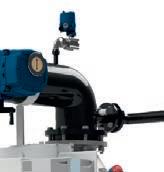
www.desmi.com
Varicon and Aquacare team up to serve US market
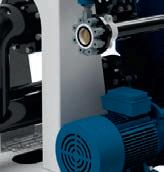

Varicon Aqua Solutions Ltd and Aquacare Environment Inc have announced a formal partnership.
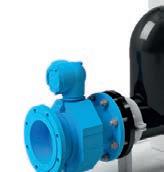
Aquacare Environment Inc is a US-based company supplying controlled environment technology to the aquaculture industry. It is highly experienced in the design and supply of complete fish farms for clients worldwide.
Varicon Aqua Solutions Ltd is the manufacturer of the Phyco-™ range of photobioreactors and the Cell-Hi line of algal nutrients, with more than 30 years’ experience in the algae and aquaculture sectors.
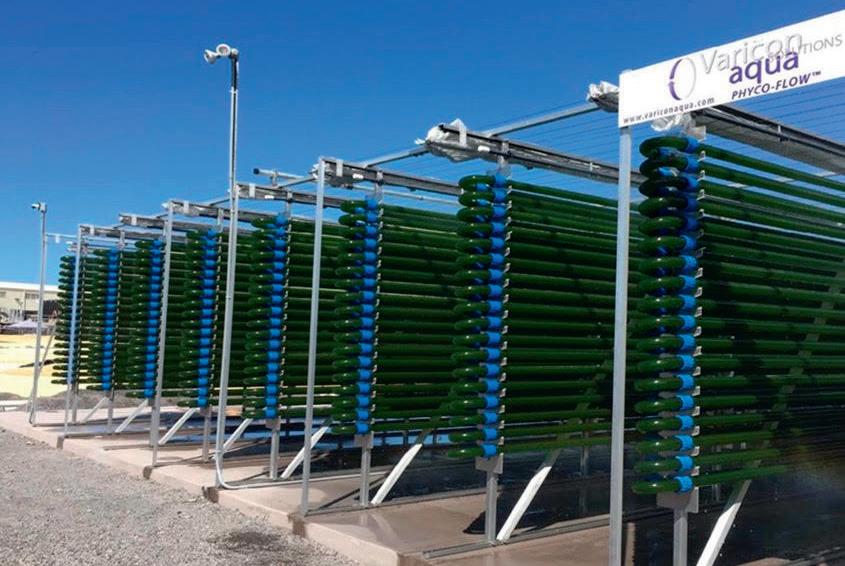

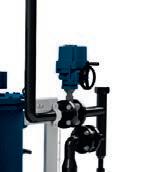

Varicon Aqua will now be represented in the US by Aquacare. In partnership, Aquacare will broaden the number of Varicon products and services on offer to fish farms and hatcheries within the American market.
www.aquacare.com www.variconaqua.com
www.fishfarmermagazine.com 52 LAND-BASED FARMING & HATCHERIES
Plenty in the tank
The ambition is high for land-based farming projects around the world.
By Robert Outram
Investment in land-based salmon farming is taking place globally, from South Korea and Japan to Norway and north-eastern US.
So far, however, Scotland has been left out of the rush to bring salmon farming onshore. Despite investment in state-of-the-art hatcheries and recirculating aquaculture system (RAS) facilities for the smolt stage, the idea of managing the whole cycle from hatch to harvest without the fish ever entering the ocean has yet to take off.
Andrew Robertson, Chief Executive of FishFrom Ltd, aims to change all that. He argues: “Scotland is a fantastic place to have a RAS salmon farm. The annual average ambient seawater temperature, around 12°C, is ideal.”

Less than three years ago, the company’s plans for a RAS salmon farm at Tayinloan, on the Kintyre peninsula on Scotland’s west coast, were well under way. The plans were for a facility with an annual capacity of 3,600 tonnes.

Customers had prepared letters of intent to purchase salmon at agreed prices – a prerequisite of funding. Then, however, Covid-19 arrived. The uncertainty was such that it was not possible to sign such guarantees and the deal fell through.
Now, the company aims to build a smaller-scale facility to demonstrate proof of concept before scaling up to match the scheme’s original ambitions.


Tayinloan is an ideal site, Robertson maintains. It was previously a flow-through fish farm and still has some key consents, including for water abstraction.
Being based in Scotland, with its established salmon sector, means access to existing transport, distribution and feed supply networks.
Above: Tayinloan – how the site will look
LAND-BASED FARMING
Left: Andrew Robertson
www.fishfarmermagazine.com 53
”
Scotland is a fantastic place to have a RAS salmon farm
The farm will use beach wells for its water intake, with the seawater naturally filtered through sand, rather than drawing water from the open sea. Robertson explains: “It’s water that is already percolated and filtered. We will then filter it ourselves and treat it with UV [ultraviolet], but it’s already very clean.”
Being next to the sea and having water at the right temperature also reduces the energy cost, he argues. As a RAS facility, its energy usage will still be quite high, but when it reaches full scale the idea is to use renewable energy from adjacent wind turbines and solar panels situated on site.
Seeing the light
FishFrom has also struck a deal with the University of Trento, in Italy, which has developed a new filtration technology based on light and ozone: “photocatalytic ozonation”.

As well as helping to keep the fish safe and healthy, the filter system is intended to eradicate the trace bacteria of geosmin and 2-MIB, which can give fish reared in RAS systems a muddy flavour.
As the University of Trento explains: “The key to our work is the ability of light to activate a semiconductor, which in turn triggers a series of radical reactions that lead not only to the complete degradation of pollutants, but also to the removal of pathogens such as viruses and bacteria.
“Our study shows that the photocatalytic ozonation system for water purification is an excellent ally for developing sustainable landbased aquaculture, in recirculating systems. In this way, we protect inland and marine ecosystems, which are currently threatened by intensive farming [operations] that have a high environmental impact and make extensive use of antibiotics.”
Robertson says: “The system is easily scaled and retrofitted to existing systems, or provided as an independent unit for new installations. We are seeking to patent the processes of this technology.”
The RAS system itself, Robertson says, will be from an as-yetunnamed, but tried-and-tested, supplier. It is expected to reduce the level of suspended solids down to 5mg/litre, a very high level of purity.
The proposed prototype facility would be stocked with smolts from a third-party supplier for grow-out to harvest size, but the plan for Phase 2 is that the company will control the whole process from egg to harvest.
Why not stick with the flow-through system? Robertson argues that, while companies such as Salmon Evolution are showing that this technology can work, “you are still potentially open to whatever the sea can throw at you.
“Clinically, we will have the benefit of being in complete control of, for example, temperature and the water filtration process.”
That should mean there is no need for expensive treatments to tackle sea lice, viruses and other pathogens.



What happens next depends on funding in a business environment still rather shaken up by the inflation and the ongoing war in Ukraine.
Robertson is hopeful. He says there are a number of pledges

already, but the project still needs a lead equity investor.

While the high-profile challenges faced by certain land-based fish farmers have spooked some investors, Robertson maintains: “There have been some good stories as well. We think we can produce fish commercially just as well as in the sea.”
Salmon in Sweden
“We wanted the oceans to rest. So we built our own.”
That is the slogan and the sales pitch presented by RE:OCEAN, which is building a land-based salmon farm at Säffle, Sweden.
The RE:OCEAN facility, which will handle the entire cycle from hatchery through growout to processing and smoking, is planned to produce 10,000 tonnes annually by 2026.
The project is supported by Sweden’s three leading wholesale companies – Axfood, Coop and ICA – as well as power company Schneider Electric. In December, the European Investment Bank also announced that it is to invest 530m Swedish kroner (SEK) (around £42m) in the project.
Chief Executive Morten Malle says construction is planned to start after the summer and the first phase is expected to take about a year.

AKVA Group will be delivering the RAS technology and Benchmark Genetics has been selected as the supplier of eggs. Schneider Electric will be RE:OCEAN’s main partner supporting energy optimisation. The aim is to power the plant using renewable energy.

Why build a land-based salmon farm in Sweden, with the world’s biggest salmon producer just across the border?

Malle explains: “When we decided to enter this venture, our focus was to solve a few major global and local challenges, as well as producing first-class fish. We focused heavily on sustainability and how to reduce climate impact, and how we could use technology to let the oceans rest.
“This led us to the conclusion [that we should be focused on] land-based fish farming., so we created a sustainable ecosystem on land.”
Market research indicates, he says, that Swedish consumers will be very positive towards home-grown salmon: “Sweden is currently importing a large portion of the salmon consumed here and we want to change that.”
Malle also has wider aspirations: “We










LAND-BASED FARMING
” www.fishfarmermagazine.com 54
We focused heavily on sustainability and how to reduce climate impact
Opposite from top: University of Trento, Italy; Morten Malle, RE:OCEAN
This page from top: RE:OCEAN Säffle site; The Proximar site with Mount Fuji in the background
believe the global market has room for us as well.”
The site at Säffle was chosen because of its access to clean water. Using freshwater rather than having an intake from the sea reduces the risk of introducing pathogens, Malle says.
Further, its location the middle of Sweden means its customers will be no more than six hours’ drive away.
Mall adds: “Lake Vänern has a longstanding tradition of salmon farming, and we want to set the production of the future in close proximity with the knowledge and traditions of the past.”

By including processing, filleting and smoking as integrated elements in the plant, RE:OCEAN aims not only to operate more sustainably with less reliance on road transport, but also to maintain control over quality.
RAS farming is an energy-hungry process and, like all those in the sector, RE:OCEAN has had to recalculate its costs in the light of the energy price hikes over the past year. Malle is confident, however, that the impact of increased energy costs has now been taken into account.
In the shadow of Mount Fuji Japanese consumers pay a premium for fresh salmon air-freighted from Norway and elsewhere, but they should before too long have the option to enjoy sushi and sashimi made with fish reared much closer to home.
Proximar Seafood is developing a landbased salmon farm at Oyama, at the foot of Japan’s iconic Mount Fuji, and last month the company announced that the




facility’s first batch of Atlantic salmon juveniles had started to take feed.
The transfer of Proximar’s first-generation fish to the start feeding department marks a milestone for Proximar’s production team, after the first eggs were successfully inserted in the company’s hatchery in October.
The batch will stay in the first feeding area for around two months, before the next transfer to the nursery. Two more egg batches have arrived and, the company says, all is going according to plan.
Construction on Proximar’s RAS facility started in March 2021. The coming year should see ongoing installation of equipment in the nursery area, which will be commissioned in early March, while the grow-out building is scheduled to be completed in the third quarter.
Project CAPEX (capital expenditure) is in line with previous communication at levels around NOK 200/kg, based on target production capacity, the company says.

Chief Executive Joachim Nielsen says that the spike in energy costs following Russia’s invasion of Ukraine has already been taken into account: “We do have exposure to the energy costs and have [taken this into account] in our forecast. We are actively working on how to secure better visibility, including solar panels on our own roof to bring down the average cost per kw.”
The RAS technology is being installed by Israeli company
www.fishfarmermagazine.com 55
AquaMaof. Nielsen says the choice of supplier was based on AquaMaof’s proven track record in design and water treatment capability, and the success of its land-based salmon farm in Poland, which has been running as a salmon farm for five years.

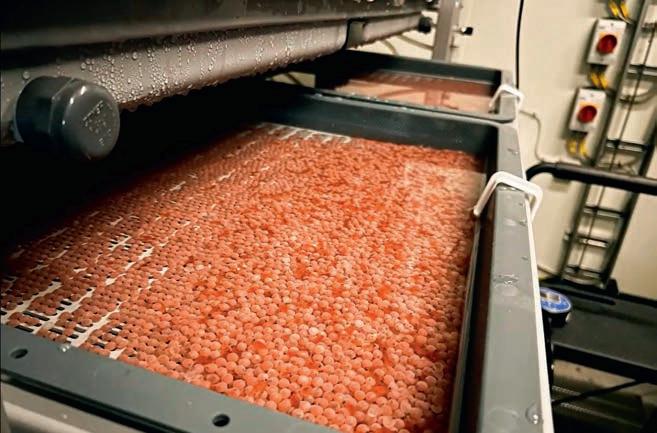
Nielsen goes on: “Simplicity and low complexity are important aspects, reducing sources of failure and the need for maintenance, and with a lesser requirement for specialised skills to operate and maintain it. We believe low complexity is an important key for operational success.”
Why a land-based farm? Japan is a big market for salmon, but the species is not native to that part of the world, while rugged geography and high summer water temperatures mean Japan’s coast is not ideal place for salmon. Japan’s regulatory regime would also make it hard to obtain permission for fish farming at sea or in rivers and lakes.
The choice of Oyama was driven partly by its proximity to greater Tokyo, with a population of 38 million people within a oneto two-hour drive, as well as its ready supply of high-quality drinking water.
Nielsen says: “We have received strong support from the local municipality and prefecture.”
By 2027, Proximar expects the plant to reach its full annual production volume of around 5,300 tonnes.
Maine events



The state of Maine, in the north-eastern corner of the US Atlantic coast, has seen mixed fortunes for the businesses looking to raise fish in land-based farms
As reported in previous issues of Fish Farmer, The Kingfish Company has made good progress in clearing the various planning and regulatory hurdles for its proposed farm near Jonesport, Maine.
In October, the Jonesport Planning Board gave initial approval for Kingfish’s local building permit. The permit conditions were formally approved and adopted in a final meeting of the board in late November of last year.
The Kingfish Company is planning to build a RAS facility with the capacity to produce between 6,000 and 8,000 tonnes of yellowtail kingfish.
Meanwhile, it’s also been good news for Nordic Aquafarms, which is looking to build a salmon farm near the town of Belfast, Maine, and has faced a degree of opposition.
Like The Kingfish Company, Nordic Aquafarms has faced its share of campaigners and hostile lawsuits. Its initial permit application was drafted in its final form back in 2019. Last September, the company fought off an appeal over the permits it has been granted only to face yet another legal battle, this time over title to the intertidal mudflats that will be crucial in supplying the facility’s seawater.
The company won that case too. Spokeswoman Jacqueline Cassida says: “We are now awaiting the Supreme Court (Law Court) ruling regarding the intertidal lawsuit. That is the very last stop in the courts process and once we have that, we’ll be proceeding with our construction and engineering plans.
“Production won’t happen this year, as we’ll just be breaking ground in the fall. It’s been a bit of a journey, but we are pleased to have had the opportunity to make strong connections within our community, working with local schools, and supporting local events and workforce development programmes.”
Nordic Aquafarms is also looking to build a RAS farm in Humboldt County, California. Cassida says: “We are in the midst of the permitting process. We had received two approvals in August 2022 –the Coastal Development Permit for Terrestrial Development and the California Environmental Quality Act.
“Currently we’re looking for approval from California’s Department of Fish & Wildlife for salmon, as well as our Air Quality Permit. We should be having a hearing in May or June regarding the Ocean Outfall part of the Coastal Development Permit. Lots of work yet to be done there!”
The progress comes despite the departure of the company’s President and co-founder, Erik Heim, and his wife, Executive VicePresident Marianne Naess. The pair surprised industry observers when they quit in July, and they have since formed their own aquaculture consultancy, Xcelerate Aqua. Nordic Aquafarms’ new Chief Executive is Bernt Olav Rottingsnes.


The ambition and determination are clearly there in RAS ventures internationally. Now, the world waits to see which of them will deliver a profit.

LAND-BASED FARMING
www.fishfarmermagazine.com 56
This page from top: Proximar tanks; Joachim Nielsen, CEO Proximar; Proximar eggs
Simplicity and low complexity are important aspects
”
Improved water quality using Freshwater Protein Skimmers





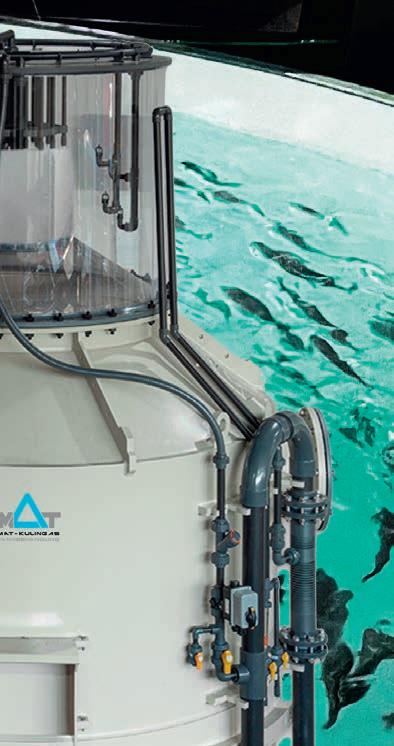



Tested by independent laboratory (DTU-Danish Technical University & NIVA- Norwegian Institute of Water Research). Full ow Protein Skimmer at low energy consumption to remove excess protein at RAS farms. Norwegian technology and 5 year warranty at competitive pricing.





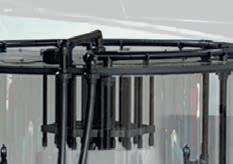
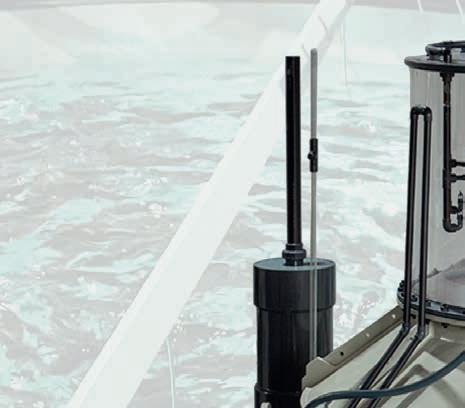



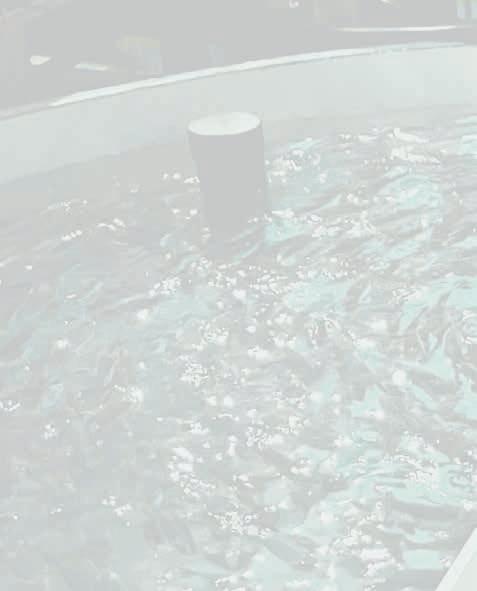
NIVA RESULTS:
• 89% of particles
• 75% in particle volume














• 75% of total BODS
• 79% in turbidity


• 90% in bacterial activity



• 84% of BOD-part
• 58% of COD tot
info@matkuling.com (+47) 90 86 53 01 www.matkuling.com
treatment equipment & specialists in the aquaculture industry
We are a manufacturer of water
OZONE GENERATOR
RAS SKID DRUM FILTER
Do it yourself
One person’s clutter is another’s working RAS facility, as a team at the Leibniz Institute in Berlin have demonstrated


Aquaculture research facilities may have recirculating aquaculture systems (RAS) equipment (tanks, pipes, filter) or out-of-date research systems still in storage. It would be easy to dismiss kit like such as this as clutter, but the Berlin-based Aquaculture team of Leibniz Institute of Freshwater Ecology and Inland Fisheries (IGB) in the Forschungsverbund Berlin e.V. believes that this could be a mistake. Technical Services employee Laura Klatt and her colleague, PhD candidate Christopher Shaw, have developed and built a modular, functioning RAS with the remnants of obsolete equipment. Both completed their master’s in Fishery Science and Aquaculture at IGB and worked within the aquaculture industry for several years. After returning to IGB, it was time to apply the skills they had acquired during their time in the private sector. Klatt says: “It is possible to build a low-cost system by reusing parts from older systems or leftover equipment from past experiments. This is sustainable and keeps the costs low.”
In this particular case, 16 identical experimental RAS were designed by recycling available equipment parts. The project involved recycling 16 carbon-fibre rearing tanks that had been out of use for approximately five years. Based on the tank volume (180 litres per rearing tank), the dimensions of the sedimentation units and moving-bed biofilters (MBBR) were calculated. Both are lowtech on purpose in order to keep the costs down.
The water goes from the pump sump of the MBBRs into the rearing tanks. From here it flows into the settling tanks, where solids are removed. From the settling tanks the water flows back into the MBBRs, where biological treatment (nitrification) takes place.
All parts of the system can be drained into the sewer system by a central wastewater pipe and it is possible to automatically refill the system via float valves.
The rearing tanks and the MBBRs are supplied by pressurised air from the central air supply.

Furthermore, it is possible to connect all individual systems in series into one big RAS. This enables us to synchronise the biofilters and create equal starting conditions before initiating trials.
The in-house design and build of the facility has actually just cost a fraction of what a turnkey RAS from a professional manufacturer would have cost. This
 Above (from left): Laura Kla� and Christopher Shaw with the RAS setup Opposite from top: Water circula�on in the RAS; Setup for the IGB RAS
Above (from left): Laura Kla� and Christopher Shaw with the RAS setup Opposite from top: Water circula�on in the RAS; Setup for the IGB RAS
www.fishfarmermagazine.com 58 RAS SYSTEMS
includes the big savings on external labour costs as, in this case, the system is put together by in-house employees.


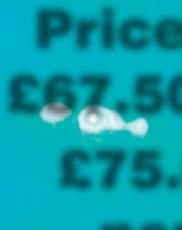






The biggest challenge was to determine the long-term purpose of the facility before the construction phase so that a variety of experimental approaches as well as ongoing operation could be supported.

The RAS has now been continuously operating for a year, and it has been used for a number of African catfish and Nile tilapia feeding trials under near-industrial rearing conditions. The results show that the system is fully operational, comparably inexpensive and reliable, even in longerduration trials.

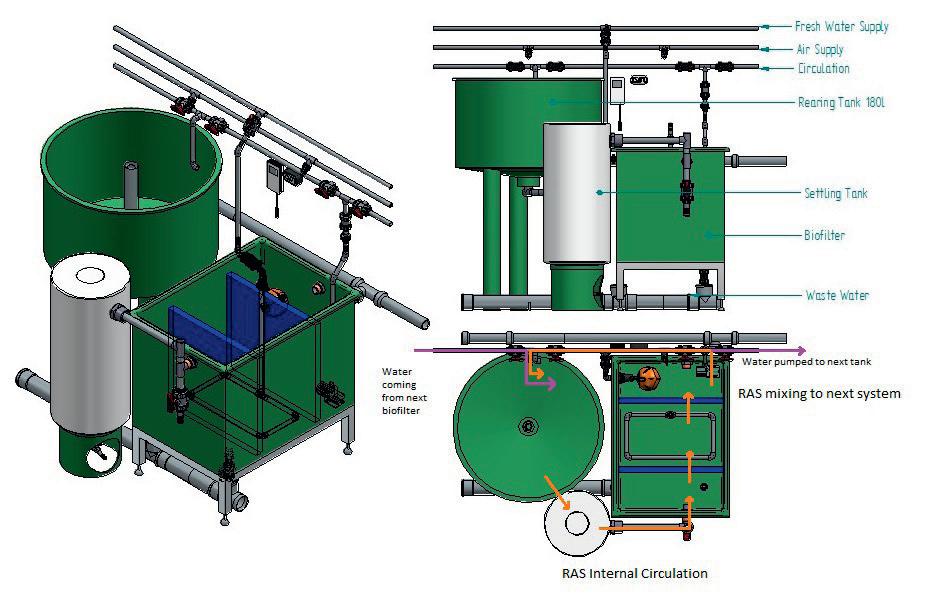
Klatt and Shaw conclude: “We would











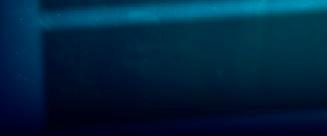
















like to encourage technicians and scientists, and perhaps even students, to go out and have a close look at their decommissioned aquaculture facilities and storage rooms. Even with limited resources, there might be a chance to contrive and create something that opens up new possibilities for your future research.”






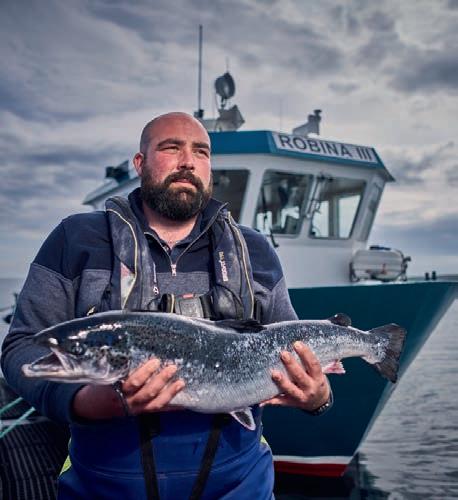







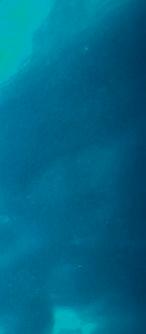



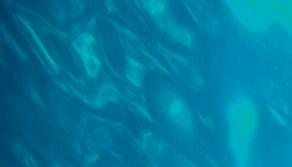


It is possible to build a low-cost system with reused parts from older systems or left over parts www.fishfarmermagazine.com 59
” Magazine Fish Farmer SERVING WORLDWIDE AQUACULTURE SINCE 1977 E: subscriptions@warnersgroup.co.uk T: 01778 392014 Fish Farmer GREEN-ISH? The new deal at Holyrood BOATS Sector review NET BENEFITS Containment solutions AQUA NOR The trade show returns in style SEPTEMBER 2021 Bright futures Great careers in aquaculture ff09 Cover-final.indd 13/09/2021 18:34:47 SUBSCRIBE NOW! Prices from £67.50 for DD £75.00 for non DD (INCLUDING P&P) VERSIONPRINTED
Management, Mo
All the latest news and updates on Management, Monitoring & Analysis from around the world
Realfish offers real benefits
RS Aqua partner Innovasea recently introduced Realfish Pro, an advanced software solution for marine farm management. This revolutionary online platform gives managers a live view and analysis of key water parameters pen by pen, sends alerts when levels change, monitors equipment health, and can be used to automatically control aeration and oxygenation diffusion systems. Combining monitoring and control in one central system enables producers to sustainably maintain excellent fish health while remaining cost efficient in the long term. Find out more at www.rsaqua.co.uk/AIS
Fishwell Technology gives the OK to cooperation deal
Norwegian aquaculture-focused software company Fishwell Technology has entered into an cooperation agreement with OK Marine, a subsidiary of the Egersund Group. OK Marine has also taken a controlling stake in Fishwell and will be represented on the company’s board.


OK Marine will be responsible for the sale and distribution of their joint product GOODeye, a software system that digitises and automates the counting and analysis of dead fish based on each individual species such as salmon or trout. GOODeye can also be used to analyse fish behaviour to detect any signs of stress, especially during any operations that require handling. Pictured: Fishwell CEO Kjell Wiik
Funding pledged for Malaysian HABs project
The Scottish Association for Marine Science (SAMS) has been awarded a grant to help continue its work helping to provide an early warning of harmful algal blooms (HABs) for Malaysian aquaculture operators. The grant is from the Scotland Asia Partnerships Higher Education Research (SAPHIRE) Fund, financed by the Scottish government and run by the Royal Society of Edinburgh.

SAMS has been working on a website and mobile app, based on a model already operating in Scotland, which compiles monitoring data from farmers.
Professor Keith Davidson, Associate Director with SAMS, says: “HABs are just as much of a problem in Malaysia.” He hopes he and his colleagues will be able to meet industry representatives in Sabah, Malaysia, this May.
www.fishfarmermagazine.com 60 MANAGEMENT, MONITORING & ANALYSIS
nitoring & Analysis
Aquaculture AI firm reels in $8m in equity funding for growth
A Canadian technology business offering data and automation solutions to land-based fish farmers has raised more than US $8m (£6.5m) in funding. The company’s Series A funding round was led by Buoyant Ventures.

ReelData AI has developed a product, ReelAppetite, that identifies real-time population appetite and adjusts feed levels accordingly. This technology, ReelData says, has helped save companies up to US $2m-3m (£1.6m-£2.4m) on wasted feed per 10,000 tonnes annual production.
ReelData’s latest offering is ReelBiomass, which it says is the only biomass-estimation camera system built from the ground up for recirculating aquaculture systems (RAS) and flow-through facilities.
US research forecasts algal blooms in Lake Erie
A team of researchers based in the US has used artificial intelligence to create a model that, they hope, can be used to predict harmful algal blooms (HABs) in freshwater lakes. The study, published in the Nature journal CommunicationsEarthandEnvironment, involved inputting global climatic patterns into a machine-learning-based framework to give a seasonal prediction of HABs in Lake Erie on the border between the US and Canada. The model combines traditional nutrient-loading indices with climatic data to provide a more accurate forecast. The research was led by a team at the IBM Thomas J Watson Research Centre.

Bluefront invests in Seacloud’s technology


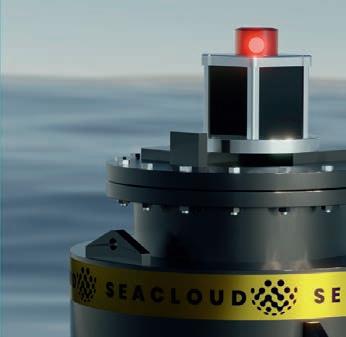
Seafood investor Bluefront Equity has taken a majority stake in Seacloud AS, which delivers cloud-based software and sensor technology for the fish farming and maritime industries. Seacloud has developed proprietary software that can communicate with all types of sensors, irrespective of the type of equipment. In addition, the company sells different sensor technologies, including environmental stations that provide a complete overview of the ocean environment, weather stations and level measurement of all types of tanks and silos.
Kjetil Haga, partner at Bluefront Equity, says: “There is an almost incomprehensibly large and continuously increasing amount of sensor data in the seafood industry. Seacloud aggregates the data that the different sensors capture and converts it into meaningful information, which in turn forms the basis for making smart operational decisions.”
www.fishfarmermagazine.com 61
What’s NEW
Monthly update on industry innovations and solutions from around the world
Monaco bets on underwater technology
A new project is deploying remote underwater systems to document the status of marine wildlife in the Mediterranean Sea. Launched by a consortium comprising the Prince Albert II of Monaco Foundation, Community Jameel, the Monégasque Association for the Protection of Nature and Blue Abacus (the technology company of Professor Jessica Meeuwig of the University of Western Australia in Perth), the project uses baited remote underwater video systems (BRUVS) to film, count and analyse populations of fish and other marine species. By conducting two surveys over the span of one year, the project will generate robust data to inform Monaco’s efforts to conserve marine wildlife.

NLB is readily available across the UK and Europe
IN early December 2022, NLB opened a dedicated branch in the UK. The company’s new Darlington-based facility is well located to serve UK-wide NLB customers. With close to 2,000sq m of space, the branch will house a range of NLB pump units (for quick sale or rental), and an increased inventory of accessories and spare parts, with plenty of room for demonstrations, training sessions and service support. The facility will be the European hub for supporting NLB’s growing influence within the aquaculture industry, since having reliable inventory on hand and specifically trained technicians is vital in this time-critical market. www.nlbcorp.com
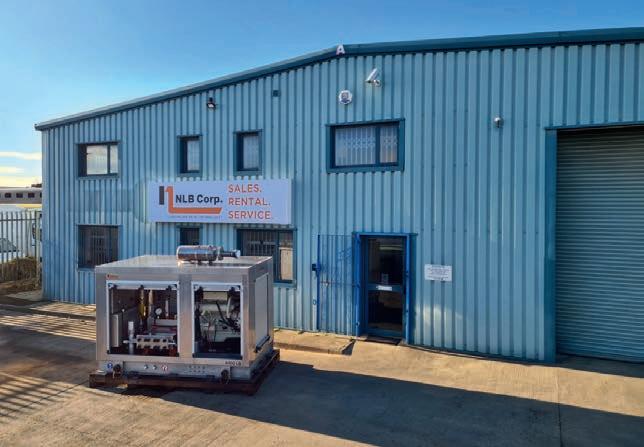
Guardian set to be world’s first uncrewed rescue boat
COASTAL Workboats and Scottish-based technology innovator Zelim have teamed up to develop an autonomous search and rescue craft. The “Guardian Class” Fast Rescue Craft (FRC) vessel is currently under construction at Coastal Workboats’ Devon yard.

Guardian will feature remote command and control capability, making it the world’s first uncrewed rescue vessel. The design is aimed at providing an enhanced capability to respond to person-overboard incidents and provide close standby cover for offshore operations.
Garware’s X2 AQUA NEO aquaculture rope range offers strength and lightness
GARWARE Technical Fibres has developed a new series of highperformance ropes for aquaculture: X2 AQUA NEO. The new range is made up of polyolefin ropes that are resistant, light and safe, with greater resistance and less elongation than its predecessor, X2 Aqua. X2 AQUA NEO is faster handling, with lower installation costs. The approximate weight reduction for the same resistance is around 20% of traditional ropes. Garware says this recent optimised version is ideal for exposed areas with deep water, strong currents and winds.
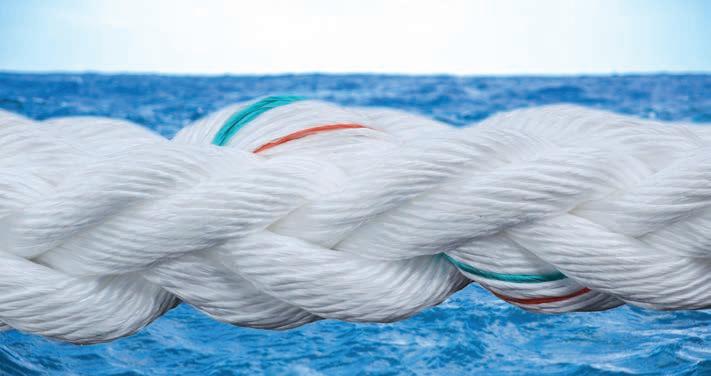
PRODUCTS AND SERVICES
www.fishfarmermagazine.com 62
Industry DIARY
The latest aquaculture events, conferences and courses

MARCH 23
AQUAFUTURE SPAIN
en.aquafuturespain.com
Santiago de Compostela, Recinto
FIG-Silleda, Spain
March 28-30, 2023
APRIL 23
LACQUA23
www.was.org
Panama City, Panama

April 18-21, 2023
SEAWORK
www.seawork.com
Seawork is a “one stop shop” providing access to the commercial marine and workboat business.

Southampton, United Kingdom
June 13-15, 2023
SEAGRICULTURE EU 2023
seagriculture.eu
12th International Seaweed Conference EU organised since 2012.
Trondheim, Norway

June 21-22, 2023
AUGUST 23
AQUA NOR 2023
www.aquanor.no/en/ Trondheim, Norway
August 22-25, 2023
OCEAN BUSINESS
www.oceanbusiness.com
The hands-on Ocean Technology Exhibition and Training Forum.
Southampton, United Kingdom April 18-20, 2023
MAY 23
BLUE FOOD INNOVATION SUMMIT
www.bluefoodinnovation.com
London, United Kingdom
May 23-24, 2023
WORLD AQUACULTURE 2023
www.was.org
Darwin, Northern Territories, Australia
May 29-June 1, 2023
JUNE 23
THE SAGB’S 53RD ANNUAL CONFERENCE AND DINNER
www.shellfish.org.uk
June 6 - 7, 2023
SEPTEMBER 23
AQUACULTURE EUROPE 2023
www.aquaeas.org
The European Aquaculture Society’s annual conference focuses on “Balanced Diversity in Aquaculture Development”.
Vienna, Austria

September 18-21, 2023
SEAGRICULTURE
USA 2023
seagriculture-usa.com
2nd International Seaweed Conference USA. Portland, Maine, USA (TBC)
September 2023 (TBC)
NOVEMBER 23
AFRAQ 2023
www.was.org/meeting/code/AFRAQ23
Lusaka, Zambia
November 13-16, 2023
FEBRUARY 24
AQUACULTURE AMERICA
www.was.org
San Antonio, Texas, USA
February 18-21, 2024
MAY 24
AQUACULTURE UK 2024
www.aquacultureuk.com
Aviemore will once again be the venue for this biennial trade fair and conference. It is undoubtedly the most important aquaculture exhibition held in the British Isles. The show has a tremendous following and with increased investment for 2024 it promises to reach even further across the broader aquaculture markets in both the UK and Europe.
Aviemore, United Kingdom
May 14-15, 2024
JUNE 24
AQUA 2024
www.aquaeas.org - www.was.org
Stavanger, Norway
June 24-28, 2024
NOVEMBER 24
WORLD AQUACULTURE 2024
Oman
November 2024
INDUSTRY DIARY www.fishfarmermagazine.com 63














































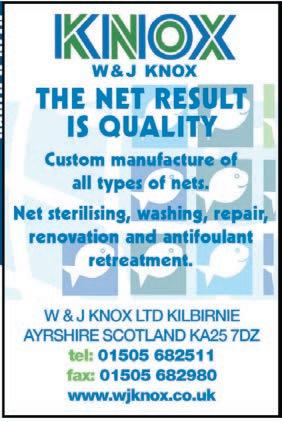
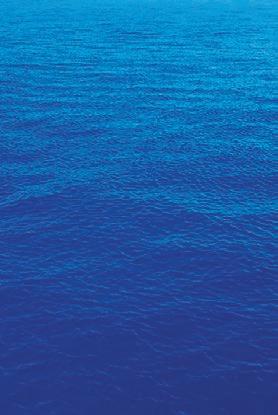
















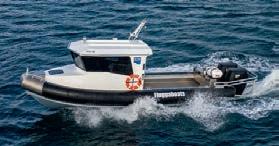







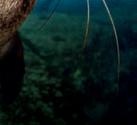







Turning conventional approaches... upside down Take control Clynav will turn the way you see PD control upside down. Clynav is like no other PD vaccine it uses Elanco’s unique DNA plasmid technology and has become the leading choice for PD protection in Norway. Clynav is delivered intra-muscularly without the need for an adjuvant. So, with Clynav, you can rest assured of excellent PD protection without the risks associated with Take back control of PD with Clynav. It will change your point of view, for good. Clynav brings fresh hope in the fight against pancreatic disease Clynav contains pUK-SPDV-poly2#1 DNA plasmid coding for salmon pancreas disease virus proteins: 5.1 9.4 µg. Legal category in UK. For further information call Elanco Animal Health on +44(0)1256 353131 or write to: www.elanco.co.uk Turning conventional approaches... upside down Take Clynav will turn the way you see PD control upside down. Clynav is like no other PD vaccine it uses Elanco’s unique DNA plasmid technology and has become the leading choice for PD protection in Norway. Clynav is delivered intra-muscularly without the need for an adjuvant. So, with Clynav, you can rest assured of excellent PD protection without the risks associated conventional vaccines. Take back control of PD with Clynav. It will your point of view, for good. Clynav brings fresh hope in the fight against pancreatic disease Clynav contains pUK-SPDV-poly2#1 DNA plasmid coding for salmon pancreas disease virus proteins: 5.1 9.4 µg. Legal category in UK. For further information call Elanco Animal Health Elanco UK AH Limited, First Floor, Form 2, Bartley Way, Bartley Wood Business Park, Hook RG27 9XA, United Kingdom. For further information consult the product SPC. Clynav, Elanco and the diagonal Use medicines responsibly www.noah.co.uk/responsible. Advice should be sought from the Medicine Prescriber. PM-UK-21-0435 04.2021 www.elanco.co.uk CLYNAV Upside Down Ad 297x210 2021.indd 1 Turning conventional approaches... upside down Clynav brings fresh hope in the fight against pancreatic disease. Take back control of PD with Clynav. It will change your point of view, for good. www.elanco.co.uk Breeding for the future with genomic precision • All-year delivery • Biosecurity • At the forefront of genetic R&D bmkgenetics.com +1 407 995 6490 AquaticED.com DESIGN EQUIPMENT SOLUTIONS We are your source for professional aquatic and aquaculture products and services. Contact us today to learn more! AQUA SOURCE DIRECTORY www.fishfarmermagazine.com 64 GET YOUR BUSINESS NOTICED FOR A WHOLE YEAR, OR SIX MONTHS! Air Compressors Analytical Services Aquaculture Equipment Boat Builders Genetic Services Fish Health Anti-predator nets Bird Nets Rigged Cages sales@fisanet.com.pe www.fisa.com.pe +51970472957 Nets & Cages Nets & Cages PUMPS FOR AQUACULTURE Specialists in long-lasting, corrosion-resistant pumps, with high uptime and low energy consumption. www.lykkegaard-as.com Propeller Pumps Animal Nutrition Robust fish Strengthening fish defences If not us, who? If not now, when? WE MAKE IT POSSIBLE • OVN Optimum Vitamin Nutrition® • Rovimax® (nucleotides) • Biotronic® (enhanced organic acids) • Digestarom® (essential oils) • Levabon® (autolysed yeast) Follow us on: www.dsm.com/anh Nutritional Analytical Service A commercial analytical service providing advice and analysis to the aquaculture and food and drink sectors across the world. Please contact us for a full list of analytical tests offered. James Dick: j.r.dick@stir.ac.uk Fiona Strachan: fiona.strachan@stir.ac.uk BE THE DIFFERENCE SAFE, GENTLE AND EFFICIENT HANDLING OF LIVE FISH Boat Builders Tel: (+44)1957 711 881 Email:info@fluggaboats.co.uk www.fluggaboats.co.uk HDPE collar, aluminium hull. ALL ELECTRIC, diesel or petrol power ALL THE ADVANTAGES OF A RIB, JUST HARDER Our new generation, Comply with requirements Create conditioned output into Have low duty help deter seals, Your first choice Get in touch to Predators BUT WE’RE Our new generation, Comply with both requirements Create conditioned output into the Have low duty help deter seals, Your first choice Get in touch to set Predators BUT WE’RE Our new generation, award-winning Comply with both Marine requirements Create conditioned avoidance into the water than low duty cycles, low help deter seals, Your first choice for animal Get in touch to set up a trial: Predators BUT WE’RE Our new generation, award-winning acoustic deterrents Comply with both Marine Scotland EPS and U.S. MMPA requirements Create conditioned avoidance so we can put far less acoustic output into the water than older barrier systems Have low duty cycles, low average volume and low frequency to help deter seals, while better safeguarding cetaceans Your first choice for animal welfare. Get in touch to set up a trial: acedeterrents@aceaquatec.com Predators may be smart BUT WE’RE SMARTER Our new generation, award-winning acoustic deterrents • Comply with both Marine Scotland EPS and U.S. MMPA requirements Create conditioned avoidance so we can put far less output into the water than older barrier systems Have low duty cycles, low average volume and low help deter seals, while better safeguarding cetaceans Your first choice for animal welfare. Get in touch to set up a trial: acedeterrents@aceaquatec.com Predators may be smart BUT WE’RE SMARTER Our new generation, award-winning acoustic deterrents • Comply with both Marine Scotland EPS and MMPA requirements Create conditioned avoidance so we can put far less acoustic output into the water than older barrier systems Have low duty cycles, low average volume and low frequency help deter seals, while better safeguarding cetaceans Your first choice for animal welfare. Get in touch to set up a trial: acedeterrents@aceaquatec.com Predators may be smart BUT WE’RE SMARTER Our new generation, award-winning • Comply with both Marine Scotland requirements Create conditioned avoidance so output into the water than older Have low duty cycles, low average help deter seals, while better safeguarding Your first choice for animal welfare. Get in touch to set up a trial: acedeterrents@aceaquatec.com Predators may BUT WE’RE SMARTER Our new generation, award-winning acoustic • Comply with both Marine Scotland EPS requirements Create conditioned avoidance so we can output into the water than older barrier systems Have low duty cycles, low average volume help deter seals, while better safeguarding Your first choice for animal welfare. Get in touch to set up a trial: acedeterrents@aceaquatec.com Predators may be BUT WE’RE SMARTER info@aceaquatec.com www.aceaquatec.com Our new generation, award-winning acoustic Comply with both Marine Scotland EPS requirements Create conditioned avoidance so we output into the water than older barrier Have low duty cycles, low average volume help deter seals, while better safeguarding Your first choice for animal welfare. Get in touch to set up a trial: acedeterrents@aceaquatec.com Predators may be BUT WE’RE SMARTER
Anti-Predator












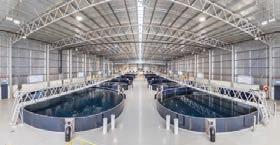


























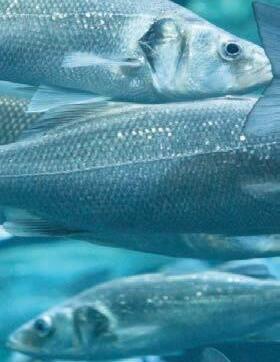
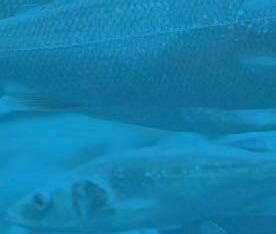



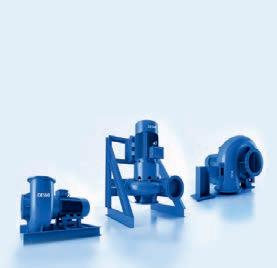








Design • Supply • Build • Support Engineered Prefabricated Modular Advanced RAS A wide range of applications, including lobster, oyster, mussel and prawn cultivation Artificial seawater free from bacteria, algae and toxic detritus found in seawater 15kg and 25kg bags www.fishfarmermagazine.com 65 Call Janice on 0131 551 7925 or email: jjohnston@fishfarmermagazine.com £895 6 MAGAZINES FOR £595 Fish processing equipment Industrial washing & drying www.cretel.com Langerbruggekaai 15 9000 Ghent - Belgium info@cretel.com PROCESSING SOURCE DIRECTORY Processing Machinery Processing Equipment Salt RAS Equipment Recirculation Transport & Logistics Everyvalve Ltd Valves & Fittings Metal & Plastic BUTTERFLY AUTOMATION United Kingdom - EN6 1TL (44)-01707-642018 Fax 646340 sales@everyvalve.com Valves blutan Se ng new standards for RAS tanks balmoral‐blutanq.com Jonathan.smith@balmoral.co.uk Pumps & Systems Pumps & Systems PROVEN TECHNOLOGY PUMPS & PUMPING SOLUTIONS Disinfecting water for aquaculture Sensors Pumps & Systems Socorex® ultra 1810: • Volumes down to 0.02 mL • High performance • Extra light socorex.com FISH SYRINGES
Negotiating in bad faith
By Nick Joy
Writing a good article for a magazine should provoke interest, debate and most of all discussion, otherwise it’s just noise in a noisy world. Heather Jones’ article in the last issue (“Common ground”, Fish Farmer, January 2023, page 36) was a good example of a point of view which should elicit discussion.
I hope Heather will forgive me for suggesting the following precis: the industry’s performance has massively improved, so critics should listen and there is plenty of reason to believe that a positive outcome could occur between the two sides.
Having written considerably over the years about this, and having been involved in such initiatives as the Tripartite Working Group, I feel fairly qualified to discuss these things. In my view, the wild lobby never had good cause. Far worse, I don’t think they were ever interested in the facts.
I have debated with their advocates from estate owners to heads of fisheries organisations. I found, repeatedly, that the truth was hidden beneath a veil of “reasonability”. When asked if they wished to get rid of the salmon farming industry, they would reply that they wanted it to exist, but for it to have no effect on them – of course, implying that it was indeed having an effect.
The other one that I used to manage to get them to admit was the reason why they attacked us so often. When really pushed hard, they admitted it was because we are an easy target.
Logically, you would think that it would be madness for us not to work together, but here is where the bad faith comes in. Every time an initiative was created to balance the needs of fish farmers and th wild fish lobby, the latter group actively subverted it.
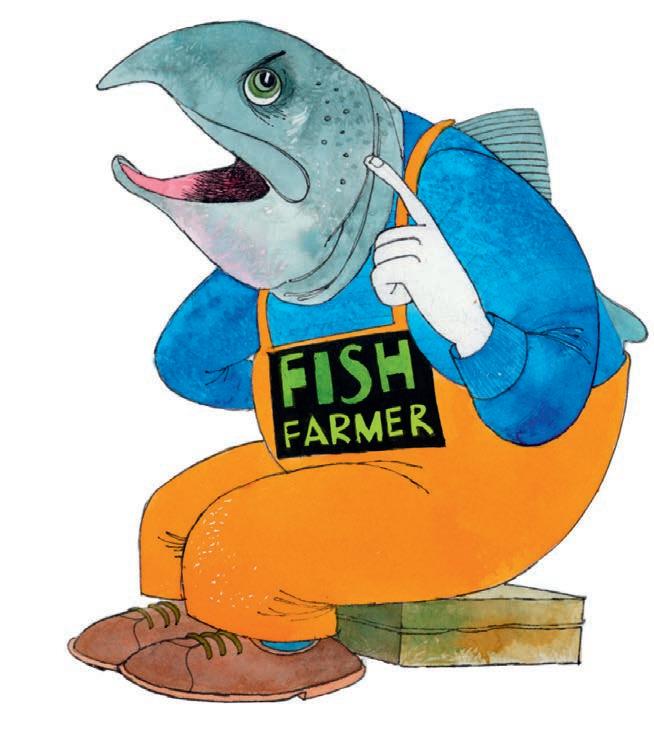
The best example of many was the subversion of the Tripartite Group under Paul Brady. Originally with a remit to balance the needs of the two sectors, it was not long before, in an open meeting, Brady openly stated that the group had been created to deal with the concerns of the wild sector. I was utterly appalled because the people on the opposite side of the table had repeatedly been saying they wanted to work with us. If you act in bad faith in a negotiation, you will create nothing but bad faith.
Take, for instance, the issue of escapes. A long while ago, Loch Duart’s broodstock were taken for genetic analysis. To our enormous pleasure, it was found that our stock, whilst identifiable, were not very different from Scottish wild stock.
I spoke with a very senior person in the wild sector to discuss the issue of escapes, naïvely thinking that they would approve. Not a bit of it: they disapproved of Norwegian stock because in their view it would cause dramatic effects on the wild population, but also disapproved of Loch Duart’s because they would not be able to detect the changes!
The problem with this type of thinking is that it creates disincentives to change. Negative criticism with no proposal for viable alternatives is useless. The first 20 years of wild lobby criticism achieved nothing because it offered nothing.
If you cannot trust the people you are talking to, you disclose neither the issues in your business nor any possible solution. Far worse, in fact, there is no incentive to get rid of practices that are less good. So the only way for true interaction between the two industries is to deal with the bad faith first. Hidden agendas have to be exposed and both sides must agree that they will make no statement that cannot or will not be adhered to without clear prior
notice and discussion. I do not dispute that this process will be tough, nor that it will take courage and time, but to suggest that facts will change the position is naïve, as my fellow columnist Dr Jaffa, I am sure, will support.
It takes a visionary to end protracted disagreements and it is important to remember that we often misjudge people. A long time ago, I was giving a talk at Seafood Choices in Seattle about our salmon and mentioned that in the spring it was like lamb, tender with a gentle flavour. By the autumn the flavour had matured and in the winter it was at its strongest. I mentioned that I loved the autumn flavour best.
I was used to people coming to talk to me at the end of the talk, especially in places such as Seattle, where salmon farming was very unpopular. Usually it was not a friendly experience. In this case, my back stiffened as a gentleman came towards me. He was wearing a four-cornered hat. His beard and moustache were waxed to extreme points and he was wearing a silk jacket. I readied myself for trouble.
He asked: “Is it true that your salmon changes flavour through the year?”
I replied: “Absolutely.” His reply floored me. “In which case,” he said, “it’s a real food!” He walked away quite happy and I realised that we need to talk more about how what we produce is like other real foods.
www.fishfarmermagazine.com OPINION – INSIDE TRACK 66
Negative criticism with no proposal for viable alternatives is useless
”
Driving innovation
IN HUMANE FISH SLAUGHTER
Our award-winning range of in-water electric stunners are backed by the UK’s leading supermarkets and producers.

• 100% stun efficacy





• Less stress, gaping, and bruising
• Suitable for salmon, trout, seabass, seabream, prawns, yellowtail, and smolt
“This is the best solution in the market in terms of animal welfare standards and environmental impact.”
ENTRIESNOWOPEN


















The awards event for the global aquaculture community

Jarl van den Berg M.Sc















































































































































































































































































































































 Top: Fish farm, Loch Tay
Above: Ornsay
Lighthouse, Loch Hourn
Top: Fish farm, Loch Tay
Above: Ornsay
Lighthouse, Loch Hourn































































































































































































































































 Above (from left): Laura Kla� and Christopher Shaw with the RAS setup Opposite from top: Water circula�on in the RAS; Setup for the IGB RAS
Above (from left): Laura Kla� and Christopher Shaw with the RAS setup Opposite from top: Water circula�on in the RAS; Setup for the IGB RAS


























































































































































